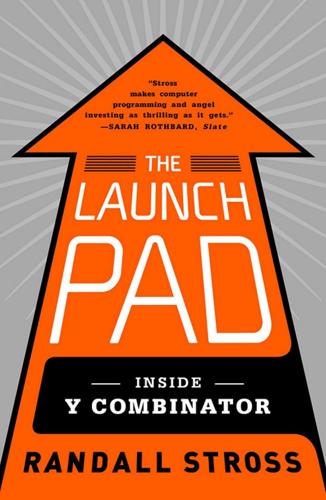
The Launch Pad: Inside Y Combinator, Silicon Valley's Most Exclusive School for Startups
by
Randall Stross
Published 4 Sep 2013
The pair of thirty-somethings from Birmingham, Alabama, are in. 3 GRAD SCHOOL Around midmorning on the last day of April, after six days of finalist interviews, selections, offers, and acceptances, Paul Graham addresses about one hundred founders who have been admitted for the summer batch. They fill YC’s main hall, which is not large enough to accommodate the entire batch. Two more days of interviews and acceptances will follow, with a repeat of the kickoff meeting. YC has outgrown its current space—walls must be moved to expand the hall before the dinners begin in a month—but in the meantime, only three-fourths of the future class can be assembled in one place. During the interviews, the Paul Graham seated across the table from the founders had not taken pains to seem welcoming.
…
Ren faced a summer alone, as his girlfriend decided to stay in Boulder. But the cofounders’ worries about whether they had made the right choice fell away within the first few minutes of Paul Graham’s remarks at the kickoff meeting. He said to the group: if you’re not fully focusing on your product to the exclusion of all else, you’re wasting your time. Dwan turned to his cofounder and smiled. That’s why they’d come. 4 MALE In Paul Graham’s view, startups are qualitatively superior to large corporations in just about every way. Leading the list of the startup’s superior attributes is the ability of its founders to choose one another and then hire employees considering nothing but merit: One advantage startups have over established companies is that there are no discrimination laws about starting businesses.
…
“Let me bring in PG.” Paul Graham comes in. The cofounders again state, with enthusiasm, their preference. “We really want to do consumer. We’re really excited by that stuff.” For weeks Graham has been telling them this would be a mistake and yet here they are, blithely talking as if they have never proposed this before. “Moments like these are why I’m glad we invested in sixty-four startups,” he says, deadpan. “If you want to drive off a cliff, go ahead.” He walks out of the room. The founders decide not to do a product for their moms. 7 GENIUS “Launch Fast” is Paul Graham’s mantra. Move from the idea to a minimally functional product as quickly as possible.

Without Their Permission: How the 21st Century Will Be Made, Not Managed
by
Alexis Ohanian
Published 30 Sep 2013
As long as all links are created equal, we have a level playing field—a global platform from which ideas can spread. CHAPTER FIVE Startup MBA Part II—Blueprint for Growth A startup is a company designed to grow fast��. The only essential thing is growth. Everything else we associate with startups follows from growth. Paul Graham, “Startup = Growth” Paul Graham, founder of Y Combinator, identifies the core defining characteristic of a startup as growth, which makes it fundamentally different from other types of businesses.1 No matter how successful a brand-new brick-and-mortar bakery is, it’s still not a startup because it’s limited by space and muffins and employees, which all require time and capital to grow.
…
It’ll never completely balance out until you’re wealthy enough to fund your own company, and even then you’ll likely still want quality investors on your team—but assuming you’re still working your way toward obscene wealth, let’s take it one step at a time. Even when you get a commitment, it’s not a done deal until the money is in the bank. Never forget the wise words of Paul Graham: “Deals fall through.” I’ve applied it to every deal I’ve ever done since he first uttered that warning. I even scrawled it on a photo of Paul that I put up in our bathroom after we started talking to Condé Nast about an acquisition. Every day we’d walk in there and see Paul Graham reminding us to stay focused on building a company, not on a potential acquisition deal that could fall through. How America Gets Her Swagger Back People are investing in Internet startups even at a time when the US economy is still finding its swagger.
…
Steve and I pushed on with our idea, and I began talking to local restaurateurs about their point-of-sale systems and experiences using online ordering, which back then was basically a glorified fax service. I was learning a lot, and all indications were that we’d stay in Charlottesville after we graduated to build our company: My Mobile Menu (MMM!). Our lives changed with a fateful trip to Cambridge that spring of our senior year. One of Steve’s idols, Paul Graham, announced he’d be speaking at Harvard, and Steve’s girlfriend suggested he go. When he sent me the link, I responded with gusto (despite not really knowing who Graham was) because I’d never been to Boston and the theme sounded perfect for us: “How to Start a Startup.” Granted, it was during our spring break, but it’s not like we were going to the beach anyway.

The Optimist: Sam Altman, OpenAI, and the Race to Invent the Future
by
Keach Hagey
Published 19 May 2025
CHAPTER 4AMONG THE “NERD’S NERDS” 1.Cromwell Schubarth, “6 Top Picks and More from Paul Graham’s Last Y Combinator Class,” Silicon Valley Business Journal, March 27, 2014. 2.Nancy J. Zacha, “John Graham: A Man with a Mission,” Nuclear News, July 1995. 3.Emily Chang, “Paul Graham and Jessica Livingston: Studio 10,” Bloomberg, October 10, 2014. 4.Paul Graham, “Why Smart People Have Bad Ideas,” PaulGraham.com, April 2005. 5.“Yahoo! Says It Expects a Loss Due to Second-Quarter Charge,” The Wall Street Journal, June 19, 1998. 6.Paul Graham, “Hackers and Painters,” PaulGraham.com, May 2003. 7.Lagorio-Chafkin, Nerds, 4. 8.Paul Graham, “How to Start a Startup,” PaulGraham.com, March 2005. 9.Garry Tan, “Meet the YC Winter 2024 Batch,” Y Combinator, April 3, 2024. 10.Paul Graham, “Female Founders,” PaulGraham.com, January 2014. 11.Lagorio-Chafkin, Nerds, 24. 12.Livingston, Founders, 447. 13.Paul Graham, “How Y Combinator Started,” PaulGraham.com, March 2012. 14.Jessica Livingston, “Think Different.
…
Says It Expects a Loss Due to Second-Quarter Charge,” The Wall Street Journal, June 19, 1998. 6.Paul Graham, “Hackers and Painters,” PaulGraham.com, May 2003. 7.Lagorio-Chafkin, Nerds, 4. 8.Paul Graham, “How to Start a Startup,” PaulGraham.com, March 2005. 9.Garry Tan, “Meet the YC Winter 2024 Batch,” Y Combinator, April 3, 2024. 10.Paul Graham, “Female Founders,” PaulGraham.com, January 2014. 11.Lagorio-Chafkin, Nerds, 24. 12.Livingston, Founders, 447. 13.Paul Graham, “How Y Combinator Started,” PaulGraham.com, March 2012. 14.Jessica Livingston, “Think Different. Think Users,” Posthaven, accessed June 24, 2024. 15.“David Livingston Will Marry Lucinda Pauley, ’65 Debutante,” The New York Times, April 14, 1968. 16.Shen Pauley, author page, Foundation for Intentional Community, accessed June 15, 2024. 17.“Honorees of the 2014 Veterans Parade: David Livingston,” Wicked Local, May 18, 2014. 18.Paul Graham, “A Unified Theory of VC Suckage,” PaulGraham.com, March 2005. 19.Tom Nicholas, VC: An American History (Cambridge, MA: Harvard University Press, 2019), 1–2. 20.Jessica Livingston, “Grow the Puzzle Around You,” Posthaven, June 30, 2018. 21.Livingston, Founders, 447. 22.Graham, “How to Start a Startup.” 23.Livingston, “Grow the Puzzle,” Posthaven. 24.Randal Stross, The Launch Pad: Inside Y Combinator (New York: Portfolio/Penguin, 2012), 3. 25.Justin Kan, “My Y Combinator Interview,” A Really Bad Idea Blog, November 24, 2010. 26.Aaron Swartz, “SFP: Come See Us,” Aaron Swartz’s blog. 27.Lagorio-Chafkin, Nerds, 37–38. 28.Matthew Lynley, “How a Site That Streams People Playing Video Games Became a Billion Dollar Business,” BuzzFeed, August 7, 2014. 29.Kan, “My Y Combinator Interview.” 30.Swartz, “SFP: Come See us.” 31.Ryan Singel, “Stars Rise at Startup Summer Camp,” Wired, September 13, 2005. 32.Melissa Block, “Sprint Born from Railroad, Telephone Businesses,” NPR, October 15, 2012. 33.Livingston, Founders, 450. 34.
…
“OpenAI: Sam Altman,” How I Built This with Guy Raz, episode 451, September 29, 2022. 8.Liz Gannes, “Y Combinator’s New Head Startup Whisperer Sam Altman Is Quite a Talker,” Re/code, March 18, 2014. 9.Paul Graham, “Summer Founders Program,” PaulGraham.com, March 2005. 10.Hoffman, “Uncut Interview with Sam Altman.” 11.Jessica Livingston, Founders at Work: Stories of Startups’ Early Days (New York: Apress, 2008), 449. 12.Christine Lagorio-Chafkin, We Are the Nerds: The Birth and Tumultuous Life of Reddit, the Internet’s Culture Factory (New York: Hachette Books, 2018), 30. 13.Paul Graham, “A Student’s Guide to Startups,” PaulGraham.com, October 2006. 14.Livingston, Founders, 449. 15.“HIBT Lab: OpenAI, Sam Altman,” How I Built This with Guy Raz, October 6, 2022. 16.Hoffman, “Uncut Interview with Sam Altman.”
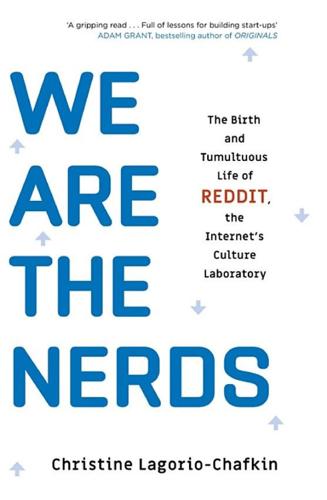
We Are the Nerds: The Birth and Tumultuous Life of Reddit, the Internet's Culture Laboratory
by
Christine Lagorio-Chafkin
Published 1 Oct 2018
By the end of summer, the nineteen guys were so accustomed to hearing Graham say, “Make something people want,” that they put it on a T-shirt. Well, sort of. The shirt’s front bore a Y Combinator logo. On the back were screenprinted the words “Make Something Paul Graham Wants.” * * * By about three weeks into the summer of 2005, Huffman had become accustomed to panicking roughly twice each day, when the name Paul Graham would appear at the top of his Gmail in-box. This was the same man who’d pledged them thousands of dollars of his own money to let them experiment with code all summer, the same man who’d expressed so much enthusiasm for their startup pitch months earlier.
…
These were curt notes with feature suggestions (users should email each other!), feedback on the name (he hated it), the alien mascot (what about an octopus?), and, mostly, the dreaded “check-in” email. “Paul in one person is his own good cop and his own bad cop,” Ohanian said later that summer. “And there’s this amazing dichotomy between the Paul Graham that we often get emails from and the Paul Graham we know in person.” This third week in June, it finally got to Huffman. One note was particularly harsh. It didn’t just ask for a progress report; it ranted. Graham wrote, in essence, “I don’t know why you haven’t launched yet; either you can’t do it or you are waiting for it to be perfect, and I don’t know which is worse.”
…
How to Start a Startup an eighty-page thesis: “Our Y Combinator Summer 05 Application,” posted by Alexis Ohanian on November 29, 2010, AlexisOhanian.com. Swartz was pondering: Aaron Swartz, “The Case Against Lawrence Summers,” aaronsw.com, March 9, 2005. “If you want to do it”: Paul Graham, “How to Start a Startup,” essay delivered before the Harvard Computer Society, posted online March 2005. Not Your Standard Fixed-Point Combinator Graham snapped a photo: Paul Graham, “How Y Combinator Started,” blog post on Y Combinator’s former website, March 15, 2012. “How do we even tell people”: Jessica Livingston, Founders at Work: Stories of Startups’ Early Days (New York: Apress, 2007), 448.

The Power Law: Venture Capital and the Making of the New Future
by
Sebastian Mallaby
Published 1 Feb 2022
BACK TO NOTE REFERENCE 61 Christine Lagorio-Chafkin, We Are the Nerds: The Birth and Tumultuous Life of Reddit, the Internet’s Culture Laboratory (New York: Hachette, 2018), 20. BACK TO NOTE REFERENCE 62 Paul Graham, “Paul Graham on Doing Things Right by Accident,” interview by Aaron Harris and Kat Manalac, Startup School Radio, Y Combinator (blog), Feb. 17, 2016, blog.ycombinator.com/paul-graham-startup-school-radio-interview/. BACK TO NOTE REFERENCE 63 Ohanian, Without Their Permission, 47–54. BACK TO NOTE REFERENCE 64 Lagorio-Chafkin, We Are the Nerds, 4. BACK TO NOTE REFERENCE 65 Graham, “Paul Graham on Doing Things Right by Accident.” BACK TO NOTE REFERENCE 66 Livingston, interview by the author, June 6, 2019.
…
A sales force is worth something, I’ll admit. But marketing is increasingly irrelevant. On the Internet, anything genuinely good will spread by word of mouth.” Paul Graham, “Hiring Is Obsolete,” paulgraham.com (blog), May 2005, paulgraham.com/hiring.html. BACK TO NOTE REFERENCE 70 Paul Graham, “A Unified Theory of VC Suckage,” paulgraham.com (blog), March 2005, paulgraham.com/venturecapital.html. BACK TO NOTE REFERENCE 71 Paul Graham, “Hiring Is Obsolete.” BACK TO NOTE REFERENCE 72 CHAPTER NINE: PETER THIEL, Y COMBINATOR, AND THE VALLEY’S YOUTH REVOLT Valentine, interview by the author, April 7, 2018.
…
BACK TO NOTE REFERENCE 66 The entrepreneur was Sean Parker, of whom more in chapter 9. See Adam Fisher, Valley of Genius: The Uncensored History of Silicon Valley (New York: Hachette, 2018), 318. BACK TO NOTE REFERENCE 67 These quotations are taken from Paul Graham, “How to Start a Startup,” paulgraham.com (blog), March 2005, paulgraham.com/start.html. BACK TO NOTE REFERENCE 68 Paul Graham, “The Venture Capital Squeeze,” paulgraham.com (blog), Nov. 2005, paulgraham.com/vcsqueeze.html. BACK TO NOTE REFERENCE 69 Graham elaborated, “Fairchild needed a lot of money to get started. They had to build actual factories.
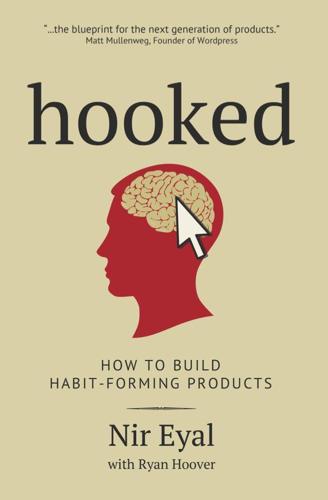
Hooked: How to Build Habit-Forming Products
by
Nir Eyal
Published 26 Dec 2013
Ian Bogost, “The Cigarette of This Century,” Atlantic (June 6, 2012), http://www.theatlantic.com/technology/archive/2012/06/the-cigarette-of-this-century/258092/. 4. David H. Freedman, “The Perfected Self,” Atlantic (June 2012), http://www.theatlantic.com/magazine/archive/2012/06/the-perfected-self/308970/. 5. Paul Graham,“The Acceleration of Addictiveness,” Paul Graham (July 2010; accessed Nov. 12, 2013), http://www.paulgraham.com/addiction.html. 6. Gary Bunker, “The Ethical Line in User Experience Research,” mUmBRELLA (accessed Nov. 13, 2013), http://mumbrella.com.au/the-ethical-line-in-user-experience-research-163114. 7. Chris Nodder, “How Deceptive Is Your Persuasive Design?”
…
Mitchell, “Disclosing Information About the Self Is Intrinsically Rewarding,” Proceedings of the National Academy of Sciences (May 7, 2012): 201202129, doi:10.1073/pnas.1202129109. Chapter 8: Habit Testing and Where to Look for Habit-Forming Opportunities 1. Mattan Griffel, “Discovering Your Aha! Moment,” GrowHack (Dec. 4, 2012), http://www.growhack.com/2012/12/04/discovering-your-aha-moment. 2. Paul Graham, “Schlep Blindness,” Paul Graham (Jan. 2012), http://paulgraham.com/schlep.html. 3. Joel Gascoigne, “Buffer October Update: $2,388,000 Annual Revenue Run Rate, 1,123,000 Users,” Buffer (Nov. 7, 2013), http://open.bufferapp.com/buffer-october-update-2388000-run-rate-1123000-users. 4. Tessa Miller, “I’m Joel Gascoigne, and This Is the Story Behind Buffer,” Life Hacker (accessed Nov. 13, 2013), http://www.lifehacker.co.in/technology/Im-Joel-Gascoigne-and-This-Is-the-Story-Behind-Buffer. 5.
…
Newsweek (Feb. 27, 1995), http://www.english.illinois.edu/-people-/faculty/debaron/582/582%20readings/stoll.pdf. 9. Mike Maples Jr., “Technology Waves and the Hypernet,” Roger and Mike’s Hypernet Blog (accessed Nov. 13, 2013), http://rogerandmike.com/post/14629058018/technology-waves-and-the-hypernet. 10. Paul Graham, “How to Get Startup Ideas.” Paul Graham (Nov. 2012), http://paulgraham.com/startupideas.html.
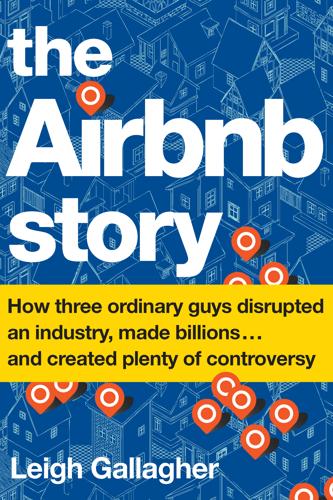
The Airbnb Story: How Three Ordinary Guys Disrupted an Industry, Made Billions...and Created Plenty of Controversy
by
Leigh Gallagher
Published 14 Feb 2017
By now having access to the top minds in Silicon Valley, as Chesky recounted to Hoffman’s students, he asked for advice from a growing panel of high-octane advisers: Mark Zuckerberg, Andrew Mason, Paul Graham, and Hoffman. Everyone had a different opinion: Mason, he said, having just gone through the experience, told him Wimdu had the potential to kill Airbnb. Zuckerberg, Chesky said, advised him not to buy, because whoever had the best product would win. In the end, the advice Chesky took came from Paul Graham, who told him that the difference between Airbnb and Wimdu was that Airbnb owners were missionaries, and Wimdu owners were mercenaries. Missionaries, he told him, usually win.
…
But back then he was twenty-five, had only recently become a first-time CEO, and didn’t have much experience. “I wasn’t someone people pitched,” he says. Chesky and Gebbia were the first founders who had ever asked him for advice. But he had just gone through Y Combinator, the prestigious start-up accelerator program cofounded by the entrepreneur and venture capitalist Paul Graham (Seibel is now CEO of the Y Combinator program). Seibel told them he’d help give them counsel, and as they began to devise something more tangible, he could maybe introduce them to some angels. Chesky had no idea what he was talking about (“I’m, like, ‘Oh my god, this guy believes in angels. What the hell?’”
…
After what Chesky would later refer to as an “intervention,” Blecharczyk finally agreed to relocate to San Francisco for three months and moved back into the Rausch Street apartment. The band was back together. They had been given another chance. “What Are You Still Doing Here?” Founded in 2005 by Paul Graham and three copartners, Y Combinator very quickly became one of the most prestigious launchpads in Silicon Valley, a “quasi startup factory, university, and venture capital fund rolled into one,” as Fortune called it. It wasn’t easy to get in, but start-ups it deemed worthy got seed funding of $5,000 plus another $5,000 per founder and a priceless wealth of knowledge, connections, operational assistance, and more offered by Graham and his copartners.
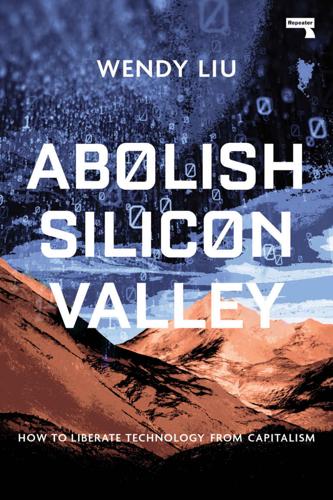
Abolish Silicon Valley: How to Liberate Technology From Capitalism
by
Wendy Liu
Published 22 Mar 2020
During a particularly bleak stretch of my adolescence — marked by the perilous blend of impeccable grades and lonely lunches — I had fallen in love with Ayn Rand’s novel The Fountainhead, which I took as confirmation that I would eventually be avenged for my current lack of recognition. Around the same time, I had discovered Paul Graham, a successful programmer, startup founder and investor in Silicon Valley whose essays about nerds I read as proof that I was special and would eventually get my just deserts. And during freshman orientation, booze-soaked students in my faculty would gleefully recite chants about the inferiority of arts majors, whose career prospects were summarised as flipping burgers or pouring coffee — the ability to find a high-paying job evidently being a reflection of personal superiority.
…
Loose feathers of cloud hung low on the fading blue horizon outside. THREE: MORE THAN THE MONEY If you suppress variations in income, whether by stealing private fortunes, as feudal rulers used to do, or by taxing them away, as some modern governments have done, the result always seems to be the same. Society as a whole ends up poorer. — Paul Graham, in his essay “Mind the Gap” from May 2004, which proposed that increasing income inequality in a modern society was a “sign of health”1 Going back to school in Montreal after a summer in the Bay Area felt like a let-down. It got worse when Google extended me a return offer before the semester even started: I merely had to graduate and I would have a six-figure job waiting for me in the Bay Area, not contingent on grades.
…
At the beginning of the semester, I had written a blog post about a mild security vulnerability that I’d discovered in a piece of software used at my university. Unexpectedly, the post had gone viral, even climbing to the top of Hacker News, the popular news aggregation service created by my startup hero Paul Graham. Not long after, I got an email from the company making the software, and at first I was terrified that it would be some sort of legal threat, but it turned out to be an invitation to interview for a job. No, I responded politely, but thanks. That company did not rank highly in my mental hierarchy of tech companies, and despite my lack of enthusiasm for returning to Google, I would much rather have that on my resume.
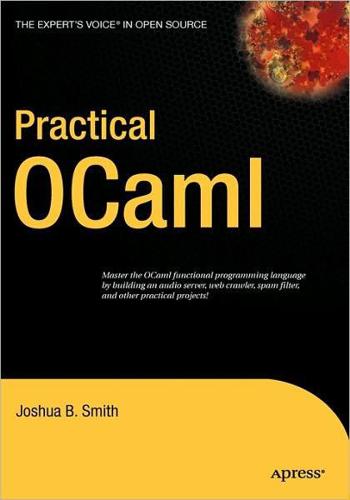
Practical OCaml
by
Joshua B. Smith
Published 30 Sep 2006
Unlike Hormel Spam, email spam has been annoying people and reducing productivity since the 1990s. In August 2002, Paul Graham published his essay, “A Plan for Spam,” which outlined a new idea in ending the spam problem. Now almost everyone uses a variant of the idea he popularized, but at the time it was the first. Paul Graham, of course, published his code in Lisp. His “plan” for spam consisted of a Bayesian classifier that put any given email message into one of two buckets: ham or spam. This chapter presents a working OCaml-based classifier and provides for code reuse and modularity. Naive Bayesian Spam Filtration Paul Graham knew he was on to something with his seminal essay.
…
Instead, probabilities are combined for these kinds of problems as shown in the following equation, which yields a probability of about 15.5 percent: ab P 5 }}} (ab) 1 (1 2 a)(1 2 b) This combination is also why the original Paul Graham article looked at only the first 15 to 20 “interesting” tokens. The way these probabilities combine makes the probability of a given email being spam decrease at a rapid rate. Sampling (and taking only a few samples) is an effective way to combat this problem. However, how you get the samples is an open problem, and we take the top 20 interesting tokens in our example. Talking About the Design Because the algorithm is provided, you do not have to worry about it. You’ll use the original Paul Graham algorithm, even though several additions and improvements have been made to it since the paper was published.
…
The function after that actually calculates the probability of a given email being spam by finding the probabilities of each token being spam, taking the top 20 tokens (those with the highest probability of being spam), and combining them. There is no danger of this function returning Not A Number because you ensured that the scoring function (the paul_graham function) always returns some nonzero value. let top_n n lst = try let ar = Array.of_list lst in Array.to_list (Array.sub ar 0 n) with Invalid_argument("Array.sub") -> lst;; let calc_email_prob lbuf = let email = buildmap StringMap.empty lbuf in let scored = StringMap.mapi ( fun x va -> paul_graham x goodmap badmap goodcount badcount ) email in let top_vals = top_n 20 (List.rev (List.sort compare (StringMap.fold (fun x y z -> y :: z) ➥ scored []))) in 173 620Xch14final.qxd 174 9/22/06 12:38 AM Page 174 CHAPTER 14 ■ PRACTICAL: A SPAM FILTER let n = List.fold_left (fun x y -> x *. y) 1.0 top_vals in let dn = List.fold_left (+.) 0.
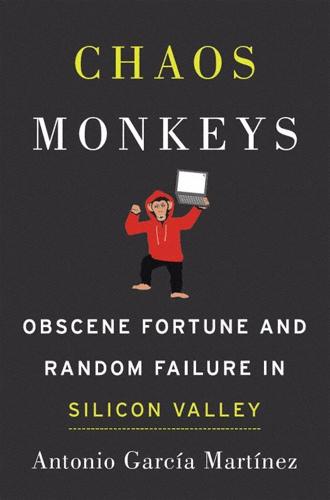
Chaos Monkeys: Obscene Fortune and Random Failure in Silicon Valley
by
Antonio Garcia Martinez
Published 27 Jun 2016
It wasn’t even a onetime thing: our final product would be informally titled “Plan J,” given the number of turns we had taken since “Plan A.” But there you have it, dear reader: we made a “pivot.” Plié! But we’re getting ahead of ourselves. All this would become clear only after numerous strolls with Paul Graham, something we hadn’t even won the right to have yet. Back to me skulking at Adchemy while working on a Y Combinator application. If my reading of YC’s and Paul Graham’s essays was correct, then bomb-throwing anarchist subversive mixed with cold-blooded execution mixed with irreverent whimsy, a sort of technology-enabled twelve-year-old boy, was precisely the YC entrepreneur profile.
…
Like control of the water supply in some arid agricultural region, whoever had the most upstream control of the water sluice controlled everything else—which is what Y Combinator’s Demo Day represented. Thus, powerful and haughty VCs who wanted to attend Y Combinator’s showcase pitch event had to kneel and kowtow to a sandal-wearing bear of a man with a distaste for bullshit and a flair for the written word. That man was Paul Graham, without question the canniest tech investor in human history. And it was to Paul Graham we first turned with our existential problem in those desperate days. Like all parents, PG pretends he loves all his startup children equally. The reality is some companies get more of his attention than others. Given the conditional nature of his love, it was somewhat in doubt if he would run to AdGrok’s aid, in light of the pissy, messy nature of our conflict.
…
He was one of the rising stars at Adchemy, due to both his high-level machine-learning brains and his coding skill. Aside from our lunchtime conversations and odd Sunday phone call, though, we hadn’t formulated any clear business idea. Procrastinating on a Monday, I decided to read an essay by Paul Graham. PG, as he’s known to the cognoscenti, founded an online store builder called Viaweb in the early days of the Web, which got bought in the $40 million range in 1997, and eventually became Yahoo Shopping. In his postacquisition freedom, he created one of the more incredible institutions in Silicon Valley: Y Combinator.* Twice a year, every year, Y Combinator accepts a few dozen startup hopefuls into what can only be described as a startup boot camp.† They are given a tiny amount of money and the goal of shipping a product by the end of three months.
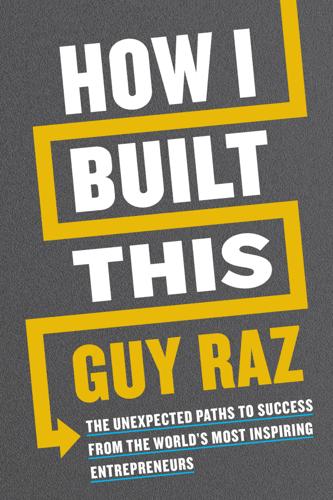
How I Built This: The Unexpected Paths to Success From the World's Most Inspiring Entrepreneurs
by
Guy Raz
Published 14 Sep 2020
“No one in their right mind would invest in a service where people publicly post images of their most intimate spaces—their bedroom, their bathrooms, the kinds of rooms that they usually close when people come over—and then over the internet they’re going to invite complete strangers to sleep in their homes.” This was certainly Paul Graham’s position during their interview with the Y Combinator board for a slot in the 2009 winter class. “The very first thing out of Paul Graham’s mouth was, ‘You mean people actually use this? Well, that’s weird,’” Joe recalled during our conversation. Brian, recounting that same moment during a 2015 interview with Reid Hoffman in his Blitzscaling class at Stanford, remembered Graham then asking them a rhetorical question that only a really good story could sufficiently answer: “What’s wrong with them?”
…
And make no mistake, it is a trick, because your instinct when you’re caught up in the struggle is to resist removing yourself from the action. You’ll need to have just enough wherewithal to let someone or something take you there. The Airbnb guys had Paul Graham at Y Combinator. He’s the one who made them zoom out and recognize that their biggest pool of users was in New York City, and if they were going to solve their growth problems, the solution was likely there, not in Silicon Valley. Gary Hirshberg and Samuel Kaymen didn’t have a Paul Graham, but what they did have was the entrepreneurial version of a near-death experience that took them out of their bodies and forced them to reckon with the carcass of a business that the Vermont dairy had left bloodied and dying on a conference room floor after changing the terms of the deal that was supposed to save Stonyfield.
…
Passion for the idea may have gotten Bruce out of bed every morning, and it surely helped him persevere whenever he felt like he might quit, but it was never going to sell his product, nor would it make the Sharks any money, because customers don’t pay for passion. They pay for things they can use. The same month the episode of Shark Tank with Bruce Gaither aired, Paul Graham, co-founder of the startup accelerator Y Combinator and a kind of entrepreneurial Confucius, wrote a long essay titled “How to Get Startup Ideas” for his blog. It opens with a discussion of problems and reads like Graham had just watched Bruce on Shark Tank and was talking directly to him. “The way to get startup ideas is not to try to think of startup ideas,” Graham wrote.

Empire of AI: Dreams and Nightmares in Sam Altman's OpenAI
by
Karen Hao
Published 19 May 2025
GO TO NOTE REFERENCE IN TEXT This was not a flaw: Eric Newcomer, “YC’s Paul Graham: The Complete Interview,” December 26, 2013, The Information, theinformation.com/articles/yc-s-paul-graham-the-complete-interview. GO TO NOTE REFERENCE IN TEXT “Loopt is probably the most”: Paul Graham, “A Student’s Guide to Startups,” Paul Graham (blog), October 2006, paulgraham.com/mit.html. GO TO NOTE REFERENCE IN TEXT Altman quickly inspired Graham: Paul Graham, “What We Look for in Founders,” Paul Graham (blog), October 2010, paulgraham.com/founders.html. GO TO NOTE REFERENCE IN TEXT “Sam is, along with Steve”: Paul Graham, “Five Founders,” Paul Graham (blog), April 2009, paulgraham.com/5founders.html.
…
GO TO NOTE REFERENCE IN TEXT “I am now very much”: Melia Russell and Julia Black, “He’s Played Chess with Peter Thiel, Sparred with Elon Musk and Once, Supposedly, Stopped a Plane Crash: Inside Sam Altman’s World, Where Truth Is Stranger Than Fiction,” Business Insider, April 27, 2023, businessinsider.com/sam-altman-openai-chatgpt-worldcoin-helion-future-tech-2023-4. GO TO NOTE REFERENCE IN TEXT “You could parachute him”: Paul Graham, “A Fundraising Survival Guide,” Paul Graham (blog), accessed November 21, 2024, paulgraham.com/fundraising.html. GO TO NOTE REFERENCE IN TEXT “Sam is extremely good”: Friend, “Sam Altman’s Manifest Destiny.” GO TO NOTE REFERENCE IN TEXT Jerry, the son of a: “Megan O’Neill Is Wed to Jerold D.
…
GO TO NOTE REFERENCE IN TEXT “Sam is, along with Steve”: Paul Graham, “Five Founders,” Paul Graham (blog), April 2009, paulgraham.com/5founders.html. GO TO NOTE REFERENCE IN TEXT When Graham asked: Friend, “Sam Altman’s Manifest Destiny.” GO TO NOTE REFERENCE IN TEXT Their bond was once described: Dwoskin et al., “ ‘King of the Cannibals.’ ” GO TO NOTE REFERENCE IN TEXT “The first piece of startup”: Sam Altman, “Growth and Government,” Sam Altman (blog), March 4, 2013, blog.samaltman.com/growth-and-government. GO TO NOTE REFERENCE IN TEXT “The thing that people”: “Sam Altman Startup School Video,” Waterloo Engineering.
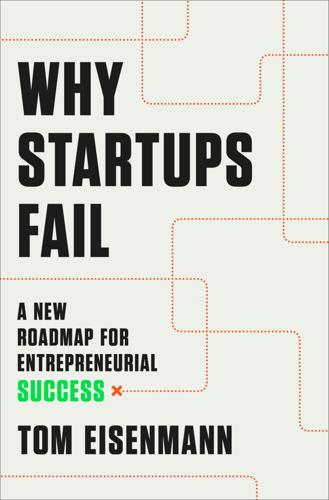
Why Startups Fail: A New Roadmap for Entrepreneurial Success
by
Tom Eisenmann
Published 29 Mar 2021
For academic research supporting the “blame the horse” viewpoint, see Steven Kaplan, Berk Sensoy, and Per Stromberg, “Should Investors Bet on the Jockey or the Horse? Evidence from the Evolution of Firms from Early Business Plans to Public Companies,” Journal of Finance 64, no. 1 (2009): 75–115. “There’s just one mistake”: Paul Graham, “The 18 Mistakes That Kill Startups,” Paul Graham blog, Oct. 2016. In a survey of venture capital: Michael Gorman and William Sahlman, “What Do Venture Capitalists Do?” Journal of Business Venturing 4, no. 4 (1989): 231–248. In another survey: Ian Macmillan, Lauriann Zemann, and P. N. Subbanarasimha, “Criteria Distinguishing Successful from Unsuccessful Ventures in the Venture Screening Process,” Journal of Business Venturing 2, no. 2 (1987): 123–137.
…
“Our original sin”: Author’s interview with Goldberg, which is also the source for the quote in the next paragraph. According to press accounts: Shontell, “Tech Titanic.” While Fab had some issues: Shontell, “Tech Titanic.” As Reid Hoffman says: Hoffman and Yeh, Blitzscaling, pp. 217–218. “A startup is a company”: Paul Graham, “Startup = Growth,” Paul Graham blog, Sept. 2012. Network Effects: For references regarding network effects, see citations in Ch. 2. Fortunately, it’s possible: For further guidance on conducting conjoint analysis, see Elie Ofek and Olivier Toubia, “Conjoint Analysis: A Do-It-Yourself Guide,” HBS course note 515024, Aug. 2014.
…
In any case, given our penchant for attribution errors—that is, blaming our own failures on uncontrollable circumstances and others’ failures on their personal faults—we should interpret founders’ explanations for startup failure with care. While most investors blame bad jockeys for startup failure, some see slow horses as the main problem. For example, billionaire entrepreneur and investor Peter Thiel says that “all failed companies are the same: they failed to escape competition.” Paul Graham, founder of the elite accelerator Y Combinator, likewise holds that having a compelling solution to a customer’s problem—a strong horse—is the key to success: “There’s just one mistake that kills startups: not making something users want. If you make something users want, you’ll probably be fine, whatever else you do or don’t do.

Don't Trust Your Gut: Using Data to Get What You Really Want in LIfe
by
Seth Stephens-Davidowitz
Published 9 May 2022
Venture capitalists and investors have bought into the media-driven narrative that younger people are more likely to build great companies. Vinod Khosla, a cofounder of Sun Microsystems and venture capitalist, said, “People under 35 are the people who make change happen . . . people over 45 basically die in terms of new ideas.” Paul Graham, the founder of Y Combinator, the famous start-up accelerator, said that, when a founder is over the age of thirty-two, investors “start to be a little skeptical.” Zuckerberg himself famously said, with his characteristic absence of tact, “Young people are just smarter.” But, it turns out, when it comes to age, the entrepreneurs we learn about in the media are not representative.
…
The Insider’s Edge in Entrepreneurship Work Experience of the Founder Probability Business Will Be a 1-in-1,000 Success No experience in field 0.11% Experience in same broad field—but not narrow field 0.22% Experience in same narrow field 0.26% Source: Azoulay et al. (2020) Myth: The Power of the Marginal Suzy Batiz wasn’t just an outsider to the field of fecal-fighting chemistry when she began her business. She was also, by just about any conventional metric, a failure. Recall that she had declared bankruptcy and had numerous business ventures go bust. She was outside the margins of the successful. Could Batiz’s lack of success actually, as strange as it may seem, have been an advantage? Paul Graham, the brilliant essayist and founder of Y Combinator, a start-up accelerator, wrote a fascinating and provocative essay arguing that people who have failed a lot can actually have an edge in entrepreneurship. In the essay, called “The Power of the Marginal,” Graham notes that “great new things often come from the margins.”
…
Remarkably, they sold enough to pay back their debt. In any case, their business was basically dead when, one evening, Chesky and Gebbia met up with Seibel, the man who had liked them in Austin. Seibel, still impressed with the two young men, suggested that they apply for Y Combinator, a start-up accelerator that was run by his friend Paul Graham in Silicon Valley. The deadline had passed, but Seibel had enough pull with Graham to get their application a look. This was their first big break. Graham didn’t like Chesky’s and Gebbia’s business idea, but, when told of their cereal story, he was impressed with their moxie. Graham gave them $20,000 in seed funding, which was enough to convince the technical cofounder Blecharczyk to rejoin and allowed the team to survive a few months longer.
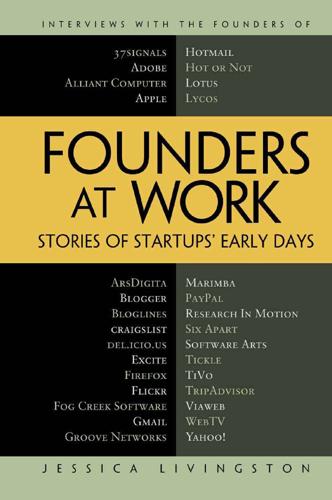
Founders at Work: Stories of Startups' Early Days
by
Jessica Livingston
Published 14 Aug 2008
All the resources they have in the world, all the billions of dollars, can’t stop people being creative. There are a lot of companies who, in one way or another, have changed the rules of the game for the better. It’s just going to happen. I think we helped a very conservative industry get their minds around that. C H A P T E 15 R Paul Graham Cofounder, Viaweb Paul Graham and his friend Robert Morris started Viaweb in 1995 to make software for building online stores. A few days into writing the first prototype, they had a crazy idea: why not have the software run on the server and let the user control it through their browser? Within weeks, they had a web-based online store builder they could demo to investors.
…
For Da and PG Contents FOREWORD . . . . . . . . . . . . . . . . . . . . . . . . . . . . . . . . . . . . . ix PREFACE . . . . . . . . . . . . . . . . . . . . . . . . . . . . . . . . . . . . . . . . xi ABOUT THE AUTHOR . . . . . . . . . . . . . . . . . . . . . . . . . . . . . . . xiii ACKNOWLEDGMENTS . . . . . . . . . . . . . . . . . . . . . . . . . . . . . . . xv INTRODUCTION . . . . . . . . . . . . . . . . . . . . . . . . . . . . . . . . . . xvii CHAPTER 1 MAX LEVCHIN PayPal . . . . . . . . . . . . . . . . . . . . . . . . . . . . . . . . . 1 CHAPTER 2 SABEER BHATIA Hotmail. . . . . . . . . . . . . . . . . . . . . . . . . . . . . . . . 17 CHAPTER 3 STEVE WOZNIAK Apple Computer . . . . . . . . . . . . . . . . . . . . . . . . . . 31 CHAPTER 4 JOE KRAUS Excite . . . . . . . . . . . . . . . . . . . . . . . . . . . . . . . . . 61 CHAPTER 5 DAN BRICKLIN Software Arts . . . . . . . . . . . . . . . . . . . . . . . . . . . . 73 CHAPTER 6 MITCHELL KAPOR Lotus Development. . . . . . . . . . . . . . . . . . . . . . . . . 89 CHAPTER 7 RAY OZZIE Iris Associates, Groove Networks . . . . . . . . . . . . . . . . 103 CHAPTER 8 EVAN WILLIAMS Pyra Labs (Blogger.com) . . . . . . . . . . . . . . . . . . . . . 111 CHAPTER 9 TIM BRADY Yahoo. . . . . . . . . . . . . . . . . . . . . . . . . . . . . . . . 127 CHAPTER 10 MIKE LAZARIDIS Research In Motion . . . . . . . . . . . . . . . . . . . . . . . . 141 v vi Contents CHAPTER 11 ARTHUR VAN HOFF Marimba . . . . . . . . . . . . . . . . . . . . . . . . . . . . . . 153 CHAPTER 12 PAUL BUCHHEIT Gmail . . . . . . . . . . . . . . . . . . . . . . . . . . . . . . . . 161 CHAPTER 13 STEVE PERLMAN WebTV . . . . . . . . . . . . . . . . . . . . . . . . . . . . . . . 173 CHAPTER 14 MIKE RAMSAY TiVo. . . . . . . . . . . . . . . . . . . . . . . . . . . . . . . . . 191 CHAPTER 15 PAUL GRAHAM Viaweb . . . . . . . . . . . . . . . . . . . . . . . . . . . . . . . 205 CHAPTER 16 JOSHUA SCHACHTER del.icio.us . . . . . . . . . . . . . . . . . . . . . . . . . . . . . . 223 CHAPTER 17 MARK FLETCHER ONElist, Bloglines . . . . . . . . . . . . . . . . . . . . . . . . . 233 CHAPTER 18 CRAIG NEWMARK craigslist . . . . . . . . . . . . . . . . . . . . . . . . . . . . . . . 247 CHAPTER 19 CATERINA FAKE Flickr . . . . . . . . . . . . . . . . . . . . . . . . . . . . . . . . 257 CHAPTER 20 BREWSTER KAHLE WAIS, Internet Archive, Alexa Internet . . . . . . . . . . . . . 265 CHAPTER 21 CHARLES GESCHKE Adobe Systems . . . . . . . . . . . . . . . . . . . . . . . . . . 281 CHAPTER 22 ANN WINBLAD Open Systems, Hummer Winblad . . . . . . . . . . . . . . . . 297 CHAPTER 23 DAVID HEINEMEIER HANSSON 37signals . . . . . . . . . . . . . . . . . . . . . . . . . . . . . . 309 CHAPTER 24 PHILIP GREENSPUN ArsDigita . . . . . . . . . . . . . . . . . . . . . . . . . . . . . . 317 CHAPTER 25 JOEL SPOLSKY Fog Creek Software . . . . . . . . . . . . . . . . . . . . . . . . 345 CHAPTER 26 STEPHEN KAUFER TripAdvisor. . . . . . . . . . . . . . . . . . . . . . . . . . . . . 361 CHAPTER 27 JAMES HONG HOT or NOT . . . . . . . . . . . . . . . . . . . . . . . . . . . 377 CHAPTER 28 JAMES CURRIER Tickle . . . . . . . . . . . . . . . . . . . . . . . . . . . . . . . . 387 CHAPTER 29 BLAKE ROSS Firefox . . . . . . . . . . . . . . . . . . . . . . . . . . . . . . . 395 Contents vii CHAPTER 30 MENA TROTT Six Apart . . . . . . . . . . . . . . . . . . . . . . . . . . . . . . 405 CHAPTER 31 BOB DAVIS Lycos . . . . . . . . . . . . . . . . . . . . . . . . . . . . . . . . 419 CHAPTER 32 RON GRUNER Alliant Computer Systems, Shareholder.com . . . . . . . . . . 427 CHAPTER 33 JESSICA LIVINGSTON Y Combinator . . . . . . . . . . . . . . . . . . . . . . . . . . . 447 INDEX . . . . . . . . . . . . . . . . . . . . . . . . . . . . . . . . . . . . . . . . 455 Foreword Sprinters apparently reach their highest speed right out of the blocks, and spend the rest of the race slowing down.
…
In big companies, there’s always going to be more politics and less scope for individual decisions. But seeing what startups are really like will at least show other organizations what to aim for. The time may soon be coming when instead of startups trying to seem more corporate, corporations will try to seem more like startups. That would be a good thing. Paul Graham Cofounder, Viaweb Preface It’s been more than a year since Founders at Work was first published. What have I learned since? The biggest surprise has been the sheer number of people interested in startups. I know about the ones who apply to Y Combinator, read Hacker News, or attend Startup School, but I could never be sure how many people were interested in startups beyond that core of would-be founders.

Fancy Bear Goes Phishing: The Dark History of the Information Age, in Five Extraordinary Hacks
by
Scott J. Shapiro
Paul later testified at Robert’s trial that his friend was “usually sort of puritanical in his speech. That is why I thought something really major must be wrong.” Something really major was wrong. Paul’s friend had just crashed the internet. The call came at 11:00 p.m., November 2, 1988. Robert Morris Jr., a PhD student in computer science at Cornell, described the unfolding disaster to Paul Graham, a graduate student at Harvard. Earlier that night, around 8:00 p.m., Robert sat at a terminal in Room 4160 of Upson Hall, then home to Cornell’s Computer Science Department, in Ithaca, New York, and remotely logged in to prep.ai.mit.edu, a VAX 11/750 computer at MIT’s Artificial Intelligence Lab in Cambridge, Massachusetts.
…
When the worm first hit, administrators did not know why it had been launched and what damage it was causing. They feared the worst—that the worm was deleting or corrupting the files on the machines it had infected. (It wasn’t, as they would soon discover.) After he first confessed the “fuckup” to his friend Paul Graham, Robert knew he had to do something. Unfortunately, he could not send out any warning emails because Dean Krafft had ordered the department machines to be disconnected from the main campus network and hence the public internet. At 2:30 a.m., Robert called Andy Sudduth, the system administrator of Harvard’s Aiken Computation Lab, and asked him to send a warning message to other administrators with instructions on how to protect their networks.
…
As the New York Times reporter John Markoff put it, “The case, with all its bizarre twists, illuminates the cerebral world of a father and son—and indeed a whole modern subculture— obsessed with the intellectual challenge of exploring the innermost crannies of the powerful machines that in the last three decades have come to control much of society.” When Robert’s mother was asked whether father and son appreciated their similarities, she responded, “Of course they are aware of it. How could they not be?” Markoff figured out that Robert Morris Jr. had written the worm when Markoff spoke to Paul Graham. Over several conversations, Paul had referred to the culprit as “Mr. X,” but then Paul slipped up and referred to him as “rtm” by accident. Through Finger, a now-defunct UNIX service that acted like an internet telephone book, Markoff discovered that “rtm” stood for Robert Tappan Morris. When Markoff contacted him, Bob saw no point in pretending other- wise, so he confessed for his son.
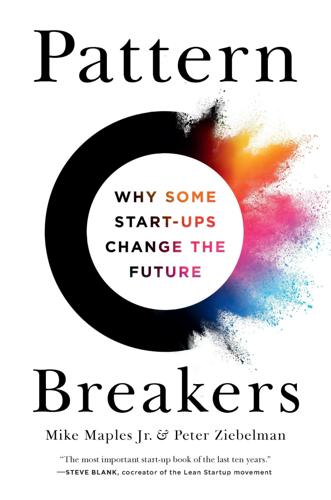
Pattern Breakers: Why Some Start-Ups Change the Future
by
Mike Maples
and
Peter Ziebelman
Published 8 Jul 2024
For Airbnb, the “Obama O’s” and “Cap’n McCain’s” cereal boxes helped them get noticed and receive funding from famed start-up accelerator Y Combinator. At the end of their interview, Airbnb’s cofounders showed Y Combinator founders Paul Graham and Jessica Livingston the boxes of cereal. After they had described how they’d made $30,000 by selling them, a bemused Paul Graham said, “If you can convince people to pay $40 for a $4 box of cereal, maybe you can get strangers to stay in other strangers’ homes.” GETTING TO “NO” Disagreeableness knows when to say no. Two seductive myths are often emphasized in normal business: the customer is always right, and harmony within the team is desirable.
…
None of these companies were able to clearly dominate, and many faced financial struggles. Suppose you’ve identified a powerful insight that aligns with major inflections. How do you stress-test your insights to confirm if you are non-consensus and right? This is the area we’ll concentrate on next. Footnote 1 Founded by Paul Graham, Y Combinator put start-up accelerator programs on the map, providing a ten-week bootcamp that put founding teams through a rigorous process to help them get their ideas in shape and launch something. Paul vetted the applicants to the program and gave the founders he selected a stipend so they could support themselves as they tested their ideas to see if they might turn into real companies. 5 STRESS-TESTING YOUR INSIGHTS How Valid Is Your Insight?
…
FINDING WHAT IS MISSING IN THE FUTURE Marc Andreessen and Bob Metcalfe each found their way to a breakthrough insight by solving a problem for themselves. They created a solution to a challenge they were already experiencing while living in the future. There’s a certain magic in crafting something with your own hands, for your own needs. As Paul Graham, the cofounder of Y Combinator, eloquently put it, “Why is it so important to work on a problem you have? Among other things, it ensures the problem really exists. It sounds obvious to say you should only work on problems that exist. And yet by far the most common mistake start-ups make is to solve problems no one has.”

Blitzscaling: The Lightning-Fast Path to Building Massively Valuable Companies
by
Reid Hoffman
and
Chris Yeh
Published 14 Apr 2018
In the beginning, every investor the founders approached had turned them down or, worse, ignored them. The company was on the upswing now, but the painful early days were still fresh in their minds, and they weren’t looking for another battle. * * * When the Airbnb founders first met, Paul Graham, the highly regarded founder of the start-up accelerator Y Combinator (YC), told them flat out that their idea was terrible. “People are actually doing this?!” he incredulously asked. When Brian told him yes, people were, in fact, renting out their living spaces for a night, Graham’s response was “What’s wrong with them?”
…
After all the blood, sweat, and tears, were they really willing to give up a quarter of their company? Ultimately, Brian decided not to buy Wimdu, swayed in part by the arguments of his key advisers. Facebook founder Mark Zuckerberg counseled him to fight. “Don’t buy them,” he said. “The best product will win.” YC’s Paul Graham gave similar feedback. “They’re mercenaries. You’re missionaries,” he told Brian. “They’re like people raising a baby they don’t actually want.” When Brian reached out to me for my advice on the situation, I too advised him not to buy Wimdu. The key issue wasn’t the price and dilution, but the way a merger could pose impediments to speed and success.
…
And Facebook built its social network when most people believed social networking to be either useless, a market dominated by MySpace, or both. As we’ve already seen, most great ideas look dumb at first. Being contrarian doesn’t mean that dumb people disagree with you; it means that smart people disagree with you! Remember what happened when Brian Chesky, Joe Gebbia, and Nathan Blecharcyzk tried to pitch Airbnb? Investors like Paul Graham literally couldn’t imagine why people would ever use the service. This doesn’t happen because investors are dumb; most venture capitalists and angel investors are smart, and most smart, successful people would probably agree that investing in proven ideas is better than investing in unproven ones.
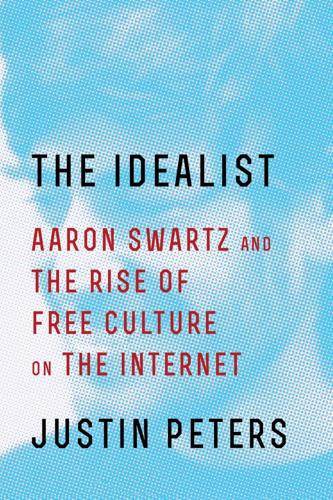
The Idealist: Aaron Swartz and the Rise of Free Culture on the Internet
by
Justin Peters
Published 11 Feb 2013
“CO-OPT OR DESTROY” 1 Aaron Swartz, “Checking In,” Schoolyard Subversion, December 23, 2001, http://web.archive.org/web/20020205111032/http:/swartzfam.com/aaron/school/. 2 Aaron Swartz, “Instant Message from LelandJr247,” Aaron Swartz: The Weblog, December 11, 2003, http://www.aaronsw.com/weblog/001087. 3 Aaron Swartz, “Stanford: Day 1,” Aaron Swartz: The Weblog, September 21, 2004, https://web.archive.org/web/20041009200559/http://www.aaronsw.com/weblog/001418. 4 Aaron Swartz, “Stanford: Day 3,” Aaron Swartz: The Weblog, last modified June 3, 2005, http://www.aaronsw.com/weblog/001421. 5 Interview with Seth Schoen, January 2013. 6 Aaron Swartz, “Stanford: Day 58,” Aaron Swartz: The Weblog, November 15, 2004, http://www.aaronsw.com/weblog/001480. 7 Wilcox-O’Hearn, “Part 1.” 8 Aaron Swartz, “Home Again,” Aaron Swartz: The Weblog, February 13, 2005, http://www.aaronsw.com/weblog/001558. 9 Aaron Swartz, “News Update,” Aaron Swartz: The Weblog, February 17, 2003, http://www.aaronsw.com/weblog/000838. 10 Paul Graham, “What I Did This Summer,” PaulGraham.com, October 2005, http://www.paulgraham.com/sfp.html. 11 Paul Graham, “Summer Founders Program,” PaulGraham.com, March 2005, http://paulgraham.com/summerfounder.html. 12 Ibid. 13 Infogami, March 4, 2006, https://web.archive.org/web/20060323211212/http://infogami.com/. 14 Aaron Swartz, “infogami,” Infogami, circa October 25, 2005, https://web.archive.org/web/20051025013124/http://infogami.com/.
…
“When I started high school, I remember watching for that point where foreground and background reverse—the point at which school as a use of my time turned into time being what was left over after school. It didn’t take long,” he wrote on his blog. “School is like that. It keeps you running until running is the only thing you know.”8 Not surprisingly, he took the first possible opportunity to run away from Stanford. Swartz was exactly the sort of disaffected, understimulated genius that Paul Graham was hoping to recruit for his latest enterprise. Graham is a computer programmer and entrepreneur who, in 1998, sold the company he cofounded, Viaweb, to Yahoo for $49.6 million in stock. Following the sale, Graham wrote a series of thoughtful essays on computers and the people who loved them. In 2003, Swartz had excerpted one of those essays, “Why Nerds Are Unpopular,” in which Graham suggested that the pointless busywork assigned in the typical American high school only encourages smart, self-motivated teenagers to consider suicide.
…
Perhaps it’s a bit lofty of a goal, but we say aim high.”14 Graham was intrigued by Swartz, if not necessarily Swartz’s idea, and so he invited the restless Stanford undergrad to come to Cambridge and pitch the concept in person. As Swartz packed for the trip in his Stanford dorm room, he told his roommates that he was off to interview for a summer job. His friend Seth Schoen, amused at the understatement, suggested Swartz explain that the interview was with Paul Graham, the famous programmer and essayist. “Yeah,” Swartz said, “but they won’t know who that is.”15 On his blog, Swartz portrayed the pitch meeting as a comical and bemusing experience. In Swartz’s telling, Graham spent the session bouncing between conversational topics while paying surprisingly little attention to Swartz’s proposal for Infogami—“which he appears not to have read very carefully,” Swartz noted.

Geek Sublime: The Beauty of Code, the Code of Beauty
by
Vikram Chandra
Published 7 Nov 2013
Many programmers, on the other hand, regard themselves as artists. Since programmers create complex objects, and care not just about function but also about beauty, they are just like painters or sculptors. The best-known assertion of this notion is the essay “Hackers and Painters” by programmer and venture capitalist Paul Graham. “Of all the different types of people I’ve known, hackers and painters are among the most alike,” writes Graham. “What hackers and painters have in common is that they’re both makers. Along with composers, architects, and writers, what hackers and painters are trying to do is make good things.”1 According to Graham, the iterative processes of programming—write, debug (discover and remove bugs, which are coding errors, mistakes), rewrite, experiment, debug, rewrite—exactly duplicate the methods of artists: “The way to create something beautiful is often to make subtle tweaks to something that already exists, or to combine existing ideas in a slightly new way … You should figure out programs as you’re writing them, just as writers and painters and architects do.”2 Attention to detail further marks good hackers with artist-like passion: All those unseen details [in a Leonardo da Vinci painting] combine to produce something that’s just stunning, like a thousand barely audible voices all singing in tune.
…
No one cares how pretty the code is if the program won’t work. The only objective constraint a painter has is making sure the paint physically stays on the canvas (something that has proven surprisingly challenging). Everything beyond that is aesthetics—arranging coloured blobs in a way that best tickles the mind of the viewer.15 Paul Graham has been hugely successful as a programmer and venture capitalist, and his essays about technology and business are sometimes thought-provoking and insightful. But his writings about art are full of majestically fatuous statements delivered with oracular certainty: “One of the reasons Jane Austen’s novels are so good is that she read them out loud to her family.
…
Ceglowski the painter is skeptical: You can safely replace “painters”… with “poets,” “composers,” “pastry chefs” or “auto mechanics” with no loss of meaning or insight … The reason Graham’s essay isn’t entitled “Hackers and Pastry Chefs” is not because there is something that unites painters and programmers into a secret brotherhood, but because Paul Graham likes to cultivate the arty aura that comes from working in the visual arts.18 My first response to Graham’s programmers-as-artists maneuver was as exasperated as Ceglowski’s, but after the initial irritation had passed I began to think about the specific aesthetic claims Graham was making for code, about what kind of beauty code might possess, and why Graham would want to claim the mantle of artistry.
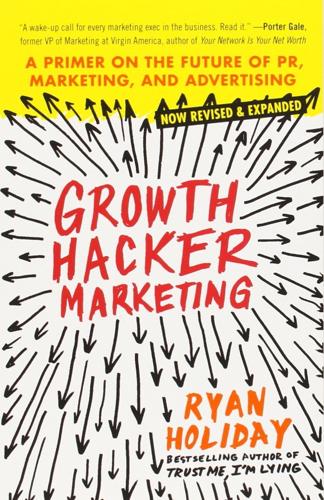
Growth Hacker Marketing: A Primer on the Future of PR, Marketing, and Advertising
by
Ryan Holiday
Published 2 Sep 2013
The new marketing mind-set begins not a few weeks before launch but, in fact, during the development and design phase. So we will begin there, with the most important marketing decision you will likely ever make. STEP 1 It Begins with Product Market Fit Make stuff people want. —Paul Graham You know what the single worst marketing decision you can make is? Starting with a product nobody wants or nobody needs. Yet for years, this was a scenario that marketers tolerated and accepted as part of the job. We all told ourselves that “you go to market with the product you have, not the one you want.”
…
But if you don’t have the time or the access, below are some amazing resources that pick up where this book leaves off. Blogs and Personalities: Andrew Chen’s essays http://andrewchen.co Noah Kagan’s blog http://okdork.com Patrick Vlaskovits http://vlaskovits.com/blog twitter.com/pv Jesse Farmer http://20bits.com Sean Ellis http://www.startup-marketing.com Paul Graham’s essays http://www.paulgraham.com/articles.html Aaron Ginn http://www.aginnt.com Josh Elman https://medium.com/@joshelman Or just follow most of these guys as they answer questions at: http://www.quora.com/Growth-Hacking Books: The Lean Startup by Eric Ries The Lean Entrepreneur by Brant Cooper and Patrick Vlaskovits Founders at Work by Jessica Livingston Viral Loop by Adam L.
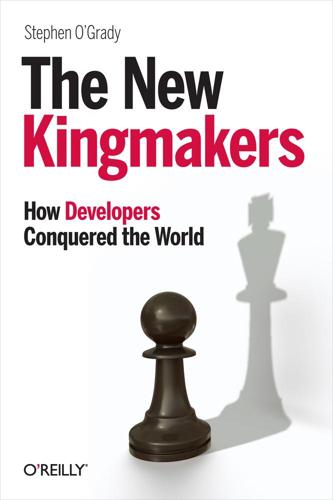
The New Kingmakers
by
Stephen O'Grady
Published 14 Mar 2013
Historically, the funding options available to these entrepreneurs have been limited—angel investors are few and far between, which left only loans from friends, family, banks, or credit unions. Even when venture capitalists took an interest, the deals they offered often were not favorable for entrepreneurs—they frequently provided more money than was required in order to obtain the largest possible share of the company. Then in 2008, Paul Graham’s Y Combinator launched. Recognizing that the technology landscape had dramatically lowered the cost of starting a business, Y Combinator offered substantially less money—typically less than $20,000—in return for a commensurately smaller share of the company. Its average equity stake was around 6%.
…
The code may or may not find a life beyond its original home within the startup, but the acquirer benefits either way. Invest in Developer Relations Born out of government propaganda efforts during the first World War, Public Relations is a profession and a practice that every technology vendor invests in today. As Paul Graham writes: One of the most surprising things I discovered during my brief business career was the existence of the PR industry, lurking like a huge, quiet submarine beneath the news. Of the stories you read in traditional media that aren’t about politics, crimes, or disasters, more than half probably come from PR firms.
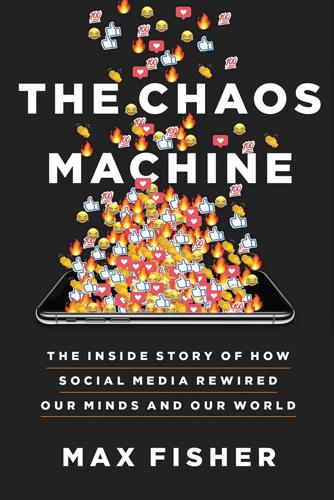
The Chaos Machine: The Inside Story of How Social Media Rewired Our Minds and Our World
by
Max Fisher
Published 5 Sep 2022
Initially circulated to dozens of websites simultaneously, now available at Eff.org/cyberspace-independence. 19 “Our general counsel and CEO”: “Twitter’s Tony Wang: ‘We Are the Free Speech Wing of the Free Speech Party,’” Josh Halliday, The Guardian, March 22, 2012. 20 “the founding ideal”: Levy, Facebook: The Inside Story: 458. 21 While Apple was: This is according to Dave Morin, a former senior engineer at Facebook, as paraphrased in Levy: 149. 22 “We’re kind of fundamentally”: “The Facebook Dilemma,” PBS Frontline, October 29, 2018. 23 a letter to shareholders: “Zuckerberg’s Letter to Investors,” Reuters, February 1, 2012. 24 “There’s this fundamental”: Levy, 7. 25 “The reason we nerds”: Hackers and Painters, Paul Graham, 2004: 9. 26 has said he looks for: “What We Look for in Founders,” Paul Graham, Paulgraham.com, October 2010. 27 “These guys want to”: “What I Did This Summer,” Paul Graham, Paulgraham.com, October 2005. 28 “If you’re less sensitive”: Zero to One: Notes on Startups, or How to Build the Future, Peter Thiel and Blake Masters, 2014: 40. 29 “Max Levchin, my co-founder”: Ibid: 122. 30 A pair of videos: Screenshots documenting the incident can be found at “Kenny Glenn Case / Dusty the Cat,” Knowyourmeme.com, September 10, 2011. 31 made it wildly popular: “Media Manipulation and Disinformation Online,” Alice Marwick and Rebecca Lewis, Data & Society, May 2017. 32 “Ultimately,” Christopher Poole: “The Trolls Among Us,” Mattathias Schwartz, New York Times Magazine, August 3, 2008. 33 Adolescents also have: Behave: The Biology of Humans at Our Best and Worst, Robert M.
…
“I do think that’s the engineering mindset—it may even be more a value set than a mindset.” But that idealism—the belief that whichever startups won the most users could and should remake all of society—reflected a hubris that would prove catastrophic. “The reason we nerds didn’t fit in was that in some ways we were a step ahead,” Paul Graham, the investor whose incubator had launched Reddit, once wrote. Future Valleyites were “consistently unpopular” as kids, he argued, because “we were already thinking about the kind of things that matter in the real world, instead of spending all our time playing an exacting but mostly pointless game like the others.”
…
It launched the era of the hoodie-wearing twenty-two-year-old hacker-founder-CEO. The executive team staffed by the founder’s friends. The corporate cultures boldly, proudly defiant of grown-ups in suits. “Why are most chess masters under thirty?” Zuckerberg had once asked a hall of 650 would-be founders at Paul Graham’s startup incubator. “Young people are just smarter.” He urged the audience’s would-be executives to hire accordingly. Graham himself urged fellow investors to swing young, saying in a public talk, “in software, you want to invest in students, not professors.” Business experience, life experience, and advanced degrees were liabilities, not assets.
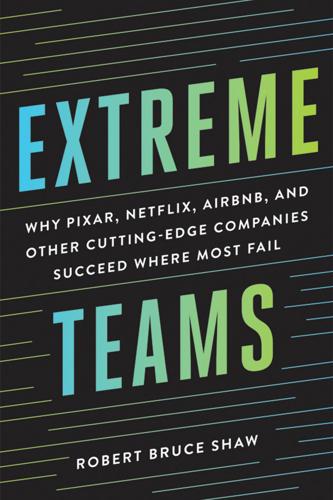
Extreme Teams: Why Pixar, Netflix, AirBnB, and Other Cutting-Edge Companies Succeed Where Most Fail
by
Robert Bruce Shaw
,
James Foster
and
Brilliance Audio
Published 14 Oct 2017
Which means people with a desire to improve the world have a natural advantage.” Paul Graham blog, November 2014. paulgraham.com/mean.html. 33The Anarchist’s Cookbook. Charles Fishman. Fast Company, July 1, 2014. Justin Fox. The HBR Interview: What Is It That Only I Can Do? Harvard Business Review. January-February 2011. 34Paul Graham observes, “It’s unlikely that every successful startup improves the world. But their founders, like parents, truly believe they do. Successful founders are in love with their companies. And while this sort of love is as blind as the love people have for one another, it is genuine.” Paul Graham blog. Paulgraham.com/mean.html. 35This higher purpose doesn’t mean that Apple hasn’t made mistakes over its history, outsourcing some of its manufacturing to plants that operated in manner that calls into question their treatment of employees. 36Amy Wrzesniewski, C.
…
That’s why people here in Alibaba are united.25 Obsession comes in three, frequently interconnected, forms. The first, and most important, is an obsession with the work itself and resulting product. In many cutting-edge firms and teams, people view work as central to their identities—not something they do but something they are. Paul Graham, a well-known investor in startup firms, suggests that these people are ridiculously committed to what they produce—fixating, for example, on product details that customers don’t even notice. These are also people who persevere and survive when others are defeated by the challenges they face.26 Obsessive people work primarily to satisfy their own needs.
…
Aug 31, 2015 22See Geoff Colvin, (New York: Portfolio, 2008). 23Andre Agassi, (New York: Vintage, 2010). 24See the group’s website, www.workaholics-anonymous.org/. 25Xiao-Ping Chen, “Company Culture and Values Are the Lifelines of Alibaba: An Interview with Jack Ma, Founder and Executive,” Executive Perspectives, August 2013, www.iacmr.org/V2/Publications/CMI/LP021101_EN.pdf. 26Graham describes the best founders as being cockroach like—in that they will survive anything, including a nuclear winter, while others perish. See Airbnb, “Conversation with Paul Graham,” YouTube. www.youtube.com/watch?v=nrWavoJsEks. 27“Innovation lessons from Pixar: An interview with Oscar-winning director Brad Bird,” McKinsey Quarterly Hayagreeva Rao, Robert Sutton, and Allen P. Webb. April 2008. 28Anthony Lane, “The Fun Factory: Life at Pixar,” New Yorker, May 16, 2011. Jon Michaud, “Animated by Perfectionism,” New Yorker, May 16, 2011.

Brave New Work: Are You Ready to Reinvent Your Organization?
by
Aaron Dignan
Published 1 Feb 2019
“All managers at Handelsbanken”: Handelsbanken, “Anders Bouvin, new President and Group Chief Executive of Handelsbanken,” press release, August 16, 2016, http://news.cision.com/handelsbanken/r/anders-bouvin--new-president-and-group-chief-executive-of-handelsbanken,c2059556. “do things that don’t scale”: Paul Graham, “Do Things That Don’t Scale,” Paul Graham, http://paulgraham.com/ds.html. recent research by David DeSteno: David DeSteno, The Truth About Trust: How It Determines Success in Life, Love, Learning, and More (New York: Plume, 2014). “Questions are places in your mind”: Jason Fried, “What are questions?,” Medium, August 1, 2016, https://m.signalvnoise.com/what-are-questions-51c20fde777d.
…
You’ll be surprised how easy it is to scale something that has been validated and improved by the people who have to use it every day. When your team is taking smaller bites, there’s a feeling of momentum, and the electricity of that is palpable. Other teams see it. They feel it. And they want it for themselves. None of this is to say that scale doesn’t matter, just that it’s not our first priority. Paul Graham, one of the cofounders of the startup incubator Y Combinator, advises his startups to “do things that don’t scale.” What he means is that in the early days of anything new, worrying about scale can prevent us from learning, growing, and being remarkable. Think systemically. Act locally. And let scale happen.
…
A complete list of influences would be far too long (you should see my Brave New Work library), so I’ll simply thank those who have taught me the most: Dennis Bakke, Steve Blank, Jos de Blok, Bjarte Bosgnes, Jacob Bøtter, Brian Carney, James Carse, W. Edwards Deming, David Dewane, Peter Drucker, Amy Edmondson, Charles Eisenstein, Gerard Endenburg, Robin Fraser, Jason Fried, Isaac Getz, James Gleick, Seth Godin, Deborah Gordon, Paul Graham, Adam Grant, Dave Gray, Gary Hamel, David Heinemeier Hansson, Tim Harford, Frederick Herzberg, Jeremy Hope, Steven Johnson, Daniel Kahneman, Kevin Kelly, David Kidder, Doug Kirkpatrick, Henrik Kniberg, Lars Kolind, John Kotter, Frederic Laloux, Jason Little, David Marquet, John E. Mayfield, Douglas McGregor, Greg McKeown, Melanie Mitchell, Taiichi Ohno, Tom Peters, Niels Pflaeging, Daniel Pink, Adam Pisoni, Eric Ries, Brian Robertson, Ricardo Semler, Peter Senge, Simon Sinek, Dave Snowden, Nassim Taleb, Ben Thompson, Geoffrey West, Meg Wheatley, Keith Yamashita, Jean-Francois Zobrist, and the few I forgot.

The Upstarts: How Uber, Airbnb, and the Killer Companies of the New Silicon Valley Are Changing the World
by
Brad Stone
Published 30 Jan 2017
Before they left for the interview, Gebbia went to grab boxes of the cereal. Blecharczyk snapped at him. “No, no, no,” he said. “Keep the cereal at home.” Gebbia pretended to acquiesce, then surreptitiously slipped two boxes into his bag anyway. The interview at Y Combinator’s offices in Mountain View was practically hostile. “People are actually doing this?” asked Paul Graham, the program’s legendary co-founder, when the three men described the home-sharing concept. “Why? What’s wrong with them?” Graham, then forty-four, later admitted that he didn’t get it. “I wouldn’t want to stay on anyone else’s sofa and I didn’t want anyone to stay on mine,” he says. But after they turned to go, to Blecharczyk’s consternation, Gebbia brought out the two boxes of cereal and handed them to Graham, who was rightfully confused.
…
McAdoo and his partners had identified this kind of true grit as the most important attribute in the founders of their successful portfolio companies, like Google and PayPal. Scouting for new opportunities despite the gathering economic storm enveloping the world, McAdoo asked Graham: “So, who in this class of startups is the most mentally, emotionally tough?” “Well, that’s easy,” Paul Graham responded, and he pointed across the room at two designers and an engineer, all hunkered over their laptops. “Hands down, it’s those guys over there.” CHAPTER 2 JAM SESSIONS The Early Years of Uber When you open up that app and you get that experience of, like, I am living in the future, like I pushed a frickin’ button and a car showed up and now I’m a pimp—Garrett is the guy who invented that shit!
…
McAdoo spent nearly a year sizing up these companies, but he wasn’t convinced that any of them had a particularly novel approach. “It was a very fragmented market and it was never clear how it should be presented online,” he said many years later. “Frankly, I had moved on.” Then, in early 2009, he sat down for coffee with Y Combinator chief Paul Graham and started talking about the mental toughness that founders needed, and Graham pointed across the room to the Airbnb guys as prime examples. McAdoo introduced himself to Brian Chesky, Joe Gebbia, and Nathan Blecharczyk that day and was struck by their approach. The vacation-rental startup founders he had talked to were trying to make the experience better for travelers; the Airbnb guys wanted to make it better for hosts.
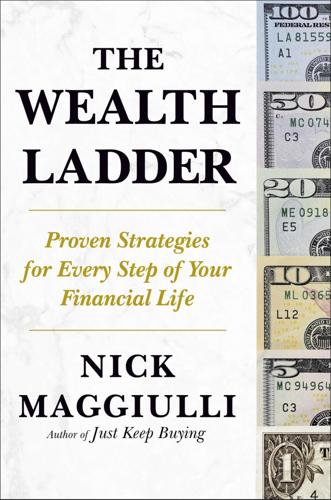
The Wealth Ladder: Proven Strategies for Every Step of Your Financial Life
by
Nick Maggiulli
Published 22 Jul 2025
: How Changes in the Characteristics of Borrowers and in the Institutions They Attended Contributed to Rising Loan Defaults,” Brookings Papers on Economic Activity 2015, no. 2 (2015): 1–89. BACK TO NOTE REFERENCE 4 Food and Agriculture Organization of the United Nations (FAO), World Food and Agriculture—Statistical Yearbook 2023 (Rome: FAO, 2023), https://doi.org/10.4060/cc8166en. BACK TO NOTE REFERENCE 5 Paul Graham, “How to Do Great Work,” Paul Graham (blog), July 2023, https://paulgraham.com/greatwork.html. BACK TO NOTE REFERENCE 6 James Donaldson, interviewed by Joe Rogan, “Mr.Beast,” The Joe Rogan Experience (podcast), March 7, 2022, https://open.spotify.com/episode/5lokpznqvSrJO3gButgQvs. BACK TO NOTE REFERENCE 7 Nicolas Vega, “MrBeast Brings in $700 Million a Year but Says He’s Not Rich: ‘I’ve Reinvested Everything to the Point of Stupidity,’ ” CNBC, February 15, 2024, https://www.cnbc.com/2024/02/15/mrbeast-brings-in-700-million-a-yearheres-why-he-says-hes-not-rich.html.
…
Work was about survival, plain and simple. It’s only in the last few hundred years that most of humanity has freed itself from this kind of existence. As of 2021, only 27 percent of the world’s population still works in agriculture.[5] As a result, most of us must decide what to do with our lives. Paul Graham, the founder of Y Combinator, wrote an essay titled “How to Do Great Work” that provides a useful starting point. As he says, “The work you choose needs to have three qualities: it has to be something you have a natural aptitude for, that you have a deep interest in, and that offers scope to do great work.”[6] I’d reformulate Graham’s third point to be “what people will pay for” instead.

The New Urban Crisis: How Our Cities Are Increasing Inequality, Deepening Segregation, and Failing the Middle Class?and What We Can Do About It
by
Richard Florida
Published 9 May 2016
In fact, my research shows empirically that artistic and cultural creativity acts alongside the high-tech industry and business and finance to power economic growth. The current urban trend in high tech is not so much a startling reversal as a correction of a historical aberration. The venture capital icon Paul Graham saw the writing on the wall in 2006. For all its advantages and power, he wrote, Silicon Valley had a great weakness. This high-tech “paradise,” with its roots in the 1950s and 1960s, had become “one giant parking lot,” he observed. “San Francisco and Berkeley are great, but they’re 40 miles away.
…
“The change has created a new vocabulary: Yuppification, croissantification, Manhattanization.”22 Techies and tech startups are just the latest players in a much longer running battle over urban space. That said, the incredible wealth generated by tech startups can and does contribute to the growing gaps between the advantaged and less advantaged. It’s not just lefties and activists who are raising concerns. In a hotly debated essay, venture capitalist Paul Graham argued that startup cities and high-tech districts are “manufacturers of inequality,” but nevertheless defended them as the price of progress: “You can’t prevent great variations in wealth without preventing people from getting rich, and you can’t do that without preventing them from starting startups,” he wrote.
…
Alessandro Piol and Maria Teresa Cometto, Tech and the City: The Making of New York’s Startup Community (San Francisco: Mirandola Press, 2013). 19. “Stern’s Urbanization Project Hosts a Conversation with Richard Florida and Fred Wilson,” NYU Stern School of Business, October 9, 2013, www.stern.nyu.edu/experience-stern/news-events/conversation-florida-wilson. 20. Paul Graham, “How to Be Silicon Valley,” PaulGraham.com, May 2006, www.paulgraham.com/siliconvalley.html. 21. Rory Carroll, “Oakland: The City That Told Google to Get Lost,” The Guardian, February 11, 2014, www.theguardian.com/technology/2014/feb/10/city-google-go-away-oakland-california; Ellen Huet, “Protesters Block, Vomit on Yahoo Bus in Oakland,” SFGate, April 2, 2014, http://blog.sfgate.com/techchron/2014/04/02/protesters-block-vomit-on-yahoo-bus-in-oakland; Rebecca Solnit, “Diary: Google Invades,” London Review of Books, February 7, 2013, 34–35, www.lrb.co.uk/v35/n03/rebecca-solnit/diary.
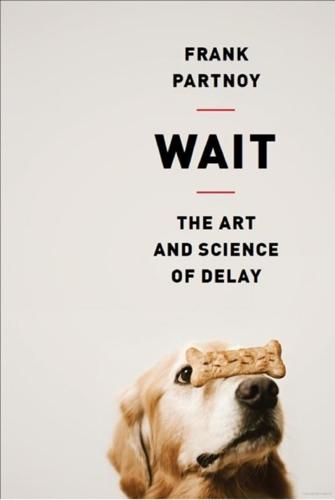
Wait: The Art and Science of Delay
by
Frank Partnoy
Published 15 Jan 2012
If our problems are the result of high discount rates, so that we make decisions that leave us worse off, then procrastination is an evil and we should make every effort to stop. But often we use the term to describe behavior that is not so bad. Sometimes it is good to procrastinate. In 2005, Paul Graham, a computer programmer, investor, writer, and painter, wrote an essay called “Good and Bad Procrastination.” He opens by saying, “The most impressive people I know are all terrible procrastinators. So could it be that procrastination isn’t always bad? Most people who write about procrastination write about how to cure it.
…
But if we are working on something important, then does it really make sense to judge us negatively for not working on something less important? If we put off errands because we are trying to cure cancer, are we really procrastinating? And if that is the meaning of procrastination, why is it so bad? For Paul Graham, procrastination is all about trade-offs. We are constantly trading off what we are doing now against what we might do in the future. As long as we are doing that in a reasonable way, it doesn’t matter that we are putting some things off. In February 1996, John Perry, a philosophy professor at Stanford University, finally got around to writing an essay about procrastination for the Chronicle of Higher Education.
…
He didn’t suffer from self-control problems or impatience generally. He felt bad about not sending the box—we often feel bad about not doing things—but his behavior didn’t suggest that his short-term discount rate was too high. The cost of sending the box was high, and the benefit was low. The box was like one of Paul Graham’s important tasks or John Perry’s book-order forms. Akerlof was in India beginning work on a research program that would lead to dozens of articles, numerous influential books, and a Nobel Prize. For eight months, that box was at the top of Akerlof’s to-do list, a salient task that he put off each day.
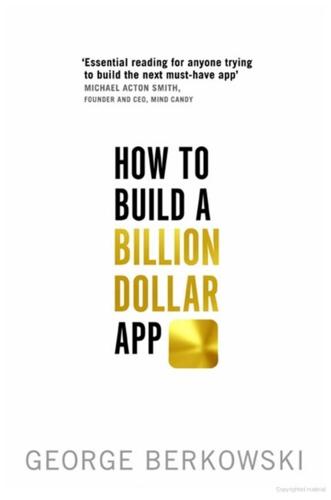
How to Build a Billion Dollar App: Discover the Secrets of the Most Successful Entrepreneurs of Our Time
by
George Berkowski
Published 3 Sep 2014
Throughout this stage of the journey we’ll focus on how best to use your seed financing to achieve these goals and set the foundations for a solid app company – and put you in a great place to seduce some serious professional investors to allow you to expand your team and accelerate growth. How to Deliver Wow Paul Graham – one of the founders of Y Combinator, Silicon Valley’s top startup incubator – offers a great morsel of advice after decades of experience delivering software: ‘Don’t build something clever, build what people want.’ The nature of technology – and software companies in particular – has evolved quickly over the last decade.
…
I get very excited about being able to objectively measure how much users love an app that I have helped build. There is something great about creating a positive feedback loop that constantly drives improvements – improvements that first and foremost enhance the experience for users, and, as a by-product, improve the performance of your business. Another simple piece of advice from Y Combinator’s Paul Graham takes us to the next level of measurement: ‘Build something users love, and spend less than you make.’1 To achieve this you first need not only to be able to continually measure how much users love your app but also to start building a picture around the costs – and revenue – driven by your users.
…
As we’ve seen, meetings first thing in the morning – daily stand-ups, where developers and designers quickly discuss what they did yesterday, what they’re doing today and anything that’s blocking their progress – are helpful. Facebook has a loose policy called ‘No-Meeting Wednesday’, when engineers are encouraged to ‘stay focused on building products’. Y Combinator’s Paul Graham echoes this idea on his blog: When you’re operating on the maker’s schedule, meetings are a disaster because they disrupt the creative flow. You can’t write or program well in units of an hour. That’s barely enough time to get started.6 For a maker, a single meeting can destroy their flow for a whole afternoon, by breaking it into two pieces each too small to do anything meaningful in.
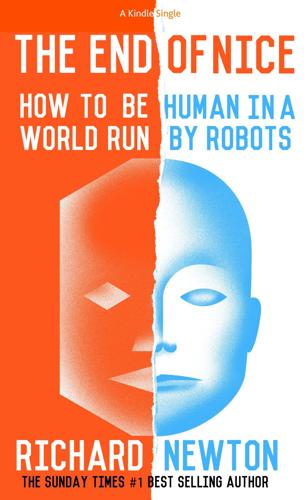
The End of Nice: How to Be Human in a World Run by Robots (Kindle Single)
by
Richard Newton
Published 11 Apr 2015
They’re not Goody Two-Shoes type good. Morally, they care about getting the big questions right, but not about observing proprieties. That’s why I’d use the word naughty rather than evil. They delight in breaking rules, but not rules that matter. This quality may be redundant though; it may be implied by imagination.” – Paul Graham, founder of Y Combinator In his autobiography, Mark Twain tells of his childhood friend, Tom Blankenship, who was the inspiration for Huckleberry Finn, a character who was poorly educated and stood outside society but as a result appraised the world and society around him with a clear and critical eye: “In Huckleberry Finn I have drawn Tom Blankenship exactly as he was.
…
In contrast, this more detailed recent research suggests that Mozart was in fact wrestling with his composition all day long, sometimes on paper and sometimes in his prodigious memory. Far from being the passive recipient of great work, the truth is that creativity is work – a great deal of it. Grit The magic lies, brace yourself, in determination. When he spoke about the number one quality he looks for in founders, Paul Graham of Y Combinator said: “Determination. This has turned out to be the most important quality in start-up founders. We thought when we started Y Combinator that the most important quality would be intelligence. That’s the myth in the Valley. And certainly you don’t want founders to be stupid. But as long as you’re over a certain threshold of intelligence, what matters most is determination.
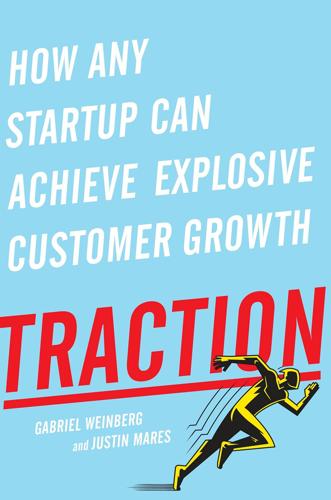
Traction: How Any Startup Can Achieve Explosive Customer Growth
by
Gabriel Weinberg
and
Justin Mares
Published 5 Oct 2015
So if you’re in enterprise software, [initial traction] may be two or three early customers who are paying a bit; if you’re in consumer software the bar might be as high as hundreds of thousands of users. You can always get more traction. The whole point of a startup is to grow rapidly. Getting traction means moving your growth curve up and to the right as best you can. Paul Graham, founder of startup accelerator Y Combinator, puts it like this: A startup is a company designed to grow fast. Being newly founded does not in itself make a company a startup. Nor is it necessary for a startup to work on technology, or take venture funding, or have some sort of “exit.” The only essential thing is growth.
…
Phase I is very product focused and involves pursuing initial traction while also building your initial product. This often means getting traction in ways that don’t scale—giving talks, writing guest posts, emailing people you have relationships with, attending conferences, and doing whatever you can to get in front of customers. As Paul Graham said in his essay “Do Things That Don’t Scale”: A lot of would-be founders believe that startups either take off or don’t. You build something, make it available, and if you’ve made a better mousetrap, people beat a path to your door as promised. Or they don’t, in which case the market must not exist.
…
CHAPTER SIX Targeting Blogs Targeting blogs prospective customers read is one of the most effective ways to get your first wave of customers. However, this traction channel can be difficult to scale in phases II and III due to the limited number of relevant high-traffic blogs. That’s okay. Not all traction channels are infinitely scalable. In fact, using tactics that don’t scale is one of the best ways to get your first customers. Paul Graham put it like this: The need to do something unscalably laborious to get started is so nearly universal that it might be a good idea to stop thinking of startup ideas as scalars. Instead we should try thinking of them as pairs of what you’re going to build, plus the unscalable thing(s) you’re going to do initially to get the company going.
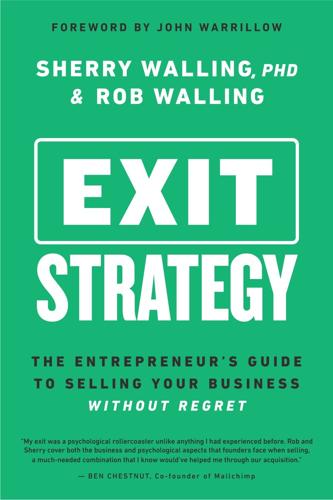
Exit Strategy
by
Sherry Walling, Rob Walling
Published 22 Nov 2024
When you need a connection, especially locally, the people you meet during your post-exit employment can be invaluable. Learn to Slow Down “When Viaweb was bought by Yahoo, I suddenly found myself working for a big company, and it was like trying to run through waist-deep water.” — Paul Graham, “The Other Road Ahead.”6 If you’ve ever worked for a big company, you’ll understand Paul Graham’s analogy. If you haven’t and are about to, you’ll understand it soon. When you’re a founder running a small company, you get used to doing things quickly. You can get a request for a new product feature over the weekend and have it implemented by the end of the week.
…
Adii.me. May 14, 2024 https://adii.me/when-the-student-is-ready/ 5 Elaine Hatfield, John Cacioppo, and Richard Rapson, "Emotional Contagion," Current Directions in Psychological Science 2, no. 3 (1993): 96–99,https://doi.org/10.1111/1467-8721.ep10770953. 6 Paul Graham, “The Other Road Ahead,” September 2001, https://paulgraham.com/road.html
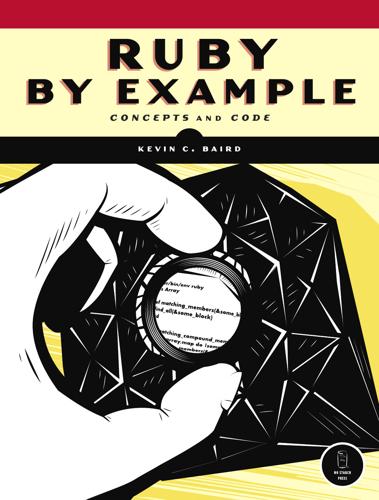
Ruby by example: concepts and code
by
Kevin C. Baird
Published 1 Jun 2007
If you use CGI, you could write part of your web application in Python in order to use that library. You might also have a section of your web application that is highly speed critical, so you could write that part in C for execution speed, and the rest in Ruby for development speed. This is exactly the reason that Paul Graham and his colleagues chose to use a combination of Lisp and C for their company Viaweb, which eventually became Yahoo! Stores. They were able to do so because the CGI specification holds across multiple languages. Preparation and Installation Before we get going with Ruby and CGI, we’ve got to do a little work to get our webserver ready.
…
Lisp has been called “the most intelligent way to misuse a computer.”3 It is properly understood as a family of languages or a language specification, rather than a single language. It is also diverse enough to resist many classification attempts, but for our purposes, the Lisps can be thought of mainly as functional languages with weak, dynamic typing. Renowned Lisper Paul Graham describes “What Made Lisp Different” at http://paulgraham.com/ diff.html, and it’s interesting to note that Ruby shares all of these features except for Lisp’s peculiar syntax. Lisp’s syntax (or lack thereof) is probably its most noteworthy feature, at first glance. Lisp code consists of bits of data bound by opening and closing parentheses.
…
Lisp code consists of bits of data bound by opening and closing parentheses. These bits are called lists, and they give Lisp its name (which 2 You can read more about Parrot at http://www.parrotcode.org; I’ll cover Python later in this appendix. 3 Dutch computer science Edsger Dijkstra said this; you can find this and other interesting quotes compiled by Paul Graham at http://www.paulgraham.com/quo.html. Ho w D oes R ub y C om pa re t o O th er L an g ua ges ? 263 comes from LISt Processing).4 Having a syntax that is representable as a data structure within the language itself is Lisp’s most defining characteristic. Arguably, another language that implemented this same feature would not be a distinct language per se, but rather another dialect of Lisp.5 A good argument can be made that Ruby tries to take concepts from Lisp and present them within a more user-friendly framework that also takes advantage of good ideas from object orientation, as well as good text manipulation.

Supremacy: AI, ChatGPT, and the Race That Will Change the World
by
Parmy Olson
Y Combinator would go on to become the most successful start-up accelerator of all time, seeding $400 billion worth of tech companies with names like Airbnb, Stripe, and Dropbox. Altman, who was now nineteen, didn’t know any of this at the time. Most investors in Silicon Valley dismissed Y Combinator as a silly summer camp for hackers. Its creator was Paul Graham, a forty-one-year-old cargo shorts–wearing computer scientist who’d become a millionaire after selling his e-commerce company to Yahoo. Having achieved his wealth, Graham had fashioned himself as a thought leader, publishing essays on his website about topics beyond the purview of software geeks, from economics to having kids, from free speech to being a nerd in high school.
…
Help someone fundraise for their start-up, and they might help you hire that talented engineer. As his travels drew to a close, Altman started an early-stage investment firm called Hydrazine Capital to make financial bets on start-ups, from life sciences to education software companies. He drew on his connections with some of Silicon Valley’s most powerful financiers. Paul Graham and Peter Thiel, an early investor in Facebook, added to the $21 million pot of money Altman raised for the fund. Thiel, known today as an enigmatic billionaire whose ideas border on science fiction, would become a kingmaker in the quest to build powerful AI, helping to fund both Altman and Demis Hassabis in London.
…
A year into heading YC, Altman had all but sealed his reputation as Silicon Valley’s new maharishi. He was getting four hundred meeting requests a week. He’d become a magnet for investors and start-up founders who wanted to use him to access other start-ups and partners in Y Combinator or just to meet the even-more-ambitious, sci-fi version of Paul Graham. On blog.samaltman.com, Altman was pontificating on topics that were clearly beyond his area of expertise. He wrote about UFOs and regulation, and he gave advice on how to be a good conversationalist at a dinner party. Don’t ask people what they do, Altman wrote. Instead, ask what someone is interested in.
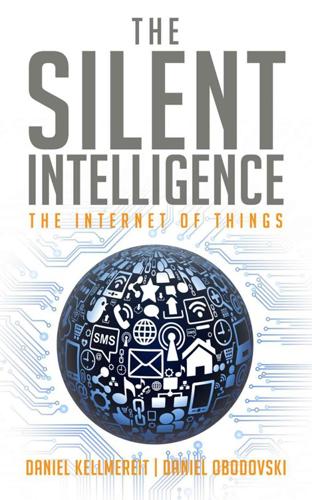
The Silent Intelligence: The Internet of Things
by
Daniel Kellmereit
and
Daniel Obodovski
Published 19 Sep 2013
In the next chapter we will take a look at the investment attractiveness of the M2M space. 27 Luke Dempsey, “Monty Python’s Flying Circus: Complete and Annotated … All the Bits,” Python Productions, Ltd., 159. (Source: http://en.wikipedia.org/wiki/Kilimanjaro_Expedition.) 28 Donald A. Norman, The Design of Everyday Things (New York: Basic Books, 1988). Chapter 7 WHERE TO INVEST All creative people want to do the unexpected. ~ Hedy Lamarr According to Paul Graham of Y Combinator, the best way to get start-up ideas is not to think of start-up ideas. Instead, one should focus on problems one has firsthand experience with.29 This is great advice for both start-up and corporate entrepreneurs, but what about investors? How would investors know where to put their money if they are not familiar with the space and specific problems?
…
Specifically, on the data mining and statistical analysis of data as well as on the data acquisition side — hardware — that’s where we believe the most opportunities for innovation and investment are. But at the end of the day, the best investment opportunities are going to be driven by very well-defined problems that the Internet of Things will help solve: increased visibility, increased productivity, reduced guesswork, better risk management, and better connection to our environment. 29 Paul Graham, “How to Get Startup Ideas,” November 2012. http://www.paulgraham.com/startupideas.html. 30 Iain Morris, “Intelligent Systems to Drive Value in M2M Market: IDC,” Telecom Engine, June 4, 2013. http://www.telecomengine.com/article/intelligent-systems-drive-value-m2m-market-idc. 31 Singularity University, “What Is Singularity University?”
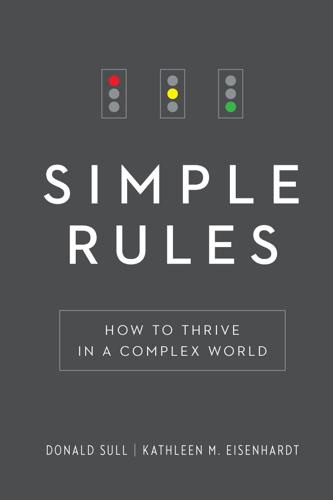
Simple Rules: How to Thrive in a Complex World
by
Donald Sull
and
Kathleen M. Eisenhardt
Published 20 Apr 2015
This was another opportunity to learn—this time through presenting Airbnb’s story and getting feedback and insights from peers. These dinners created a relentless weekly rhythm of stepping back to reflect, getting feedback and ideas, and heading back to work. Another way of learning was through tailored expert advice. The Airbnb founders gained two pivotal insights from Y Combinator cofounder Paul Graham that critically reframed their conception of what to do. One piece of advice was counterintuitive—forget about growing Airbnb, and instead focus on creating the perfect Airbnb experience. Graham’s argument was, “It’s better to have a hundred people love you than to have a million people like you.”
…
In fact, Airbnb has more guests over fifty-five years old than between eighteen and twenty-five, and accommodations, including Italian villas and beachfront bungalows, are not always cheap. Pursuing many ways of learning increases the likelihood of creative insights. The founders of Airbnb could not have predicted, for example, that Paul Graham’s advice would be so essential to reimagining their simple rules. Yet by pursuing many avenues of learning, the founders improved their odds of experiencing the aha moments. Multitasking in learning also works because when people learn the same lesson in different ways, the learning is reinforced and better learned.
…
. [>] Because of the success: Ibid. [>] Y Combinator is a “seed accelerator”: Benjamin L. Hallen, Christopher B. Bingham, and Susan L. Cohen, “Do Accelerators Accelerate? A Study of Venture Accelerators as a Path to Success” (working paper, University of Washington, Seattle, 2013). [>] At this point: Paul Graham, October 2013, “What Happens at Y Combinator,” http://ycombinator.com/atyc.html, accessed April 28, 2014; and Freedman, 2013, “YC Without Being in YC,” http://blog.42floors.com, accessed April 28, 2014. Firsthand account of how former Y Combinator entrepreneurs mimicked the Y Combinator experience by pretending that they had just been accepted again. [>] Another way of learning: Derek Thompson, “Airbnb CEO Brian Chesky on Building a Company and Starting a Sharing Revolution,” Atlantic, August 13, 2013, http://www.theatlantic.com/business/archive/2013/08/airbnb-ceo-brian-chesky-on-building-a-company-and-starting-a- sharing-revolution/278635/. [>] As Brian recalled: Ibid. [>] Like clockwork: Tame, “From Toilet Seats to $1 Billion.” [>] The founders coupled these: Jessie Hempel, “More Than a Place to Crash,” Fortune, May 3, 2012, http://fortune.com/2012/05/03/airbnb-more-than-a-place-to-crash/. [>] The founders also had: Vella and Bradley, “Airbnb CEO—‘Grow Fast but not Too Fast.’” [>] Airbnb ended up with: Tomio Geron, “Airbnb Hires Joie de Vivre’s Chip Conley as Head of Hospitality,” Forbes, September 17, 2013, http://www.Forbes.com/sites/tomiogeron/2013/09/17. [>] In fact, Airbnb: Salter, “Airbnb: The Story Behind the $1.3bn Room-Letting Website.” [>] Airbnb has become: Thompson, “Airbnb CEO Brian Chesky on Building a Company and Starting a Sharing Revolution.” 8.

The Internet Is Not the Answer
by
Andrew Keen
Published 5 Jan 2015
The bigger their success, the more exaggerated their claim to being serial failures. “How I Failed,” O’Reilly thus titled a much-hyped 2013 keynote speech at one of his own successful events.4 But O’Reilly has some stiff competition in this failure Olympiad. Reid Hoffman, the billionaire founder of LinkedIn, advises entrepreneurs to “fail fast.”5 Paul Graham, a multimillionaire angel investor, calls his incubator of startup Internet ventures, which has hatched many successful startups, including Alexis Ohanian’s Reddit, “Failure Central,”6 while Dave McClure, another wealthy angel, not to be outfailed by his successful rival, talks up his equally successful 500 Startups incubator as “Fail Factory.”7 Indeed, the cult of failure has become such a mania in the Valley that there is now even an entire event, a San Francisco conference called FailCon, dedicated to its veneration.
…
Reid Hoffman, the billionaire founder of LinkedIn, advises entrepreneurs to “fail fast.”5 Paul Graham, a multimillionaire angel investor, calls his incubator of startup Internet ventures, which has hatched many successful startups, including Alexis Ohanian’s Reddit, “Failure Central,”6 while Dave McClure, another wealthy angel, not to be outfailed by his successful rival, talks up his equally successful 500 Startups incubator as “Fail Factory.”7 Indeed, the cult of failure has become such a mania in the Valley that there is now even an entire event, a San Francisco conference called FailCon, dedicated to its veneration. But, of course, winner-take-all entrepreneurs like Reid Hoffman, Tim O’Reilly, and Paul Graham know as much about failure as Michael and Xochi Birch know about running a village pub. And so to find failure, a genuine Failure Central, I’d flown 2,700 miles east, from San Francisco to Rochester. But, on my arrival, the only hint of “failure” in the airport terminal was the glossy cover of a technology business magazine displayed in the window of an airport bookstore.
…
Having bought a $37.5 million, 89-acre property in Half Moon Bay, a coastal town just south of San Francisco, Khosla unilaterally declared independence and blocked all public access to a much-loved local beach beside his property.74 Balaji Srinivasan, a Stanford University lecturer and startup entrepreneur, has taken the secession fantasy one crazy step further. At one of Paul Graham’s “Failure Central” Y Combinator startup events, Srinivasan pitched the concept of what he called “Silicon Valley’s Ultimate Exit,” a complete withdrawal of Silicon Valley from the United States. “We need to build opt-in society, outside the US, run by technology,” is how he described a ridiculous fantasy that would turn Silicon Valley into a kind of free-floating island that Wired’s Bill Wasik satirizes as the “offshore plutocracy of Libertaristan.”75 And one group of “Libertaristanians” at the Peter Thiel–funded, Silicon Valley–based Seasteading Institute, founded by Patri Friedman, a former Google engineer and the grandson of the granddaddy of free-market economics, Milton Friedman, has even begun to plan floating utopias that would drift off the Pacific coast.76 Behind all these secession fantasies is the very concrete reality of the secession of the rich from everyone else in Silicon Valley.
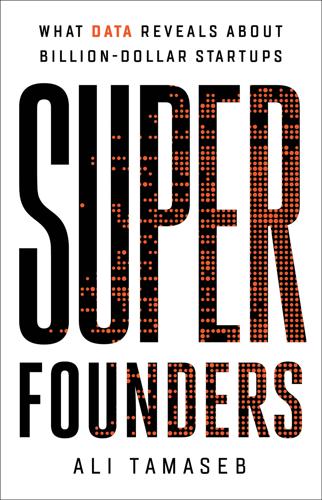
Super Founders: What Data Reveals About Billion-Dollar Startups
by
Ali Tamaseb
Published 14 Sep 2021
I grant that there may be a formula in enterprise software where you take domain expertise and leverage it. But in consumer and micro merchant and SMB [small/medium business] companies, which are canonically what I have invested in, I don’t think expertise helps. When looking to invest in founders, I look for founder traits, not the founder-market fit. Paul Graham wrote a great blog post I really love about being relentlessly resourceful. I think that’s an absolute ingredient. I think IQ is pretty important. You need to see things other people just don’t see. Ultimately, the best description of what I’m looking for is people who can navigate this intellectual maze.
…
Inexperienced founders make the same mistake when trying to convince investors. They try to convince with their pitch. Most would be better off if they let their startup do the work—if they started by understanding why their startup is worth investing in, then simply explained this well to investors. —PAUL GRAHAM, CO-FOUNDER OF Y COMBINATOR Ryan Hudson was ordering pizza. He really wished he had a coupon. Money was tight after several back-to-back startup failures, and he’d become accustomed to cost-saving measures. Recently, he’d called the cable company, the internet provider, and every one of his utility providers to negotiate his monthly bill down by $200 in total.
…
We couldn’t raise a single dollar and we were a year and a half into the business.”2 To get themselves out of debt, the founders started selling boxes of cereal branded with the names of the presidential candidates in the 2008 election, Obama O’s and Cap’n McCain’s, at forty dollars a box. They made over $30,000 in profits from the cereals, which helped them continue building Airbnb. Eventually, a year and a half after founding, the startup landed a spot in Y Combinator. Paul Graham accepted them specifically because they were “cockroaches”: they were tenacious and had tried everything to survive, including selling cereal. Graham was looking for cockroaches during the 2008 recession. During a YC dinner, the co-founders met Greg McAdoo, a partner from Sequoia Capital, and they walked up to pitch him.
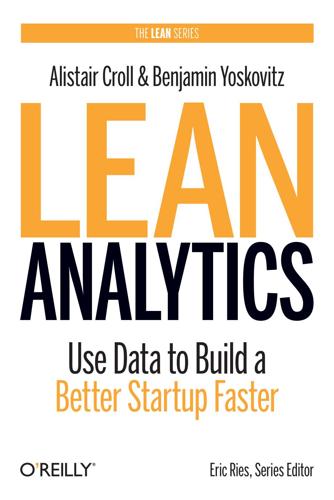
Lean Analytics: Use Data to Build a Better Startup Faster
by
Alistair Croll
and
Benjamin Yoskovitz
Published 1 Mar 2013
You need to step back, ignore all the details, and just think about the really big components. When you reduce things to their basic building blocks in this way, you come up with only a few fundamental business models on the Web. Interestingly, all of them share some common themes. First, their aim is to grow (in fact, Paul Graham says that a focus on growth is the one defining attribute of a startup).[21] And second, that growth is achieved by one of Eric Ries’s fundamental Engines of Growth: an increase in stickiness, virality, or revenue. Each business model needs to maximize the thrust from these three engines in order to flourish.
…
Remember, though, that while you might turn immediately to the chapter for your business model, there’s always some overlap and relevant metrics in other business models that should be helpful to you. So we encourage you to look at what’s normal for other business models, too. Growth Rate Investor Paul Graham makes a good case[78] that above all else, a startup is a company designed to grow fast. In fact, it’s this growth that distinguishes a startup from other new ventures like a cobbler or a restaurant. Startups, Paul says, go through three distinct growth phases: slow, where the organization is searching for a product and market to tackle; fast, where it has figured out how to make and sell it at scale; and slow again, as it becomes a big company and encounters internal constraints or market saturation, and tries to overcome Porter’s “hole in the middle.”
…
One study showed that Pinterest users spend 14 minutes on the site each day, Tumblr users spend 21 minutes a day, and Facebook users spend an hour a day on the site.[127] Bottom Line You’ll have a very good indicator of stickiness when site visitors are spending 17 minutes a day on your site. Reddit Part 1—From Links to a Community From humble beginnings as a startup in the first cohort of Paul Graham’s Y Combinator accelerator, reddit has grown to be one of the highest-traffic destinations on the Web. Reddit began as a simple link-sharing site, but over the years it’s changed significantly. “A lot of features were just us sitting down and thinking, ‘what would be cool to have?’” says Jeremy Edberg, who was reddit’s first employee and ran infrastructure operations.
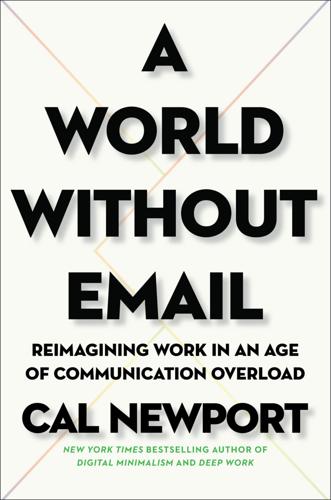
A World Without Email: Reimagining Work in an Age of Communication Overload
by
Cal Newport
Published 2 Mar 2021
As my friend told me that day in Rock Creek Park: “Not everyone does deep work all the time.” The implication of this final quip is that there’s a small group of professions that specifically value uninterrupted hard thinking—writers, programmers, scientists—but for most positions, being in the thick of things is a major part of the job. We can find a classic example of this split in Paul Graham’s often cited 2009 essay, “Maker’s Schedule, Manager’s Schedule.”17 In this piece, Graham notes that for a manager, meetings are a big part of what they do during the day, while for a maker, a single meeting can be “a disaster,” as it breaks up their ability to work continuously on a difficult problem.
…
As we learned from the example of IT ticketing systems, if we can somehow create space between communication and execution, people in these roles would find the tasks before them more easily dispatched. This discussion of minders is important because this professional role is about as far as you can get from Paul Graham’s vision of makers dedicating entire afternoons to solving a single challenging problem, and yet, even for the much more varied and administrative obligations of minders, the hyperactive hive mind still ends up causing problems. To conclude this investigation on the hive mind and effectiveness, however, we’ll veer sharply back toward the focused end of the spectrum and look closer at what’s actually at stake when constant communication invades the world of people who create valuable things with their minds
…
You should notice a difference, as the letter and number counting draw on two different networks. 16. Sophie Leroy, “Why Is It So Hard to Do My Work? The Challenge of Attention Residue When Switching between Work Tasks,” Organizational Behavior and Human Decision Processes 109, no. 2 (July 2009): 168–81. 17. Paul Graham, “Maker’s Schedule, Manager’s Schedule,” July 2009, www.paulgraham.com/makersschedule.html. 18. “Marshall Retires as Chief of Staff,” George C. Marshall Foundation, November 17, 2017, www.marshallfoundation.org/blog/marshall-retires-chief-staff/. 19. For more on George Marshall’s career timeline, see “George C.
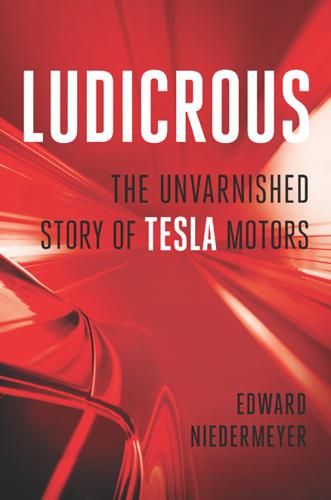
Ludicrous: The Unvarnished Story of Tesla Motors
by
Edward Niedermeyer
Published 14 Sep 2019
Marc Andreessen By 2006, Silicon Valley had fully shaken off its post-dot-com-bubble hangover and was entering a new golden age. The “Web 2.0” wave had already made companies like Skype, Pandora, and Yelp into household names, Facebook and Twitter were just starting their rise to ubiquity, and Apple was putting the final touches on the world’s first smartphone. The venture capitalist Paul Graham captured the mood in a speech he gave that year called “How to Be Silicon Valley.” Between deriding the stifling effects of bureaucracy and celebrating the valley’s “rich people and nerds,” Graham argued, “a place that tolerates oddness in the search for the new is exactly what you want in a startup hub, because economically that’s what startups are.
…
November 11, 2014. https://www.businessinsider.com/tesla-the-origin-story-2014-10 39He would later take credit: Elon Musk. “In the Beginning.” Tesla Motors Blog (since deleted, accessed via web.archive.org). https://web.archive.org/web/20090624221445/http://www.teslamotors.com/blog2/?p=73 Chapter 4 41“How to Be Silicon Valley”: Paul Graham. “How to Be Silicon Valley.” PaulGraham.com, May 2006. http://paulgraham.com/siliconvalley.html 43As Tarpenning explained in Charles Morris’s history of the company: Charles Morris. Tesla Motors: How Elon Musk and Company Made Electric Cars Cool and Sparked the Next Tech Revolution, excerpted in Charged Electric Vehicles Magazine, September 7, 2014. https://chargedevs.com/features/new-book-excerpt-the-early-days-of-tesla/ 44This process started with the development of a digital motor controller: Darren Bryant.
…
Edwards, 56 Department of Energy (DOE) loans from, 68–89, 118, 120, 121 as shareholder of Tesla, 82–86, 90 detractors, 102–108 Detroit, Michigan, 2, 4 Detroit Auto Show, 68 disruptive innovator, Tesla as, 195–197 DOE. see Department of Energy doors falcon-wing, 137–141 gull-wing, 136–137 Downey, California, 76 Drori, Ze’ev, 49–50, 65 Dunlay, Jim, 58 E Eberhard, Martin as advocate of Tesla, 67 founding of Tesla by, 21–24, 27–31, 35, 37–40 ouster of, 44–48, 50, 79 EBITDA, 215 Eisner, Michael, 45 Electrek, 97–101 electric vehicles (EVs), 3, 12–14, 24, 77, 202, 207 Energy Independence and Security Act, 67 Enron, 105 environmental issues, 112–113, 119 Esquire, 61 e-tron quattro, 203 EV1, 13, 24, 34 EVs. see electric vehicles F Facebook, 41 Falcon One, 28 falcon-wing doors, 137–141 FCW (Forward Collision Warning), 125 Ferrari, 60, 200–201 Fiat, 11, 34 financial crisis (2008), 75–76, 105 fixed costs, 54 Flextronics, 47 FOIA (Freedom of Information Act), 72, 131 Ford, Henry, 56, 194 Ford Focus, 159 Ford Fusion, 75 Ford Motor Company, 3, 4, 56, 75, 181, 194, 204, 216 Forward Collision Warning (FCW), 125 Founders Edition Roadster, 215 Freedom of Information Act (FOIA), 72, 131 Fremont, California, 53, 206, 218 funding (fundraising), 29, 40, 44–47, 50, 69–71, 85 G Gage, Tom, 27–29 Galileo Galilei, 105 Gao Yaning, 128 Gartner, 175 gas prices, 11, 14 General Motors (GM). see also specific models bankruptcy and bailout of, 2–3, 88 and electric cars, 11–13, 34 Impact concept car, 24 and Lotus, 36, 37, 53 OnStar system, 194 Germany, 203, 204 Ghosn, Carlos, 197–200 Gigafactory, 77, 183–184, 189, 218 GM. see General Motors G170J1-LE1 screens, 228 Goodwill Agreements, 149 Google, 44, 120–124, 171 Graham, Paul, 41 “A Grain of Salt” (blog post), 152–153 Grant, Charley, 100 “green car” companies, 11 GT Advanced Technologies (GTAT), 95–97 gull-wing doors, 136–137 H Harrigan, Mike, 30 Harris Ranch, 115–116, 119 Harvard Business School, 195 herd mentality, 96 Hethel, England, 49 Hoerbiger, 138–140 Holzhausen, Franz von, 137 Honda, 201 “How to Be Silicon Valley” (speech by Paul Graham), 41 Hyperloop, 16, 88, 217 I IDEO, 38 IGBT (insulated-gate bipolar transistor), 49 Impact concept car, 13, 24 imperfection, 55 incumbent companies, 196–197 innovation, 193–210 by Citroën, 193–195 disruptive, 195–197 by Carlos Ghosn, 197–200 by Tesla, 201–210 “Innovation Killers: How Financial Tools Destroy Your Capacity to Do New Things” (Christensen), 196–197 The Innovator’s Dilemma, 197 insulated-gate bipolar transistor (IGBT), 49 internal conflict, 29–32 InvestorsHub, 99 Israel, 4, 12 J Jaguar I-PACE, 202–203 Jivan, Jon, 98 Jonas, Adam, 172 K kaizen, 58, 60 Krafcik, John, 176 L Lambert, Fred, 98–101 Lamborghini, 204 Land Rover, 60 lead-acid batteries, 23–24, 197 Leech, Keith, 146–147, 156 Level 4 autonomous cars, 175–176 Level 5 autonomous cars, 170, 172, 175–176, 178 Lexus, 204 lithium-ion batteries, 22–24, 26, 34 “long tailpipe,” 110 losses, 11 Lotus, 36–37, 38, 43, 44, 49, 59 Lotus Elise, 28, 36, 37, 38, 40, 43 Lotus Evora, 59 “Ludicrous Mode,” 16 Lyons, Dave, 64 M Mac, Ryan, 218 Magna Powertrain, 48–49 Magna Steyr, 202 manufacturing, 180–192 of batteries, 183–184, 188–189 and continuous reiteration of Model 3s, 182–192 Elon Musk on, 180–182 preproduction as, 187–188 Marchionne, Sergio, 11 market saturation, 10 Marks, Michael, 47, 48, 50 Mars, 25 “Master Plan, Part Deux” (blog post), 164 McLaren F1, 25–26, 39 media hype, 88, 90–91, 93–95, 97–102, 130, 211–224 and base version of Model 3, 220–224 Elon Musk as cause of, 217–224 at Semi/Roadster unveiling, 211–215 as stock price stimulant, 215–216 Menlo Park, California, 28, 58 Michelin, 194 Miles, 11 Mobileye, 167–170 mobility technology, 11 Model 3, 8–10, 180–182 base version of, 220–224 production of, 182–192 Model S, 15, 74–75, 81–84, 90, 99, 135–137. see also Whitestar Model T, 56 Model X, 101, 134–145 Model Year 2008, 69 Moggridge, Bill, 38–39 Montana Skeptic, 105–108 Morgan Stanley, 172 Morris, Charles, 43 Motley Fool, 98 Musk, Elon on belief, 21 and branding of Tesla, 16–17 as cause of media hype, 217–224 childhood and personality of, 25–26 clientele knowledge of, 60 “cluelessness” of, 33–35 and culture of Tesla, 60 and Daimler, 68 detractors of, 102–108 and electric cars, 25–28 and Elise-Roadster conversion, 38–39 on financial viability of Tesla, 72–73 and fundraising, 44, 69–71 and loans, 70, 78 on manufacturing, 180–181, 190 on Model 3, 8–9 on Model S, 74 on Model X, 144–145 on obstacles faced by Tesla, 46 offers of, to sell Tesla, 120–121 on price increases, 71 and production process, 142, 165 as public figure, 15 on Series D, 47 and JB Straubel, 26 and stress, 64–67, 77–78 and Superchargers, 109–119 and Tesla cofounders, 29–32, 45, 47–48 on Tesla’s master plan, 21–22, 30–31, 58, 163 at town hall meeting, 70–71 and Whitestar, 51 Musk, Errol, 25 Musk, Justine, 25–26 Musk, Kimball, 65 N National Aeronautics and Space Administration (NASA), 66 National Highway Traffic Safety Administration (NHTSA), 127, 131–132, 149–162 National Transportation Safety Board (NTSB), 132, 167 NDAs. see non-disclosure agreements Neil, Dan, 59 Neuralink, 16, 217 New Mexico, 48, 67 New United Motor Manufacturing, 53 New York Times, 2, 30, 66 NHTSA. see National Highway Traffic Safety Administration Nissan Leaf, 198 Nissan-Renault Alliance, 197–200, 207 Noble M12, 27 nondisclosure agreements (NDAs), 5, 149–151, 152, 155–156 Norway, 12 NTSB (National Transportation Safety Board), 132, 167 NUMMI plant, 76, 81 Nürburgring, 203 NuvoMedia, 23 O Occupy Wall Street, 80–81 Ohno, Taiichi, 57 OnStar, 194 Opel, 36 Opel Speedster, 36 OpenAI, 217 operating profits and losses, 89 P Packet Design, 23 Page, Larry, 44 Paine, Chris, 13, 64, 71, 73–74 Panasonic, 77 Pandora, 41 PayPal, 16, 28 Peak Oil, 11 Pinnacle Research, 25 platforms, 135–136 Porsche, 24, 26, 39, 203–204 Porsche 911, 39 power electronics module (PEM), 49 Powertrain Technology, 58 Prenzler, Christian, 100 preproduction, 187–188 price increases, 71 Prius, 24 profitability, 81–82, 89 Project Better Place, 4–5, 11–12 public, going, 80–81 Q quality, 55, 59–60 Quality Control Systems, 131 R Ranger, 60 Reddit, 97, 99–100 reliability, 143 Renault Kwid, 207 Renault Zoe, 198 Reuters, 66 Revenge of the Electric Car (film), 64 Roadster as Elise conversion, 37–39 launch of, 14–15, 29, 42, 47–51, 59–61 new model of, 211–215 profitability of, 71–72, 81 securing investments for, 44, 45 and Tesla startup, 2–3 robotaxis, 166–167 Rogan, Joe, 219 Rosen, Harold, 26 Rosen Motors, 26 S Saleen, 99–100 San Carlos, California, 28 San Francisco, California, 59 San Jose, California, 75–76 Santa Monica, California, 45 Saudi Arabia, 218–219 Schwarzenegger, Arnold, 45 Scion xB, 27 Seagate, 23 “The Secret Tesla Motors Master Plan” (blog post), 21 Securities and Exchange Commission (SEC), 67, 160, 219–220, 224, 234 Seeking Alpha, 103, 105–107 self-driving cars, 120–133 Semi, 211–215 Senate Finance Committee, 67 Series A funding, 29 Series C funding, 40, 44–45 Series D funding, 46, 47 Series E funding, 50 S 40 model, 84 Shashua, Amnon, 167–170 Silicon Valley, 4, 14, 15, 17, 45, 53, 54, 58 Siry, Darryl, 65, 73 60 Minutes, 66 S 60 model, 84 “skateboard” chassis, 134, 202 Skype, 41 Smart (Tesla car), 68 software startups, 54–55 SolarCity, 110–111, 164 solar power, 109–114 Sorbonne University, 66 South Africa, 25 SpaceX, 15, 16, 25, 28, 39, 66, 78, 100 Spiegel, Mark, 102–103 Stanford University, 4, 26, 27, 28, 121 startups, 41–43, 59, 62, 76 “stealth recalls,” 160–161 stock price, 89, 90, 93, 97, 100, 102–103 StockTwits, 98 Straubel, JB, 26, 28, 48 SunCube, 146–147 Superchargers, 109–119 SYNC, 194 T TACC (Traffic Aware Cruise Control), 125 Tama, 197 Tarpenning, Marc, 21–24, 27, 31, 37, 43, 113 Tea Party movement, 80–81 “Tesla Death Watch” (blog posts), 3 Tesla Energy Group, 68 Tesla Founders Blog, 50 Tesla Motors. see also specific headings and barriers to entry, 35, 56 branding of, 16–17, 18, 59–63, 225–234 and collisions, 127–133 concept of, 34–36 continuous improvement at, 58 culture of, 51–52, 60 detractors of, 102–108 as disruptive innovator, 195–197 EBITDA of, 215 and environmental issues, 112–113, 119 “factory-less” model of, 35–36 innovation by, 201–210 internal conflict at, 29–32 legacy of, 19 Model 3 introduced by, 8–10 personal approach to public relations, xii raising capital for, 44, 69–71, 85 “shaky ground” of, 4, 5 as startup, 2–3 stock price of, 89, 90, 93, 97, 100, 102–103 strategy of, 22 and Supercharger network, 109–119 and whistleblowers, xii Tesla Motors Club (TMC), 95–97 Teslarati, 100 “Tesla stare,” 60 “Tesla Suspension Breakage: It’s Not the Crime, It’s the Coverup” (blog post), 151 Thailand, 48, 218 Think Global, 11, 67 Thrun, Sebastian, 121 TMC (Tesla Motors Club), 95–97 Too Big to Fail, 91 Toyoda, Akio, 76 Toyoda, Sakichi, 57 Toyota, 184, 201. see also specific models auto sales, 11 contract with, 81, 83 electric vehicles of, 159–160 and 2008 financial crisis, 76–77 pragmatism of, 209 safety scandal, 149–151 Toyota Previa, 214 Toyota Production System (TPS), 56–60, 76–77, 142, 183 Toyota Way, 58, 77 TPS. see Toyota Production System Traction Avant, 193–194 trading volume, 89 Traffic Aware Cruise Control (TACC), 125 The Truth About Cars (TTAC) (blog), 1–3 Tse, Bernard, 67 turnarounds, financial, 83–87 Twitter, 41, 98, 104–108, 113, 152, 156, 217–220, 224, 236 tzero, 23–24, 26, 27, 31, 37 V Valor Equity Partners, 47 Vance, Ashlee, 38, 47, 66, 73, 84, 120–121, 137, 227–228 VantagePoint Capital Partners, 66 variable costs, 54 V8 engine, 62 Volkswagen, 11, 171, 203–205 W Wall Street Journal, 2, 18, 100, 129, 132, 168, 187 Waymo, 173–174 Web 2.0, 41 Weintraub, Seth, 97–98, 101 Wharton School of Business, 25 whistleblowers, xii Whitestar, 46–48, 51, 65, 67, 68, 73 Who Killed the Electric Car?

On the Edge: The Art of Risking Everything
by
Nate Silver
Published 12 Aug 2024
GO TO NOTE REFERENCE IN TEXT most interesting founders: Paul Graham, “Five Founders,” April 2009, paulgraham.com/5founders.html. GO TO NOTE REFERENCE IN TEXT later handpicked Altman: Paul Graham, “Sam Altman for President,” Y Combinator, February 21, 2014, ycombinator.com/blog/sam-altman-for-president. GO TO NOTE REFERENCE IN TEXT he was fired: Elizabeth Dwoskin and Nitasha Tiku, “Altman’s Polarizing Past Hints at OpenAI Board’s Reason for Firing Him,” The Washington Post, November 22, 2023, washingtonpost.com/technology/2023/11/22/sam-altman-fired-y-combinator-paul-graham. GO TO NOTE REFERENCE IN TEXT “Technology happens because”: Cade Metz, “The ChatGPT King Isn’t Worried, but He Knows You Might Be,” The New York Times, March 31, 2023, sec.
…
On one side are the safe and silent places, the home, the well-regulated role in business, industry, and the professions; on the other are all those activities that generate expression, requiring the individual to lay himself on the line and place himself in jeopardy. —Erving Goffman Sam Altman always knew where the action was. “You know how a dog will run around a room sniffing anything interesting? Sam does that with technology, just as constantly and automatically,” said Paul Graham, the polymathic English programmer who cofounded Y Combinator. Y Combinator is the world’s most prestigious startup accelerator, what you’d get if you took the rough average between Andreessen Horowitz, a summer camp for gifted-and-talented math nerds, and Shark Tank. The process is intrinsically a long shot.
…
GO TO NOTE REFERENCE IN TEXT shot up to $1.17 trillion: “Forbes Billionaires 2023: The Richest People in the World,” Forbes, forbes.com/billionaires. GO TO NOTE REFERENCE IN TEXT Chapter ∞: Termination “Looking for where the action is”: Erving Goffman, Interaction Ritual: Essays on Face-to-Face Behavior (New York: Pantheon Books, 1982), 268. GO TO NOTE REFERENCE IN TEXT said Paul Graham: My interview with Graham was conducted by email. GO TO NOTE REFERENCE IN TEXT of YC companies:: Y Combinator, ycombinator.com. GO TO NOTE REFERENCE IN TEXT frenetic minutes to pitch: Antonio García Martínez, Chaos Monkeys: Obscene Fortune and Random Failure in Silicon Valley, Kindle ed.
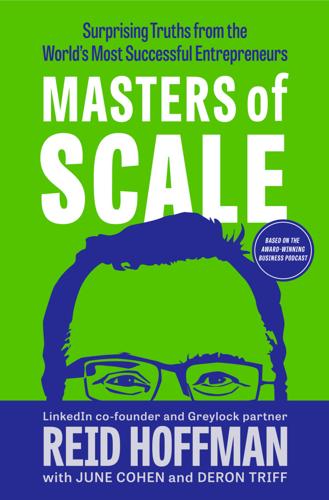
Masters of Scale: Surprising Truths From the World's Most Successful Entrepreneurs
by
Reid Hoffman
,
June Cohen
and
Deron Triff
Published 14 Oct 2021
“The unhelpful no” If you’re the kind of person who might get easily discouraged or talked out of your idea, you need to keep your idea away from people whose opinions you have an emotional investment in. 2 Do Things That Don’t Scale The meeting definitely did not go as he expected. In 2009, Brian Chesky, a young entrepreneur with a big idea, was meeting with Paul Graham, co-founder of Y Combinator, the renowned Silicon Valley startup accelerator. Brian’s company, Airbnb, was partway through the Y Combinator program, and he was ready to wow Paul with his vision of a bright future for an unconventional new business that enabled people to rent out their spare rooms or sofa beds to total strangers.
…
By this line of thinking, the subtle details of a product or customer experience matter less than just finding some way to make a splash and get on the radar. Handcrafting? Most MBA students will tell you, “That doesn’t scale.” But ignoring those details won’t work—not in the long run, says Y Combinator’s president from 2014 to 2019, Sam Altman. An acolyte of Paul Graham’s, Sam adhered to the core Y Combinator dictum: It’s better to have one hundred users who love you than a million users who just kind of like you. It’s counterintuitive. You may be thinking If a million people “kind of like” my product enough to buy it, isn’t that better for business than a hundred obsessive oddballs?
…
Because these companies were trying to do something hard, and potentially game-changing, they didn’t have as much competition as all the copycat startups. One such company was Airbnb. * * * — When Brian Chesky and his partner, Joe Gebbia, got to New York, at the urging of Y Combinator’s Paul Graham, they had a clear mandate: Go to your users. So they contacted their local hosts and offered to send professional photographers to take pictures for the Airbnb listing. Who were the photographers? Brian and Joe. One particular visit stands out in Brian’s memory. “It’s winter. It’s snowing outside and we’re in snow boots,” Brian recalls.

Your Computer Is on Fire
by
Thomas S. Mullaney
,
Benjamin Peters
,
Mar Hicks
and
Kavita Philip
Published 9 Mar 2021
For examples of women who came to programming late but were extremely successful, see Janet Abbate, Recoding Gender (Cambridge, MA: MIT Press, 2012). 13. Eric P. Newcomer, “YC’s Paul Graham: The Complete Interview,” The Information (December 26, 2013), https://www.theinformation.com/YC-s-Paul-Graham-The-Complete-Interview. To represent Graham’s views more accurately, I use his revised wording where available (Paul Graham, “What I Didn’t Say,” personal blog [December 2013], http://paulgraham.com/wids.html). 14. First Round Capital, “State of Startups 2016,” accessed August 15, 2019, http://stateofstartups.firstround.com/2016/#highlights-diversity-problem. 15.
…
Sklar adds that industry support for coding efforts, while valuable, is not a substitute for reform: “Support for next-gen orgs like Girls Who Code and Yes We Code and Code 2040 and Black Girls Code is fantastic but does not address the very real problems with this gen.”11 The pipeline argument implicitly blames women and minorities themselves for not preparing sufficiently. It also reinforces stereotypes about the kinds of people who succeed in tech, equating the masculine pattern of early, obsessive interest in computers with talent and commitment. Influential venture capitalist Paul Graham exemplifies this circular logic in a 2013 interview, saying, “If you go look at the bios of successful founders this is invariably the case, they were all hacking on computers at age 13.” Asserting that “if you want to be really good at programming, you have to love it for itself,” he assumes that this love for coding will manifest itself at a young age, leading him to dismiss the people who do not learn to program until college—disproportionately women and minorities.

The Start-Up of You: Adapt to the Future, Invest in Yourself, and Transform Your Career
by
Reid Hoffman
and
Ben Casnocha
Published 14 Feb 2012
The first is seeing the world from the other person’s perspective. No one knows this better than the skilled entrepreneur. Entrepreneurs succeed when they make stuff people will pay money for, which means understanding what’s going on in the heads of customers. Discovering what people want, in the words of start-up investor Paul Graham, “deals with the most difficult problem in human experience: how to see things from other people’s point of view, instead of thinking only of yourself.”5 Likewise, in relationships, it’s only when you truly put yourself in the other person’s shoes that you begin to develop an honest connection.
…
Pamela Walker Laird, Pull: Networking and Success Since Benjamin Franklin (Cambridge, MA: Harvard University Press, 2007), 11. 4. Jeff Atwood, “The Bad Apple: Group Poison,” Coding Horror: Programming and Human Factors (blog), February 19, 2009, http://www.codinghorror.com/blog/2009/02/the-bad-apple-group-poison.html 5. Paul Graham, “Why Smart People Have Bad Ideas,” PaulGraham.com (blog), April 2005, http://www.paulgraham.com/bronze.html 6. David Foster Wallace, This Is Water: Some Thoughts, Delivered on a Significant Occasion, About Living a Compassionate Life (New York: Little, Brown, 2009), 39–40. 7. Neil Rackham and John Carlisle, “The Effective Negotiator, Part I: The Behaviour of Successful Negotiators,” Journal of European Industrial Training 2, no. 6 (1978): 6–11, doi:10.1108/eb002297 8.
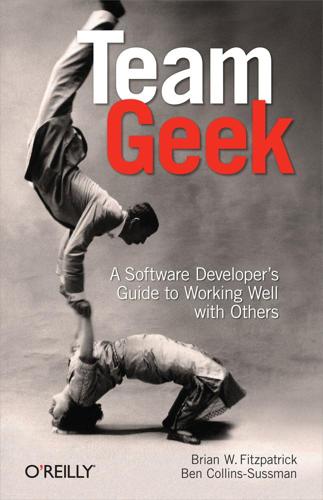
Team Geek
by
Brian W. Fitzpatrick
and
Ben Collins-Sussman
Published 6 Jul 2012
The odds are good that you’ll stand on the street corner arguing for most of the day unless you simply declare one person to be the final arbiter and then follow him wherever he goes. Useless meetings can seem like torture. Meetings are frequently an interruption to what many refer to as “make time,” inspired by Paul Graham’s “Maker’s Schedule, Manager’s Schedule.”[18] It can be hard for engineers to get into the zone if they’re constantly stopping work to attend meetings. Schedule time on your calendar in three- to four-hour blocks and label these blocks as “busy” or even “make time,” and get your work done. If you have to set up a meeting, try to set it up near another natural break in the day, like lunchtime, or the very end of the day.
…
Brooks (Addison-Wesley Professional) Startup Engineering Management by Piaw Na (self-published) Apprenticeship Patterns: Guidance for the Aspiring Software Craftsman (http://shop.oreilly.com/product/9780596518387.do) by Dave Hoover and Adewale Oshineye (O’Reilly) Quiet: The Power of Introverts in a World That Can’t Stop Talking by Susan Cain (Crown) Fearless Change: Patterns for Introducing New Ideas by Mary Lynn Manns (Addison-Wesley) The Art & Adventure of Beekeeping by Ormond Aebi (Rodale Press) “Maker’s Schedule, Manager’s Schedule” by Paul Graham (http://www.paulgraham.com/makersschedule.html) The Art of Readable Code (http://shop.oreilly.com/product/9780596802301.do) by Dustin Boswell and Trevor Foucher (O’Reilly) Mastery: The Keys to Success and Long-Term Fulfillment by George Leonard (Plume) “The Significance of Task Significance: Job Performance Effects, Relational Mechanisms, and Boundary Conditions” (2008) by Adam M.

Boom: Bubbles and the End of Stagnation
by
Byrne Hobart
and
Tobias Huber
Published 29 Oct 2024
While it can be used to identify a bubble in retrospect—just look at assets that experienced a significant rise prior to a steep fall—it provides no insight into the formation of a bubble in medias res. The second explanation is more powerful because it identifies a mechanism for the formation of a bubble, which can offer some guidance as to when a bubble might burst. For example, consider how Paul Graham explained Yahoo’s valuation in 1999: By 1998, Yahoo was the beneficiary of a de facto Ponzi scheme. Investors were excited about the internet. One reason they were excited was Yahoo’s revenue growth. So they invested in new internet startups. The startups then used the money to buy ads on Yahoo to get traffic.
…
The business can be turned into a better version of itself but not into something completely new. This is part of the function private equity serves: finding companies that are cheap because they could be run better, then running them better before selling them off. But it’s hard to drive long-term economic growth purely through that process. 146 Paul Graham, “What Happened to Yahoo,” August 2010, https://paulgraham.com/yahoo.html. 147 Gregory Zuckerman, The Greatest Trade Ever: The Behind-the-Scenes Story of How John Paulson Defied Wall Street and Made Financial History (New York: Crown Business, 2010), 100. 148 This was not without its risks.
…
Gates and Allen had, as part of a previous venture, built an 8008 emulator on similar principles. Once they updated their emulator, they were able to begin building a new BASIC. The pair had two precious resources at their disposal: free time and computer time. As the essayist and programmer Paul Graham has pointed out, Facebook and Microsoft were both founded not just by Harvard undergraduates but by Harvard undergraduates in January, during the school’s “reading period,” a time when students are, in theory, free to study for exams and, in practice, free to procrastinate. Harvard’s computing resources at the time included a powerful PDP-10, which Gates and Allen repurposed for their work. 230 Gates and Allen would, of course, go on to build one of the world’s dominant software companies.
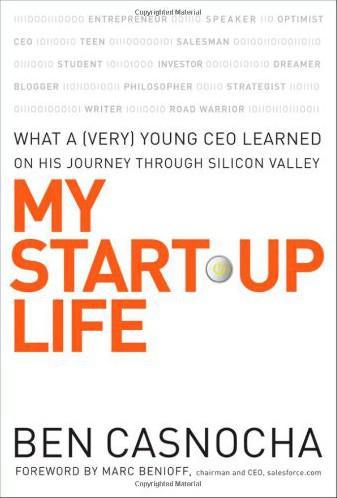
My Start-Up Life: What A
by
Ben Casnocha
and
Marc Benioff
Published 7 May 2007
But with the increasing speed and accessibility of computers, even basic math skills seem unnecessary in many kinds of jobs. So whereas technology will continue to process increasingly complex equations, I don’t see technology being able to express increasingly complex ideas, or paint a literary picture, as good, human writing does. As entrepreneur and engineer Paul Graham has said, “Writing doesn’t just communicate ideas; it generates them. If you’re bad at writing and don’t like to do it, you’ll miss out on most of the ideas writing would have generated.” On-Demand Education Due to globalization and accelerating change, knowledge—even of the most esoteric sort—is easily accessible.
…
Andy Sack’s blog post on “three questions each management team should ask themselves” is at http://asack.typepad.com/a_sack_of_seattle/ 2006/10/the_meeting_tha.html. 188 ENDNOTES “Getting More Good Revenue and Less Bad Revenue” is based on an idea discussed on Will Price’s blog: http://www.willprice.blogspot.com/ 2006/09/how-pure-is-your-model.html. Chapter 16.0: Fulfilling the Mission, One Customer at a Time The sidebar “Make Meaning” contains ideas from Guy Kawasaki’s top ten start-up rules; see http://www.alwayson-network.com/printpage. php?id=11962_0_11_0_C. Chapter 17.0: The Road Ahead I cite Paul Graham’s essay “Writing Briefly,” available at http://www. paulgraham.com/writing44.html. Chapter 18.0: What Will You Be Shouting When You Reach the Grave? “Entrepreneurs Are Optimists” contains ideas from Learned Optimism, by Martin Seligman (New York: Vintage Books, 2006). The Author Ben Casnocha (pronounced kas-NO-ka) is a Silicon Valley–based entrepreneur and writer.
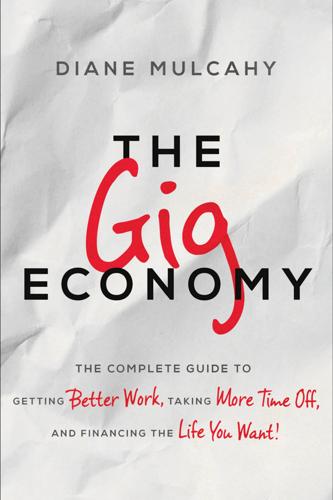
The Gig Economy: The Complete Guide to Getting Better Work, Taking More Time Off, and Financing the Life You Want
by
Diane Mulcahy
Published 8 Nov 2016
We can’t deepen our connections with others and devote significant attention to our important relationships if we’re also checking email or watching the clock because we’re scheduled for something else in 10 minutes. To be our most effective and efficient selves and to create the time to invest in our priorities, we need reasonably sized blocks of time. One way to create that time is to apply the framework of Maker vs. Manager schedules to our calendars. Paul Graham of Y Combinator introduced the concept in his 2009 blog post “Maker’s Schedule, Manager’s Schedule.”7 I’ll summarize the concepts he introduces, but it’s worth reading it in its entirety. The Manager’s Schedule The Manager’s Schedule is the one most familiar to us, as it’s common for traditional employees and management (as the name implies) in corporations.
…
Kreider, Tim, “The ‘Busy’ Trap,” The New York Times, June 30 2012. opinionator.blogs.nytimes.com/2012/06/30/the-busy-trap/?_r=0 6. Sibonney, Clair, “Arianna Huffington on the Third Metric: You Can Complete a Project by Dropping It,” The Huffington Post, September 11, 2013. www.huffingtonpost.ca/2013/09/11/arianna-huffington-third-metric_n_3901302.html 7. Graham, Paul, “Maker’s Schedule, Manager’s Schedule,” Paul Graham, July 2009. www.paulgraham.com/makersschedule.html 8. Morill, Danielle, “Warming Up to the Manager’s Schedule,” March 23, 2015. medium.com/@DanielleMorrill/warming-up-to-the-manager-s-schedule-e3ec18c7408e#.gxwnuexbp Danielle’s calendar is reproduced here with permission 9. Seligman, Martin E.P., “Building Resilience,” Harvard Business Review, April 2011. hbr.org/2011/04/building-resilience 10.
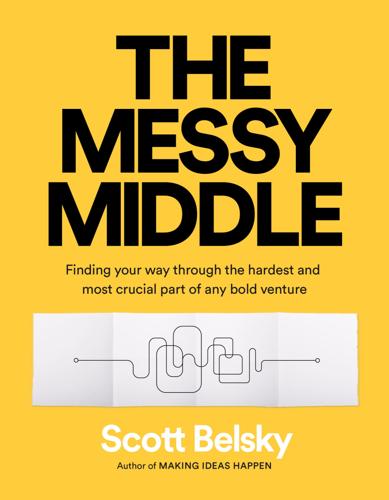
The Messy Middle: Finding Your Way Through the Hardest and Most Crucial Part of Any Bold Venture
by
Scott Belsky
Published 1 Oct 2018
“Chipping away at”: Jocelyn Glei, Unsubscribe: How to Kill Email Anxiety, Avoid Distractions, and Get Real Work Done (New York: Public Affairs, 2016), 11. “The problem is that while winnowing”: Ibid. 13. CREATIVE BLOCK IS THE CONSEQUENCE OF AVOIDING THE TRUTH. “It’s easier to tell Zuck”: Paul Graham (@paulg), “It’s easier to tell Zuck that he’s wrong than to tell the average noob founder. He’s not threatened by it. If he’s wrong, he wants to know,” Twitter, May 8, 2017, 1:31 A.M., https://twitter.com/paulg/status/861498777160622080. “What distinguishes great”: Paul Graham (@paulg), “What distinguishes great founders is not their adherence to some vision, but their humility in the face of the truth,” Twitter, May 8, 2017, https://twitter.com/paulg/status/861498048949735424.
…
To conquer creative block, you must ask bold questions and shine the spotlight on the elephants in the room. Perhaps the product is shitty. Perhaps your business model and all the assumptions leading up to it were fundamentally flawed. The truth will hurt, and it may set you back temporarily, but it will ultimately set you free. Entrepreneur and investor Paul Graham, founder of the start-up incubator Y Combinator, once remarked in an interview about Facebook founder Mark Zuckerberg: “It’s easier to tell Zuck that he’s wrong than to tell the average noob [new] founder. He’s not threatened by it. If he’s wrong, he wants to know.” Paul goes on to say, “What distinguishes great founders is not their adherence to some vision, but their humility in the face of the truth.”
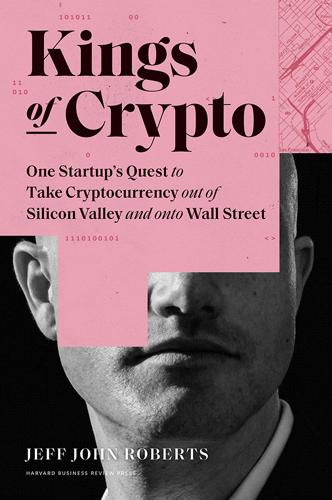
Kings of Crypto: One Startup's Quest to Take Cryptocurrency Out of Silicon Valley and Onto Wall Street
by
Jeff John Roberts
Published 15 Dec 2020
For venture capitalists, the phrase is a near-holy invocation. Up and to the right. It means a startup is adding both users and revenue month after month, making a beautiful diagonal line on their PowerPoint slides. Since late 2012, Coinbase had been up and to the right. On three occasions, Brian and Fred had taken their beautiful line to Paul Graham, the cofounder of Y Combinator and their rabbi of fundraising. The first two times, Graham had told Fred, “You are not ready, my son.” On the third occasion, he stared at Coinbase’s performance—still growing up and to the right—and gave his blessing for a Series A funding round, introducing Brian and Fred to his well-heeled network of money men.
…
See Selkis, Ryan Uber, 5, 173 Ulbricht, Ross, 31, 59, 122 uncapped notes, 35 Union Square Ventures, 33–34, 36 “up and to the right,” 35–36 US Treasury, 45 Utzke, David, 121–125 Ver, Roger, 27, 56 Vigna, Paul, 23 Visa, 206 Voorhees, Erik, 27, 127 Wallace, Benjamin, 26 Wall Street, 65, 99–108, 212–213, 225 Bit Licenses and, 127 decentralized currencies and, 11–12 future of, 215–216 Wall Street Journal, 37, 170, 172 Washington Free Beacon, 72 Washington Post, 107 Western Union, 45 White, Adam, 46–47, 55, 64, 107, 154, 157 at Bakkt, 223 on the flash crash, 140 GDAX and, 101–103 on Gemini, 116 Srinivasan and, 193–194 Wilson, Fred, 33–34, 36, 37, 66 Coinbase culture and, 49–51 compliance and, 70–72 first meeting with Brian, 13–14 in funding rounds, 33–37 on “running through brick walls,” 40 Silicon Valley Bank and, 70 workplace morale and, 67–68 Winklevoss, Cameron and Tyler, 48, 54–55, 97, 105, 114–117, 205. See also Gemini Wired magazine, 9, 26, 90 Wozniak, Steve, 7 Wu, Jihan, 82 Wuille, Pieter, 75–76 Xapo, 43, 55, 183, 209–210 Xie, Linda, 158–159 XRP, 106, 196 Yahoo Finance, 107 Y Combinator, 3, 5–6, 9–10 Demo Day at, 6–7 Paul Graham in, 36 startup cofounders and, 7–8 Yellen, Janet, 53, 138 YouTube, 91, 224 Zero to One (Thiel), 5 Zhao, Changpeng, 178–181, 182–183, 209 Zuckerberg, Mark, 48, 109, 114–115, 206 Acknowledgments Bitcoin is a digital currency, but also a technology—one that can be intimidating and difficult to understand at first.

Dreaming in Code: Two Dozen Programmers, Three Years, 4,732 Bugs, and One Quest for Transcendent Software
by
Scott Rosenberg
Published 2 Jan 2006
Web-based programs just felt clunky, and clunky was the last word Kapor would ever want anyone to associate with his work. With so many options available, a software project’s choice of programming language often comes down to the arbitrary or the ineffable—a matter of taste or habit or gut sense. Programmer-essayist Paul Graham wrote that some coders favor Python simply because they like the way it looks—and that that’s not such an unreasonable criterion: “When you program, you spend more time reading code than writing it. You push blobs of source code around the way a sculptor does blobs of clay. So a language that makes source code ugly is maddening to an exacting programmer, as clay full of lumps would be to a sculptor.”
…
one observer’s characterization: The observer is Danny O’Brien in his NTK newsletter from August 6, 2004, at http://www.ntk.net/2004/08/06/. “I spent a few weeks trying”: Benjamin Pierce in a June 2001 message on a private mailing list; full quote confirmed in email to author. “Guido’s time machine”: Eric Raymond’s Jargon File defines it at http://www.catb.org/jargon/html/G/Guido.htm. “When you program, you spend”: Paul Graham, “The Python Paradox,” August 2004, at http://www.paulgraham.com/pypar.htm. Vaporware Hall of Fame: Jon Zilber in MacUser, January 1, 1990. Dan Gillmor’s piece: “Software Idea May Be Just Crazy Enough to Work,” San Jose Mercury News, October 20, 2002. The original Slashdot posting and discussion is at http://slashdot.org/articles/02/10/20/1827210.shtml?
…
I’m grateful, too, to the legions of programmers and technologists who have chosen, over the past decade, to write publicly and candidly about their work online. Their work has made mine possible. Some of those whose writing and blogging I found especially helpful or relevant are Dan Bricklin, Grady Booch, Adam Bosworth, Tim Bray, Geoff Cohen, Paul Ford, Martin Fowler, Paul Graham, David Heinemeyer Hansson, Robert Lefkowitz, Eric Sink, Joel Spolsky, Jon Udell, Dave Winer, and Jeremy Zawodny. Thanks to their work and that of many others, I’m convinced that future decades will look back on our time as a sort of golden age of Renaissance programmer-writers. I also owe a debt of thanks to all my colleagues at Salon.com—in particular, to David Talbot, who gave me the opportunity to pursue this project, and to Joan Walsh, who welcomed me back once it was finished.

The Joy of Clojure
by
Michael Fogus
and
Chris Houser
Published 28 Nov 2010
All we needed to get back on that road was a modern approach, and Rich Hickey has given it to us in Clojure. The Joy of Clojure just might help make Clojure as fun for you as it is for us. STEVE YEGGE GOOGLE steve-yegge.blogspot.com Preface To fully appreciate Clojure, we hearken back to Paul Graham’s essay “Beating the Averages,” an interesting look at the inner workings of his company Viaweb during the years prior to being bought by Yahoo! Inc. in 1998. Though interesting as survey of startup culture, the truly memorable part of the essay was the description of how Viaweb used the programming language Lisp as an advantage over its competition.
…
Why would you explicitly group your expressions when their groupings are only a call to partition away? Clojure Aphorism If a project elicits a sense of being lost, then start from the bottom up. DSLs are an important part of a Clojure programmer’s toolset and stem from a long Lisp tradition. When Paul Graham talks about “bottom-up programming” in his perennial work On Lisp, this is what he’s referring to. In Clojure, it’s common practice to start by defining and implementing a low-level language specifically for the levels above. Creating complex software systems is hard, but using this approach, you can build the complicated parts out of smaller, simpler pieces.
…
Fogus, Michael. Lithp. http://github.com/fogus/lithp. Fowler, Martin. 2005. “Fluent Interface.” http://mng.bz/e2r5. _____. 2007. “Mocks Aren’t Stubs.” http://mng.bz/mq95. Graham, Paul. Arc. www.paulgraham.com/arc.html. _____. 2001. “What Made Lisp Different.” www.paulgraham.com/diff.html. As Paul Graham states, “The whole language always available” appears as a theme throughout this book and as a finale in section 13.5. Houser, Chris. error-kit API. http://mng.bz/07FF. The clojure.contrib.error-kit namespace contains an open error system similar to CL conditions that don’t require recompilation when defining new error types.
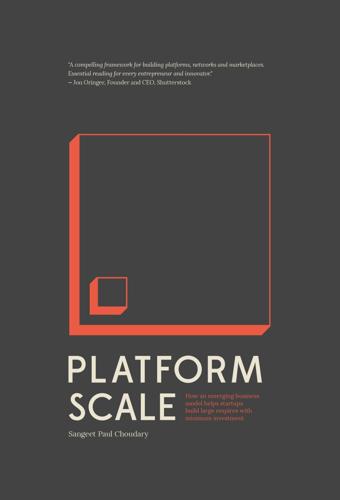
Platform Scale: How an Emerging Business Model Helps Startups Build Large Empires With Minimum Investment
by
Sangeet Paul Choudary
Published 14 Sep 2015
It is also the one lever of platform scale available to all businesses, irrespective of whether they are pipes or platforms. 5.1 TRANSITIONING TO PLATFORM SCALE From Bumps To Engines “A startup is a company designed to grow fast… The only essential thing is growth. Everything else we associate with startups follows from growth.” – Paul Graham Paul Graham differentiates between startups and new businesses in one particular parameter, the potential for scale. A startup’s potential to achieve hyper-growth and rapid scale is largely dependent on the types of growth strategies it implements. Before we embark on the journey of understanding the elements that contribute to virality, it is important to contrast viral growth with the way we have traditionally seen growth in a data-poor, non-participative world of pipes.
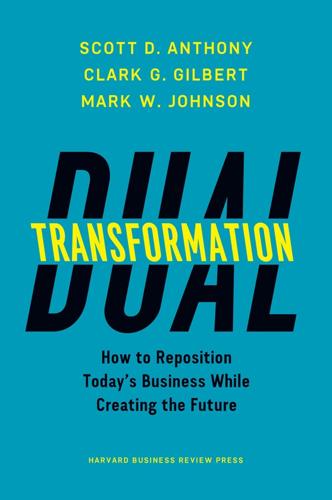
Dual Transformation: How to Reposition Today's Business While Creating the Future
by
Scott D. Anthony
and
Mark W. Johnson
Published 27 Mar 2017
In the 1990s, Innosight cofounder Clayton Christensen published The Innovator’s Dilemma, whose cover proclaims that the book will show readers how “new technologies cause great companies to fail.” The titles grow more ominous over time. In 2013, Dave Ulmer drew on his experience at several large companies to detail The Innovator’s Extinction. His cover blurb? “How natural selection and best intentions will drive your company into the grave.” Another voice is that of Paul Graham, the founder of Y Combinator, a leading incubator that helped spur Dropbox, Airbnb, and hundreds of other companies. Graham perhaps summed up the zeitgeist best when he said, “Running a startup is like being punched in the face repeatedly, but working for a large company is like being waterboarded.”
…
MacMillan, Discovery-Driven Growth: A Breakthrough Process to Reduce Risk and Seize Opportunity (Boston: Harvard Business Press, 2009); Eric Ries, The Lean Startup: How Today’s Entrepreneurs Use Continuous Innovation to Create Radically Successful Businesses (New York: Crown Business, 2011). Chapter 4 Paul Graham quote: Startupquote.com, http://startupquote.com/post/10855215114. Medtronic and Plunify case examples: Scott D. Anthony, “The New Corporate Garage,” Harvard Business Review, September 2012. Gilbert’s salesforce decision: Scott D. Antony, “What the Media Industry Can Teach Us About Digital Business Models,” Harvard Business Review Online, June 23, 2015.
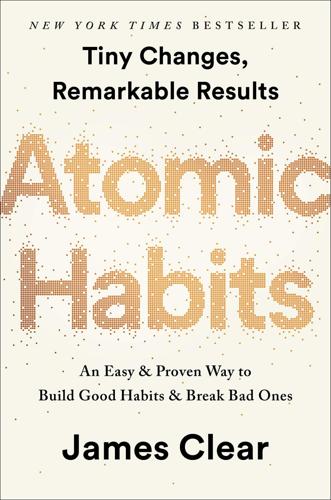
Atomic Habits: An Easy & Proven Way to Build Good Habits & Break Bad Ones
by
James Clear
Published 15 Oct 2018
The surgeon who dismisses the ideas of her younger colleagues. The band who produces a mind-blowing first album and then gets stuck in a rut. The tighter we cling to an identity, the harder it becomes to grow beyond it. One solution is to avoid making any single aspect of your identity an overwhelming portion of who you are. In the words of investor Paul Graham, “keep your identity small.” The more you let a single belief define you, the less capable you are of adapting when life challenges you. If you tie everything up in being the point guard or the partner at the firm or whatever else, then the loss of that facet of your life will wreck you. If you’re a vegan and then develop a health condition that forces you to change your diet, you’ll have an identity crisis on your hands.
…
When comedian Chris Rock is preparing fresh material: Peter Sims, “Innovate Like Chris Rock,” Harvard Business Review, January 26, 2009, https://hbr.org/2009/01/innovate-like-chris-rock. Annual Review: I’d like to thank Chris Guillebeau, who inspired me to start my own annual review process by publicly sharing his annual review each year at https://chrisguillebeau.com. “keep your identity small”: Paul Graham, “Keep Your Identity Small,” February 2009, http://www.paulgraham.com/identity.html. CONCLUSION No one can be rich unless one coin can make him or her so: Desiderius Erasmus and Van Loon Hendrik Willem, The Praise of Folly (New York: Black, 1942), 31. Hat tip to Gretchen Rubin. I first read about this parable in her book, Better Than Before, and then tracked down the origin story.
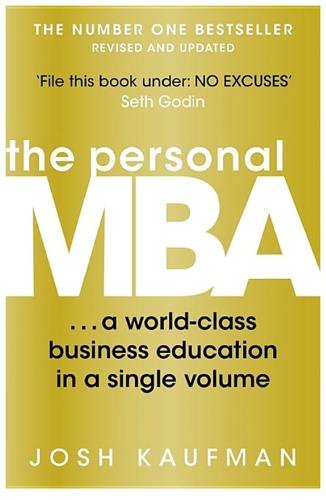
The Personal MBA: A World-Class Business Education in a Single Volume
by
Josh Kaufman
Published 2 Feb 2011
Join me at personalmba.com to explore these ideas in more detail and learn how to apply them to your daily life and work. Let’s begin. 2 VALUE CREATION Make something people want . . . There’s nothing more valuable than an unmet need that is just becoming fixable. If you find something broken that you can fix for a lot of people, you’ve found a gold mine. —PAUL GRAHAM, FOUNDER OF Y COMBINATOR, VENTURE CAPITALIST, AND ESSAYIST AT PAULGRAHAM.COM Every successful business creates something of value. The world is full of opportunities to make other people’s lives better in some way, and your job as a businessperson is to identify things that people don’t have enough of, then find a way to provide them.
…
If you have enough profit to do the things you need to do to keep the business running and make it worth your time, you’re successful, no matter how much revenue your business brings in. Sufficiency is the point where a business is bringing in enough profit that the people who are running the business find it worthwhile to keep going for the foreseeable future. Paul Graham, venture capitalist and founder of Y Combinator (an early-stage venture capital firm), calls the point of sufficiency “ramen profitable”—being profitable enough to pay your rent, keep the utilities running, and buy inexpensive food like ramen noodles. You may not be raking in millions of dollars, but you have enough revenue to keep building your venture without going under.
…
As a result, I can focus on both responsibilities with my full Attention. I use a similar strategy when doing chores, updating financial reports, or running errands: I’ll dedicate a few hours solely to finishing those tasks. As a result, I accomplish everything I need to do in very little time. Paul Graham, a venture capitalist, programmer, and essayist, calls this batching strategy “Maker’s Schedule/Manager’s Schedule.”4 If you’re trying to create something, the worst thing you can possibly do is to try to fit creative tasks in between administrative tasks—context switching will kill your productivity.
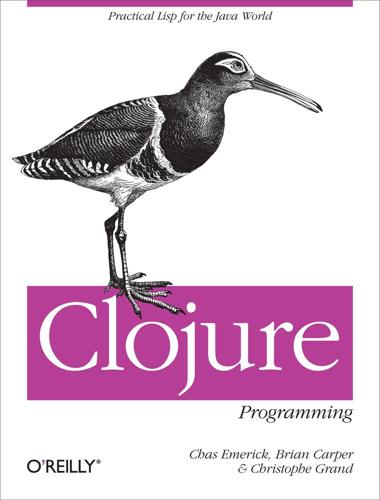
Clojure Programming
by
Chas Emerick
,
Brian Carper
and
Christophe Grand
Published 15 Aug 2011
On the other hand, patterns can be a source of verbosity and boilerplate. To this point, Paul Graham observed that the existence and use of design patterns in a language are indicative of a weakness in the language itself, rather than a consequence of solving the problem at hand: When I see patterns in my programs, I consider it a sign of trouble. The shape of a program should reflect only the problem it needs to solve. Any other regularity in the code is a sign, to me at least, that I’m using abstractions that aren’t powerful enough… —Paul Graham, http://www.paulgraham.com/icad.html Graham was hardly the first to make this observation; Peter Norvig demonstrated some time ago (http://www.norvig.com/design-patterns/) that Lisps in particular either simplify or make invisible most design patterns.
…
* * * [18] Special forms are always given precedence when resolving symbols in function position. For example, you can have a var or local named def, but you will not be able to refer to the value of that var or local in function position—though you can refer to that value anywhere else. [19] Paul Graham’s The Roots of Lisp (http://www.paulgraham.com/rootsoflisp.html) is a brief yet approachable precis of the fundamental operations of computation, as originally discovered and enumerated by John McCarthy. Though that characterization of computation was made more than 50 years ago, you can see it thriving in Clojure today
…
However, just as Java was not a Lisp just because the JVM’s designers borrowed a raft of techniques and features from Lisp systems, languages that borrow capabilities and features from Clojure today are not equivalent to Clojure. If you start using Clojure now, you may give yourself the opportunity to have an unfair advantage for years to come. * * * [436] We would be remiss at this point if we did not reference Paul Graham’s Beating the Averages essay, which is very relevant to this point: http://www.paulgraham.com/avg.html. Emphasize Community Clojure is open source and welcomes contributors. Clojure is open source under a liberal-use license,[437] making it perfect for inclusion in commercial products and for use within commercial organizations (of course in addition to any noncommercial, charitable, or personal use).
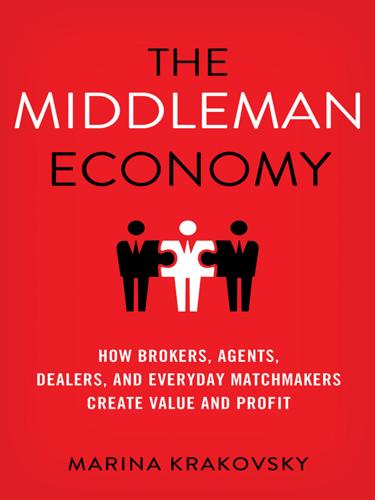
The Middleman Economy: How Brokers, Agents, Dealers, and Everyday Matchmakers Create Value and Profit
by
Marina Krakovsky
Published 14 Sep 2015
He is not implying that large funds typically put all their eggs in one basket—all VCs hold a portfolio of companies—only that large investments tend to make you more cautious, which means that your portfolio will be less likely to yield exceptional returns. “Larger firms with more partners that invest more money per deal are always going to be more risk-averse,” Maples says. Paul Graham, founder of Y Combinator and likewise a believer in investing at the seed stage, put it more bluntly in his essay “A Theory of VC Suckage.” Each deal is for several million dollars, Graham argues, because management fees give firms an incentive to build up large funds. That, Graham writes, “explains why VCs take so agonizingly long to make up their minds, and why their due diligence feels like a body cavity search.
…
See Irina Patterson and Candice Arnold, “Seed Capital from Angel Investors: Mike Maples, Founder and Managing Partner, Floodgate (Part 3),” One Million by One Million Blog, July 14, 2010, retrieved from http://www.sramanamitra.com/2010/07/14/seed-capital-from-angel-investors-mike-maples-founder-and-managing-partner-floodgate-part-3/. 26.Interview with Mike Maples Jr., September 17, 2014. 27.Paul Graham, “A Unified Theory of VC Suckage,” PaulGraham.com, March 2005, retrieved from http://www.paulgraham.com/venturecapital.html. 28.Russ Roberts, “Marc Andreessen on Venture Capital and the Digital Future,” EconTalk, May 19, 2014, retrieved from http://www.econtalk.org/archives/2014/05/marc_andreessen.html. 29.Ben Horowitz mentions Rachleff’s influence in an interview with Stanford engineering professor Tom Byers, “Disrupting the Venture Capital Industry,” Stanford Technology Ventures Program, Entrepreneurial Thought Leaders Series, November 19, 2014, retrieved from http://ecorner.stanford.edu/authorMate rialInfo.html?
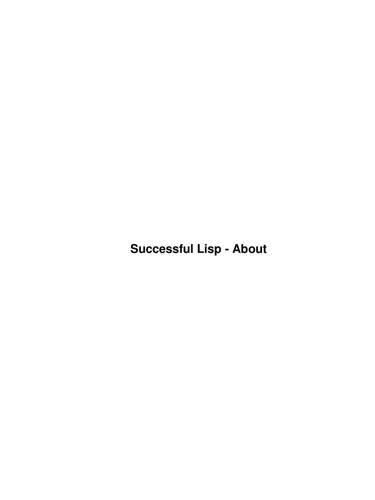
Successful Lisp - About
by
Unknown
Engraver has the slickest software update mechanism you'll find anywhere: select the Check For Patches menu item and Engraver will connect to the Noteheads server, download any patches it needs, and upgrade itself all in a few tens of seconds, without interrupting work in progress. Yahoo Store Yahoo Store is one of the best high-profile Lisp success stories of the past few years. Paul Graham and his team, working out of an attic loft, built and operated a server-side e-commerce site builder for hundreds of customers using Common Lisp and generic Linux servers. Paul's venture was so successful that it drew the attention of Yahoo, who saw it as a better tool for their online stores. Paul sold his company to Yahoo for $49 million.
…
We don't even have to do a hash lookup at runtime, because the macro expander has captured the free variable TABLE from the MULTIPLE-VALUE-BIND form in LOOKUP-SIN. Beyond the obvious, part 2: macros that define macros Macros that define macros are used infrequently, partly because it's hard to think of a good use for this technique and partly because it's difficult to get right. The following macro, based upon an example in Paul Graham's "On Lisp" book, can be used to define synonyms for the names of Lisp functions, macros, and special forms. ? (defmacro defsynonym (old-name new-name) "Define OLD-NAME to be equivalent to NEW-NAME when used in the first position of a Lisp form." `(defmacro ,new-name (&rest args) `(,',old-name ,@args))) DEFSYNONYM ?
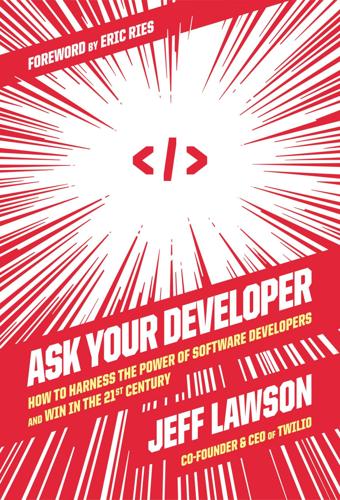
Ask Your Developer: How to Harness the Power of Software Developers and Win in the 21st Century
by
Jeff Lawson
Published 12 Jan 2021
Would Patio11, the consummate independent developer, have joined a big company if they asked him to grind out code? Not likely. But Collison shared a big, giant, hairy problem and asked him to solve it, while providing him with the resources of a well-funded Silicon Valley startup and the support of its founders. For a developer like Patio11, that’s an exciting challenge. Call for Startups Paul Graham cofounded Y Combinator, one of the most successful Silicon Valley incubators and early-stage investors. Since its founding in 2005, Y Combinator has funded more than two thousand startups, including Airbnb, Stripe, DoorDash, and Dropbox. The combined value of the startups funded by YC exceeded $150 billion as of October 2019.
…
The problem is that many developers absolutely hate meetings—not because engineers are antisocial, but because meetings occupy valuable time that could be better spent writing code. And like any meeting, daily stand-ups can be well run and efficient, or a boundless and unfocused waste of time. We as executives are pretty accustomed to days full of meetings, and we often expect that everybody in the company has the same schedule. This is what Paul Graham, cofounder of Y Combinator, calls a “manager schedule,” which works really well for people whose primary job is interfacing with other people. Cutting a day into sixty-minute blocks is how you can coordinate a lot of people. Just add it to my calendar. But making something out of nothing usually isn’t accomplished in one-hour blocks—it requires focus and what Graham calls a “maker schedule.”

ANSI Common LISP
by
Paul Graham
Published 12 Nov 1995
ANSI Common Lisp UW§ PRENTICE HALL SERIES IN ARTIFICIAL INTELLIGENCE Stuart Russell and Peter Norvig, Editors GRAHAM MUGGLETON RUSSELL & NORVIG ANSI Common Lisp Logical Foundations of Machine Learning Artificial Intelligence: A Modern Approach ANSI Common Lisp Paul Graham An Alan R. Apt Book Prentice Hall, Upper Saddle River, New Jersey 07458 Library of Congress Cataloging-in-Publication Data Graham, Paul. ANSI common lisp. / Paul Graham. p. cm. "An Alan R. Apt book." Includes bibliographical references and index. ISBN 0-13-370875-6 1. COMMON LISP (Computer program language) I. Tide. QA76.73.C28G69 1996 005.13'3-dc20 95-45017 CIP Publisher: Alan Apt Production Editor: Mona Pompili Cover Designer: Gino Lee Copy Editor: Shirley Michaels Production Coordinator: Donna Sullivan Editorial Assistant: Shirley McGuire Cover Photo: Ed Lynch •m © 1996 by Prentice Hall, Inc.
…
Almost always the real aim is to make something beautiful. Many programmers feel, like Donald Knuth, that this is also the real aim of programming. Almost all Lisp hackers do. The spirit of Lisp hacking can be expressed in two sentences. Programming should be fun. Programs should be beautiful. That's the spirit I have tried to convey in this book. Paul Graham Contents 1. Introduction 1.1. 1.2. 1.3. 1 New Tools 1 New Techniques 3 A New Approach 4 2. Welcome to Lisp 2.1. 2.2. 2.3. 2.4. 2.5. 2.6. 2.7. 2.8. 2.9. 2.10. 2.11. 2.12. 2.13. 2.14. 2.15. 2.16. 7 Form 7 Evaluation 9 Data 10 List Operations 12 Truth 13 Functions 14 Recursion 16 Reading Lisp 17 Input and Output 18 Variables 19 Assignment 21 Functional Programming 22 Iteration 23 Functions as Objects 25 Types 27 Looking Forward 27 3.

Coders: The Making of a New Tribe and the Remaking of the World
by
Clive Thompson
Published 26 Mar 2019
break his concentration: Lauren Passell, “Stephen King’s Top 20 Rules for Writers,” B&N Reads (blog), March 22, 2013, accessed August 18, 2018, https://www.barnesandnoble.com/blog/stephen-kings-top-20-rules-for-writers. “his floating hair”: Samuel Taylor Coleridge, Kubla Khan, Poetry Foundation, accessed August 18, 2018, https://www.poetryfoundation.org/poems/43991/kubla-khan. “to kill them off”: Paul Graham, “Maker’s Schedule, Manager’s Schedule,” Paul Graham (blog), July 2009, accessed August 18, 2018, http://www.paulgraham.com/makersschedule.html. self-medicates with morphine: Matt Giles, “ ‘Mr. Robot’ Creator Explains What’s Really Going on in Elliot’s Mind,” Popular Science, September 3, 2015, accessed August 18, 2018, https://www.popsci.com/mr-robot-creator-explains-whats-really-going-on-in-elliots-mind.
…
But after three weeks of painstakingly reprogramming her habits, it clicked—and suddenly she felt a cyborgic level of oneness with the machine, a sort of “I know kung fu” moment reminiscent of The Matrix. “You’re one with the keyboard,” she marvels. “There’s no moment when I have to break away from my train of thought.” Coders are white-collar workers, but the need for deep immersion and concentration puts them at sharp odds with most white-collar rhythms. Paul Graham refers to it as the collision between the “maker’s schedule” and the “manager’s schedule.” The work of managers, he points out, is composed almost entirely of meetings. Managers’ jobs are to make sure things are going well, so they block out their day in one-hour increments, meeting with a different employee every hour.

More Joel on Software
by
Joel Spolsky
Published 25 Jun 2008
I used to be able to tell the smart kids because they could rip through a recursive algorithm in seconds, or implement linked-list manipulation functions using pointers as fast as they could write on the whiteboard. But with a JavaSchool grad, I can’t tell whether they’re struggling with these problems because they are undereducated or because they don’t actually have that special part of the brain that they’re going to need to do great programming work. Paul Graham calls them “Blub programmers” (www.paulgraham.com/avg.html). The Perils of JavaSchools 57 It’s bad enough that JavaSchools fail to weed out the kids who are never going to be great programmers, which the schools could justifiably say is not their problem. Industry or, at least, the recruiters-who-usegrep are surely clamoring for Java to be taught.
…
. . . of JavaScript, and it takes 76 seconds to load a page. And your app, Gmail, doesn’t lose any customers. But then, while you’re sitting on your googlechair in the googleplex sipping googleccinos and feeling smuggy smug smug smug, new versions of the browsers come out that support cached, compiled JavaScript. And suddenly NewSDK is really fast. And Paul Graham gives them another 6,000 boxes of instant noodles to eat, so they stay in business another three years perfecting things. And your programmers are like, jeez Louise, Gmail is huge, we can’t port Gmail to this stupid NewSDK. We’d have to change every line of code. Heck, it’d be a complete rewrite; the whole programming model is upside-down and recursive, and the portable programming language has more parentheses than even Google can buy.
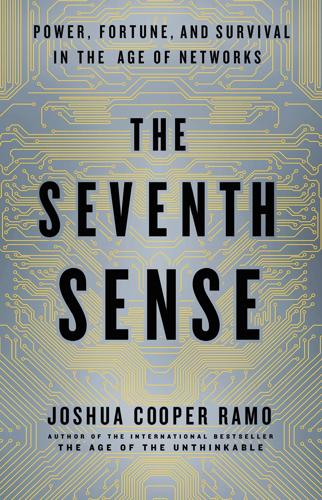
The Seventh Sense: Power, Fortune, and Survival in the Age of Networks
by
Joshua Cooper Ramo
Published 16 May 2016
But Conway’s insight retains all its original power: The physical world can be reshaped by the virtual. Networks will create bumps in the surface of our everyday lives. “When you decide what infrastructure to use for a project, you’re not just making a technical decision,” the programmer and investor Paul Graham has written. “You’re also making a social decision, and this may be the more important of the two.” You might ask: What drew tens of millions of people to watch as Steve Jobs, live, unveiled some new Apple device? Of course, partly it was the cool technology, the warm charisma of the man. But something else was at work, I think.
…
Engineers know the idea: Melvin E. Conway, “How Do Committees Invent?” Datamation 14, no. 4 (April 1968): 28–31. In our connected age: Barbara van Schewick, “Foundations,” in Internet Architecture and Innovation (Cambridge, MA: MIT Press, 2010), 19–36. “When you decide what infrastructure to use”: Paul Graham, “Great Hackers” (July 2004), on paulgraham.com, http://www.paulgraham.com/gh.html. “Contrary to the popular belief”: Karl A. Wittfogel, Oriental Despotism: A Comparative Study of Total Power (New Haven, CT: Yale University Press, 1957). “Is there a greater tragedy”: F. A. Hayek, The Road to Serfdom (London: Routledge Classics, 2001), 5.
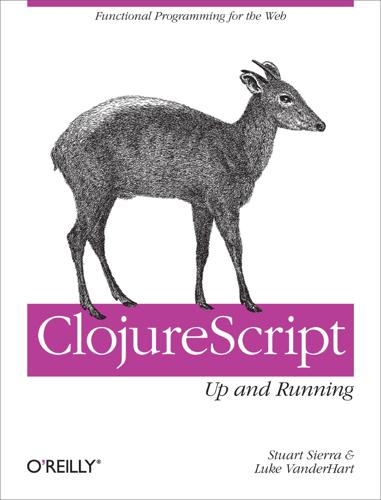
ClojureScript: Up and Running
by
Stuart Sierra
and
Luke Vanderhart
Published 24 Oct 2012
However, for advanced tasks, such as defining new control structures or embedding domain-specific languages, they can be invaluable. This chapter has barely scratched the surface of what macros can do. For more examples, refer to books about Clojure. For even deeper exploration of macros, look to books on Common Lisp, such as Paul Graham’s classic On Lisp, available free online. Note that most other Lisps use the comma character instead of tilde for unquote. * * * [3] Technically, you can prevent evaluation of function arguments by wrapping each argument in an anonymous function, but this is syntactically cumbersome. Chapter 9.
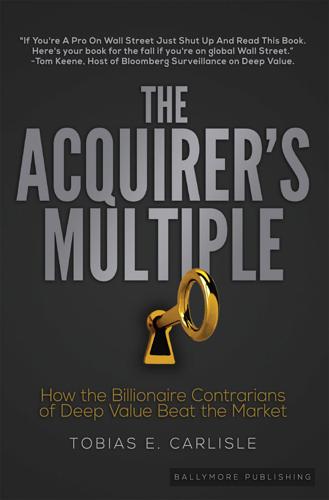
The Acquirer's Multiple: How the Billionaire Contrarians of Deep Value Beat the Market
by
Tobias E. Carlisle
Published 13 Oct 2017
Schwager’s Market Wizards (1989), he said: I learned that even though markets look their very best when they are setting new highs, that is often the best time to sell. To some extent, to be a good trader, you have to be a contrarian. Paul Tudor Jones zigs when the market zags. Billionaire investor Peter Thiele draws this diagram to describe the “sweet spot” for his chosen stocks: Sweet Spot: A Good Idea That Seems Like a Bad Idea Source: Paul Graham, “Black Swan Farming,” September 2012, Available at http://www.paulgraham.com/swan.html Thiele’s “sweet spot” is a good idea that seems like a bad idea to the crowd. But Thiele thinks it might be a good idea. Thiele’s zigging while the crowd zags. Billionaire global macroinvestor Michael Steinhardt made his investors about five-hundred times their money over thirty years until 1995.
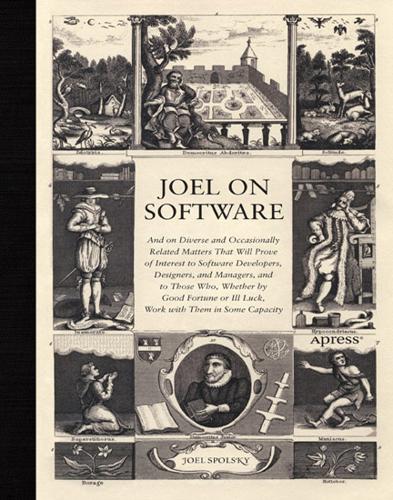
Joel on Software
by
Joel Spolsky
Published 1 Aug 2004
Based on .NET with managed code. XAML. Avalon. Yes, vastly superior to Win32, I admit it. But not an upgrade: a break with the past. Outside developers, who were never particularly happy with the complexity of Windows development, have defected from the Microsoft platform en masse and are now developing for the Web. Paul Graham, who created Yahoo! Stores in the early days of the dotcom boom, summarized it eloquently: "There is all the more reason for startups to write Web-based software now, because writing desktop software has become a lot less fun. If you want to write desktop software now you do it on Microsoft's terms, calling their APIs and working around their buggy OS.
…
Just do me a favor and search the damned hard drive, quickly, for the string I typed, using full-text indexes and other technologies that were boring in 1973. __________ 6. Mark Driver, "Microsoft WinFX Accelerates Need for .NET Adoption," Gartner Research, November 3, 2003. See www.gartner.com/DisplayDocument?doc_cd=118261. 7. Paul Graham, "The Other Road Ahead," September 2001. See www.paulgraham.com/road.html. Automatic Transmissions Win the Day Don't get me wrong; I think .NET is a great development environment, and Avalon with XAML is a tremendous advance over the old way of writing GUI apps for Windows. The biggest advantage of .NET is the fact that it has automatic memory management.
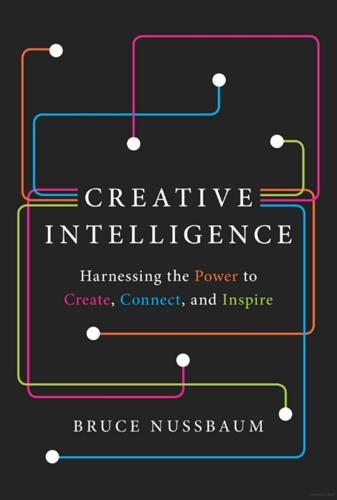
Creative Intelligence: Harnessing the Power to Create, Connect, and Inspire
by
Bruce Nussbaum
Published 5 Mar 2013
Diddy” Combs. Other entrepreneurs with educational backgrounds in art, design, and music where play is intrinsic to learning have founded a whole slew of new companies, including Kickstarter, Tumblr, YouTube, Flickr, Instagram, Vimeo, Android, and, of course, Apple. And the list goes on and on: Paul Graham, the founder of Y Combinator, one of the top incubators for new start-ups in Silicon Valley, studied painting at Rhode Island School of Design and the Accademia di Belle Arti in Florence, in addition to getting his PhD in computer science from Harvard. Biz Stone, cofounder of Twitter and Xanga, says he learned a valuable lesson studying graphic design.
…
id=309165&page=1#.UEu57q60J8E. 121 “We both went to Montessori School”: ABC News, “A Fascinating Group.” 121 Montessori alums include: Peter Sims, “The Montessori Mafia,” Wall Street Journal, April 5, 2011, accessed September 13, 2012, http://blogs.wsj.com/ideas-market/2011/04/05/the-montessori-mafia/. 121 Other entrepreneurs with educational backgrounds: “Google Logo, Founders Spell Success: Montessori,” http://HispanicBusiness.com, August 31, 2012, accessed September 13, 2012, http://www.hispanicbusiness.com/2012/8/31/ google_logo_founders_spell_success_montessori.htm. 121 Paul Graham, the founder of Y Combinator: Randall Stross, The Launch Pad: Inside Y Combinator, Silicon Valley’s Most Exclusive School for Startups (New York: Portfolio, 2012); http://paulgra ham.com/bio.html. 121 Biz Stone, cofounder of Twitter: http://CMO.com, “Twitter Creator Biz Stone Chats with Adobe CMO Lewnes at Digital Summit 2012, http://m.cmo.com/leadership/ twitter-creator-biz-stone-chats-adobe-cmo-lewnes-digital-summit-2012, accessed September 13, 2012. 121 “Being playful, less structured”: Melissa Korn and Amir Efrati, “Master of ’Biz’ Returns to School,” Wall Street Journal, September 1, 2011, accessed September 13, 2012, http://online.wsj.com/article/SB1000142405311190 4009304576533010574207444.html?
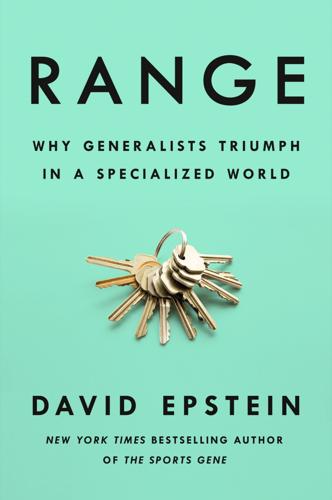
Range: Why Generalists Triumph in a Specialized World
by
David Epstein
Published 1 Mar 2019
,” their work indicated that it is better to be a scientist of yourself, asking smaller questions that can actually be tested—“Which among my various possible selves should I start to explore now? How can I do that?” Be a flirt with your possible selves.* Rather than a grand plan, find experiments that can be undertaken quickly. “Test-and-learn,” Ibarra told me, “not plan-and-implement.” Paul Graham, computer scientist and cofounder of Y Combinator—the start-up funder of Airbnb, Dropbox, Stripe, and Twitch—encapsulated Ibarra’s tenets in a high school graduation speech he wrote, but never delivered: It might seem that nothing would be easier than deciding what you like, but it turns out to be hard, partly because it’s hard to get an accurate picture of most jobs. . . .
…
Watts et al., “Revisiting the Marshmallow Test,” Psychological Science 29, no. 7 (2018): 1159–77. Ibarra began; “We discover the possibilities”: H. Ibarra, Working Identity (Boston: Harvard Business Review Press, 2003). “painless path to a new career”: P. Capell, “Taking the Painless Path to a New Career,” Wall Street Journal Europe, January 2, 2002. Paul Graham . . . high school graduation speech: “What You’ll Wish You’d Known,” www.paulgraham.com/hs.html. William Wallace showed: W. Wallace, “Michelangelo: Separating Theory and Practice,” in Imitation, Representation and Printing in the Italian Renaissance, ed. R. Eriksen and M. Malmanger (Pisa and Rome: Fabrizio Serra Editore, 2009).
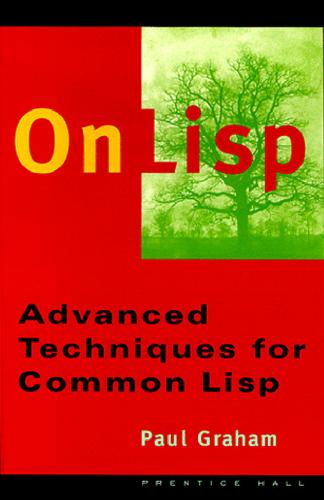
On Lisp: Advanced Techniques for Common Lisp
by
Paul Graham
Published 8 Sep 1993
On Lisp by Paul Graham * * * Table of Content Preface The Extensible Language Design by Evolution Programming Bottom-Up Extensible Software Extending Lisp Why Lisp (or When) Functions Functions as Data Defining Functions Functional Arguments Functions as Properties Scope Closures Local Functions Tail-Recursion Compilation Functions from Lists Functional Programming Functional Design Imperative Outside-In Functional Interfaces Interactive Programming Utility Functions Birth of a Utility Invest in Abstraction Operations on Lists Search Mapping I/O Symbols and Strings Density Returning Functions Common Lisp Evolves Orthogonality Memoizing Composing Functions Recursion on Cdrs Recursion on Subtrees When to Build Functions Functions as Representation Networks Compiling Networks Looking Forward Macros How Macros Work Backquote Defining Simple Macros Testing Macroexpansion Destructuring in Parameter Lists A Model of Macros Macros as Programs Macro Style Dependence on Macros Macros from Functions Symbol Macros When to Use Macros When Nothing Else Will Do Macro or Function?
…
Most of all, I'd like to thank my parents, for their example and encouragement; and Jackie, who taught me what I might have learned if I had listened to them. I hope reading this book will be fun. Of all the languages I know, I like Lisp the best, simply because it's the most beautiful. This book is about Lisp at its lispiest. I had fun writing it, and I hope that comes through in the text. Paul Graham * * * 1. The Extensible Language Not long ago, if you asked what Lisp was for, many people would have answered "for artificial intelligence." In fact, the association between Lisp and AI is just an accident of history. Lisp was invented by John McCarthy, who also invented the term "artificial intelligence."

Super Thinking: The Big Book of Mental Models
by
Gabriel Weinberg
and
Lauren McCann
Published 17 Jun 2019
Therefore, you should try to avoid multitasking on any consequential activity. Focusing on one high-concentration activity at a time can also help you produce dramatically better results. That’s because the best results rely on creative solutions, which often come from concentrating intently on one thing. Startup investor Paul Graham calls it the top idea in your mind in his 2010 essay of the same name: Everyone who’s worked on difficult problems is probably familiar with the phenomenon of working hard to figure something out, failing, and then suddenly seeing the answer a bit later while doing something else. There’s a kind of thinking you do without trying to.
…
When working to craft a positive organizational culture, there are a few tactical models to keep in mind as well. First, you can show employees that you value their contributions by understanding that people in different positions need different kinds of support to make progress on challenging efforts. Consider what startup investor Paul Graham, in a July 2009 blog post, called the manager’s schedule versus maker’s schedule: The manager’s schedule is for bosses. It’s embodied in the traditional appointment book, with each day cut into one-hour intervals. You can block off several hours for a single task if you need to, but by default you change what you’re doing every hour. . . .
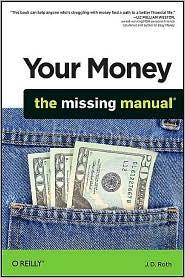
Your Money: The Missing Manual
by
J.D. Roth
Published 18 Mar 2010
This keeps you from buying impulsively and creates a place for your friends and family to go to see what sorts of gifts you might want. The Tyranny of Stuff There's one huge way to save money that few people talk about: Own less Stuff. In his brilliant essay entitled "Stuff" (www.paulgraham.com/stuff.html), Paul Graham writes that before you buy anything, you should ask yourself, "Will this be something I use constantly?" Graham used to pick up free Stuff from the side of the road. He'd buy something at a garage sale simply because he could get it for a tenth of what it cost new. Eventually he realized that nothing is a bargain if it just sits in the garage or a storage unit.
…
For Love or Money: Which Career Should You Choose? Before you can start down a career path, you have to decide what to do for a living. Should you pursue your passion, doing work you love regardless of how much you earn? Or should you focus simply on the money? In his essay on how to do what you love (www.paulgraham.com/love.html), Paul Graham writes: Finding work you love is very difficult. Most people fail. Even if you succeed, it's rare to be free to work on what you want till your thirties or forties. But if you have the destination in sight you'll be more likely to arrive at it. If you know you can love work, you're in the home stretch, and if you know what work you love, you're practically there.

Stolen Focus: Why You Can't Pay Attention--And How to Think Deeply Again
by
Johann Hari
Published 25 Jan 2022
Tony Fadell, who co-invented the iPhone, said: “I wake up in cold sweats every so often thinking, what did we bring to the world?” He worried that he had helped create “a nuclear bomb” that can “blow up people’s brains and reprogram them.” Many Silicon Valley insiders predicted that it would only get worse. One of its most famous investors, Paul Graham, wrote: “Unless the forms of technological progress that produced these things are subject to different laws than technological progress in general, the world will get more addictive in the next forty years than it did in the last forty.” * * * One day, James Williams—the former Google strategist I met—addressed an audience of hundreds of leading tech designers and asked them a simple question: “How many of you want to live in the world you are designing?”
…
.: Cambridge University Press, 2018), 102. GO TO NOTE REFERENCE IN TEXT “Unless the forms of technological progress that produced these things are subject to different laws”: N. Eyal, Hooked: How to Build Habit-Forming Products (London: Penguin, 2014), 11; and P. Graham, “The Acceleration of Addictiveness,” Paul Graham (blog), July 2010, http://www.paulgraham.com/addiction.html?viewfullsite=1. GO TO NOTE REFERENCE IN TEXT CHAPTER SEVEN: CAUSE SIX (PART TWO) “surveillance capitalism”: S. Zuboff, The Age of Surveillance Capitalism (New York: Public Affairs, 2019). Visit www.shoshanazuboff.com for more on Professor Zuboff’s fight for “a human future.”

Start Small, Stay Small: A Developer's Guide to Launching a Startup
by
Rob Walling
Published 15 Jan 2010
Lessons Learned (www.startuplessonslearned.com) – Eric Ries’ Lean Startup Methodology closely parallels the Micropreneur Methodology I’ve laid out in this book, and his knowledge of the startup process is unparalleled. Single Founder (www.singlefounder.com) – Mike Taber shares his insight and wisdom from 10 years in the entrepreneurial trenches. Paul Graham (www.paulgraham.com/articles.html) – Though venture-focused, Graham’s insights into the startup process are unique and powerful. Software by Rob (www.softwarebyrob.com) – My blog, where I talk about all things self-funded. Online Communities The Micropreneur Academy (www.micropreneur.com) – A paid membership community of bootstrappers and Micropreneurs, brought together to learn, be accountable, share community, and launch successful startups.
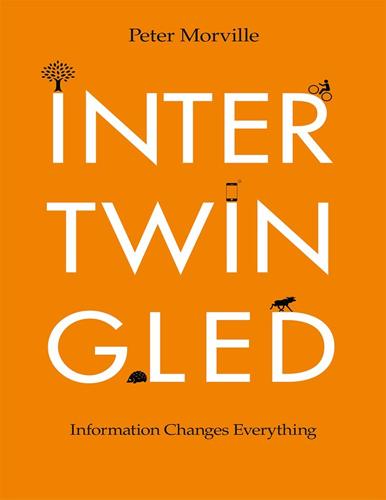
Intertwingled: Information Changes Everything
by
Peter Morville
Published 14 May 2014
The other part I recall is the artwork. I remember a colorful drawing of animals in three categories – real, imaginary, impossible – and being inspired by the freedom with which kids invent impossible creatures. Over time, lest we’re careful, our bodyminds grow inflexible. We imagine the impossible less and less until we can’t. Paul Graham says entrepreneurs must be cheeky, always believing there’s a better way. Similarly, information architects must be contrarians, always re-framing ideas and beliefs in a different way. Of course, Richard Saul Wurman, the infamous architect of “information architect” would beg to disagree. I rather worship the space between things, the silence between good friends, the time between the notes of music, the break time during a conference, the space between buildings, negative space…It’s the way I approach everything.
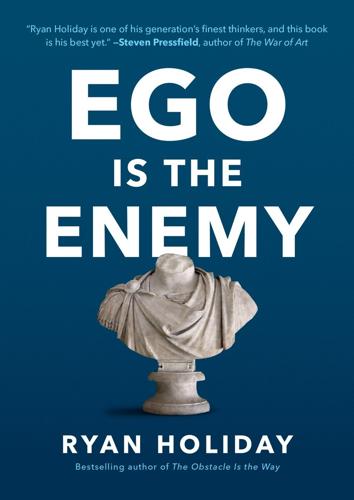
Ego Is the Enemy
by
Ryan Holiday
Published 13 Jun 2016
Which is fine, except that’s not how Google started. (Larry Page and Sergey Brin were two Stanford PhDs working on their dissertations.) It’s not how YouTube started. (Its founders weren’t trying to reinvent TV; they were trying to share funny video clips.) It’s not how most true wealth was created, in fact. Investor Paul Graham (who invested in Airbnb, reddit, Dropbox, and others), working in the same city as Walsh a few decades later, explicitly warns startups against having bold, sweeping visions early on. Of course, as a capitalist, he wants to fund companies that massively disrupt industries and change the world—that’s where the money is.
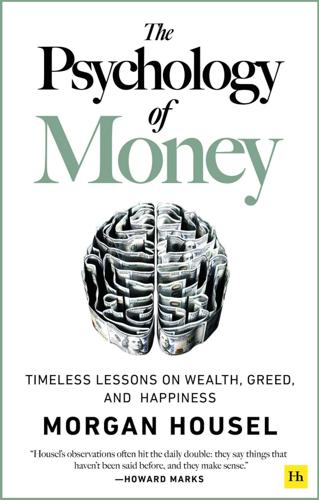
The Psychology of Money: Timeless Lessons on Wealth, Greed, and Happiness
by
Morgan Housel
Published 7 Sep 2020
Harper’s Magazine noted in 1957: The rich man smokes the same sort of cigarettes as the poor man, shaves with the same sort of razor, uses the same sort of telephone, vacuum cleaner, radio, and TV set, has the same sort of lighting and heating equipment in his house, and so on indefinitely. The differences between his automobile and the poor man’s are minor. Essentially they have similar engines, similar fittings. In the early years of the century there was a hierarchy of automobiles. Paul Graham wrote in 2016 about what something as simple as there only being three TV stations did to equalize culture: It’s difficult to imagine now, but every night tens of millions of families would sit down together in front of their TV set watching the same show, at the same time, as their next door neighbors.

Palo Alto: A History of California, Capitalism, and the World
by
Malcolm Harris
Published 14 Feb 2023
Caught up in the frenzy, most large firms were stuck writing off at least one overvalued internet acquisition, effectively giving away millions of dollars each to a cohort of web entrepreneurs based on the misperception that those dudes came up with important stuff. But when their buyers wrote off the purchases, these men (they were mostly men) didn’t adjust their self-image downward. After all, they still had the money. Paul Graham sold a web storefront software company called Viaweb to Yahoo! for around $50 million in Yahoo! stock and had the sense to cash out quickly. “By 1998, Yahoo was the beneficiary of a de facto Ponzi scheme,” he wrote later. “Investors were excited about the internet. One reason they were excited was Yahoo’s revenue growth.
…
Though Thiel hasn’t had a presidency of his own to work with—no chance of that for the Frankfurt-born billionaire without a constitutional amendment—he has managed a similar feat with the PayPal Mafia and the Thielverse. As American power shifted toward the private sector and, within the private sector, toward Silicon Valley’s fast-growing tech companies, his networks acquired outsize importance, and his war chest ballooned. Founders Fund was open about investing in people, and Thiel took a position at Paul Graham’s incubator Y Combinator to access ambitious new CEOs at their earliest phase of development. In 2010, Thiel upped the ante: He announced the Thiel Fellowships, a $100,000 grant for handpicked entrepreneurs under age twenty who are willing to forgo college.75 The parallels with Leland Stanford, Charles Marvin, and their sprinting colts are striking.
…
Steven Levy, Facebook: The Inside Story (New York: Blue Rider Press, 2020), 110. Chapter 5.3 Blister in the Sun 1. Michael S. Malone, Infinite Loop: How the World’s Most Insanely Great Computer Company Went Insane (New York: Doubleday, 1999). 2. Tony Tulathimutte, Private Citizens (New York: HarperCollins, 2016), 104. 3. Paul Graham, “What Happened to Yahoo,” PaulGraham.com, August 2010, http://www.paulgraham.com/yahoo.html. 4. Kim Girard, “Commerce One to Buy CommerceBid,” CNet, January 2, 2002, https://www.cnet.com/tech/tech-industry/commerce-one-to-buy-commercebid. 5. John Carreyrou, Bad Blood: Secrets and Lies in a Silicon Valley Startup (New York: Vintage Books, 2020), 70. 6.

To Save Everything, Click Here: The Folly of Technological Solutionism
by
Evgeny Morozov
Published 15 Nov 2013
It’s the same notion of “the Internet” that popular technology blogger and author Jeff Jarvis invokes when, discussing Germans’ complex feelings about privacy, he writes of a “nagging fear Germans harbor that their heritage is coming into fundamental conflict with internet culture—with the future.” All these thinkers take “the Internet” to be fixed and unified, meaningful and didactic, powerful and unconquerable. And, as Jarvis puts it, it’s “the future.” In a similar vein, popular technology investor Paul Graham writes, “Web 2.0 means using the Web the way it’s meant to be used. The ‘trends’ we’re seeing now are simply the inherent nature of the Web emerging from under the broken models that got imposed during the Battle.” “The Internet,” thus, is believed to possess an inherent nature, a logic, a teleology, and that nature is rapidly unfolding in front of us.
…
(New York: Free Press, 2006). 23 “policymakers should work with the grain of the Internet”: Eric Schmidt, “Let Luvvie Embrace Boffin in the Digital Future,” The Guardian, August 26, 2011. 23 “without a major upgrade”: Rebecca MacKinnon, “Why Doesn’t Washington Understand the Internet?,” Washington Post, January 22, 2012. 23 “nagging fear Germans harbor”: Jeff Jarvis, Public Parts: How Sharing in the Digital Age Improves the Way We Work and Live (New York: Simon & Schuster, 2011). 24 “Web 2.0 means using the Web”: Paul Graham, “Web 2.0,” PaulGraham.com, November 2005, http://www.paulgraham.com/web20.html. 24 “There are laws of Nature”: David Post, In Search of Jefferson’s Moose: Notes on the State of Cyberspace (Oxford: Oxford University Press, 2009), 211. 25 it’s not “the solution to the problem”: Steven Johnson, Future Perfect: The Case for Progress in a Networked Age (New York: Penguin, 2012), xxxv. 25 “one could use the Internet directly”: ibid., xxxv, 26 “the creation of ARPANET and TCP/IP”: ibid., 16. 26 “Slowly but steadily”: ibid., 18. 26 “The question with Kickstarter”: ibid., 43. 27 Kickstarter’s most famous failed alumnus is Diaspora: see Jenna Wortham, “Success of Crowdfunding Puts Pressure on Entrepreneurs,” New York Times, September 17, 2012, http://www.nytimes.com/2012/09/18/technology/success-of-crowdfunding-puts-pressure-on-entrepreneurs.html. 28 Inge Ejbye Sørensen has studied how crowdfunding: see Inge Ejbye Sørensen, “Crowd-sourcing and Outsourcing: The Impact of Online Funding and Distribution on the Documentary Film Industry in the UK,” Media, Culture & Society 34 no. 6 (September 2012): 726–743; I’ve written about Sørensen’s research in my Slate column, from which the following few paragraphs are drawn: see Evgeny Morozov, “Kickstarter Will Not Save Artists from the Entertainment Industry’s Shackles,” Slate, September 25, 2012http://www.slate.com/articles/technology/future_tense/2012/09/kickstarter_s_crowdfunding_won_t_save_indie_filmmaking_.single.html . 29 What Would Google Do?
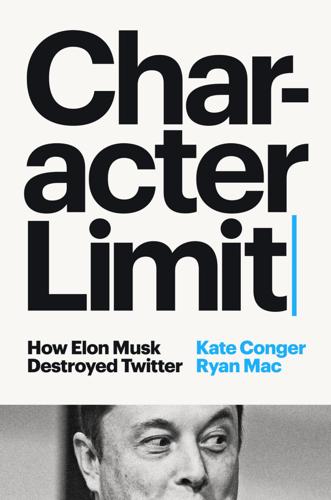
Character Limit: How Elon Musk Destroyed Twitter
by
Kate Conger
and
Ryan Mac
Published 17 Sep 2024
The move was also antithetical to the Silicon Valley ethos of competition, which posited that companies should simply build the best products to win, not force people to use them. Among Musk’s critics were whistleblower Edward Snowden; Aaron Levie, the chief executive of Box; and Balaji Srinivasan, a crypto entrepreneur and former partner at Andreessen Horowitz. But one of the loudest was Paul Graham, the founder of start-up incubator Y Combinator, who had tweeted the previous month that “it’s remarkable how many people who’ve never run any kind of company think they know how to run a tech company better than someone who’s run Tesla and SpaceX.” After Twitter’s new policy, he changed his tune, tweeting a link to his Mastodon account and calling Musk’s move “the final straw.”
…
“Elon Musk Explores Raising up to $3 Billion to Help Pay Off Twitter Debt.” Wall Street Journal, January 25, 2023. wsj.com/articles/elon-musk-explores-raising-up-to-3-billion-to-pay-off-twitter-debt-11674669412. GO TO NOTE REFERENCE IN TEXT “I still think Elon is a smart guy”: Graham, Paul. “Paul Graham Is Leaving Twitter for Now.” ycombinator.com, December 18, 2022. news.ycombinator.com/item?id=34041985. GO TO NOTE REFERENCE IN TEXT The company’s shares set a new two-year low: Sean, O’Kane. “Musk Lashes Out at Unhappy Investor as Tesla Shares Retreat.” Bloomberg.com, December 20, 2022. bloomberg.com/news/articles/2022-12-20/tesla-tsla-share-retreat-prompts-criticism-of-musk-by-longtime-investors.
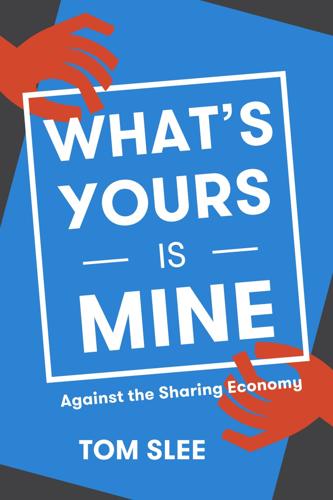
What's Yours Is Mine: Against the Sharing Economy
by
Tom Slee
Published 18 Nov 2015
They were inundated with requests and realized there may be a market for this kind of thing, and so “Airbed and Breakfast” was born. Since then, the story has been one of hard work and growth. Running up the limit on multiple credit cards to finance the very beginnings, they got an early investment from Paul Graham’s Y-Combinator fund. Struggling to get the site to take off, they went out to their biggest city (New York) and got the hosts to have professional photos taken of their rooms to make them more appealing; the bookings increased, and professional photography continues to be the most effective way for a host to attract guests.
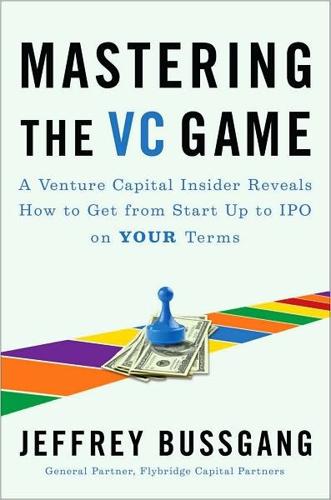
Mastering the VC Game: A Venture Capital Insider Reveals How to Get From Start-Up to IPO on Your Terms
by
Jeffrey Bussgang
Published 31 Mar 2010
www.whohastimeforthis.blogspot.com Mark Peter Davis Venture Made Transparent www.markpeterdavis.com Fred Destin A VC in Europe www.freddestin.com Chris Dixon Chris Dixon’s Blog www.cdixon.org Don Dodge Don Dodge on the Next Big Thing www.dondodge.typepad.com Tim Draper The Riskmaster www.theriskmaster.blogspot.com Brad Feld Feld Thoughts www.feld.com Seth Godin Seth’s Blog www.sethgodin.typepad.com Paul Graham www.paulgraham.com Michael Greeley On the Flying Bridge www.ontheflyingbridge.wordpress.com Bill Gurley Above the Crowd www.abovethecrowd.com Chip Hazard Hazard Lights www.hazardlights.net Mike Hirshland VCMike’s Blog www.vcmike.wordpress.com David Hornik VentureBlog www.ventureblog.com Jeff Jarvis BuzzMachine www.buzzmachine.com Jon Karlen Venturing Forth www.venturingforth.typepad.com Guy Kawasaki How to Change the World www.blog.guykawasaki.com Scott Kirsner Innovation Economy www.boston.com/business/technology/innoeco/ Josh Kopelman Redeye VC www.redeye.firstround.com Om Malik GigaOM www.gigaom.com Howard Morgan WayTooEarly www.waytooearly.firstround.com Jeff Nolan Venture Chronicles www.jeffnolan.com/wp Tim O’Reilly O’Reilly Radar www.radar.oreilly.com/tim Mark Pincus Mark Pincus Blog www.markpincus.typepad.com Dan Primack PE Hub www.pehub.com Naval Ravikant and Babak Nivi Venture Hacks www.venturehacks.com Eric Ries Lessons Learned www.startuplessonslearned.com Bijan Sabet Bijansabet.com www.bijansabet.com David Meerman Scott Web Ink Now www.webinknow.com Dharmesh Shah OnStartups www.onstartups.com Ed Sim BeyondVC www.beyondvc.com David Skok For Entrepreneurs www.forentrepreneurs.com Mark Suster Both Sides of the Table www.bothsidesofthetable.com Kara Swisher—All Things Digital BoomTown www.kara.allthingsd.com Bill Taylor Practically Radical www.blogs.harvardbusiness.org/taylor/ Noam Wasserman Noam Wasserman’s “Founder Frustrations” Blog www.founderresearch.blogspot.com Fred Wilson A VC www.avc.com PHOTO CREDITS Photo of Christoph Westphal on p. 15, provided by Christoph Westphal Photo of Bob Langer on p. 20, Stu Rosen Photography Photo of Jack Dorsey on p. 25, provided by Jack Dorsey Photo of Reid Hoffman on p. 33, provided by Reid Hoffman Photo of Fred Wilson on p. 51, provided by Fred Wilson Photo of David Hornik on p. 57, provided by David Hornik Photo of Tim Draper on p. 62, Soo Photography Photo of Howard Morgan on p. 66, provided by Howard Morgan Photo of Patricia Nakache on p. 86, provided by Patricia Nakache Photo of Gail Goodman on p. 95, provided by Gail Goodman Photo of Eric Paley on p. 100, provided by Eric Paley Photo of Marsha Moses on p. 106, Staff Photo: Kris Snibbe/ Harvard News Office Photo of Tim Bucher on p. 124, provided by Tim Bucher Photo of Quan Zhou on p. 200, provided by Quan Zhou Photo of Henry Nguyen on p. 204, provided by Henry Nguyen Photo of Irena Goldenberg on p. 214, provided by Irena Goldenberg Photo of Terry McGuire on p. 221, Bachrach Photography INDEX Abdul, Paula Accel Partners Advisory boards, benefits of Akamai Technologies Amazon.com Andreessen, Marc Angel investors, role of Apple Arnold, Steve Aronoff, David.
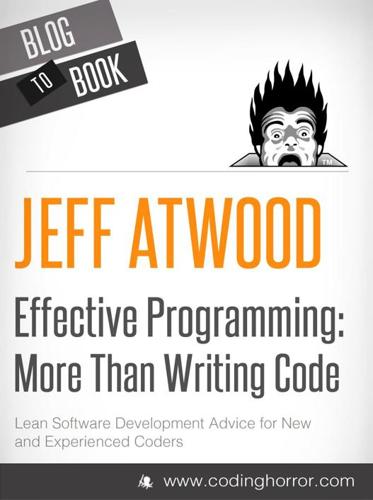
Effective Programming: More Than Writing Code
by
Jeff Atwood
Published 3 Jul 2012
If you’re looking for good programming blogs to sharpen your saw (or at least pique your intellectual curiosity), I know of two excellent programming specific link aggregation sites that can help you find them. The first is Hacker News, which I recommend highly. Hacker News is the brainchild of Paul Graham, so it partially reflects his interests in Y Combinator and entrepreneurial stuff like startups. Paul is serious about moderation on the site, so in addition to the typical Digg-style voting, there’s a secret cabal (I like to think of it as The Octagon, “no one will admit they still exist!”) of hand-picked editors who remove flagged posts.

Move Fast and Break Things: How Facebook, Google, and Amazon Cornered Culture and Undermined Democracy
by
Jonathan Taplin
Published 17 Apr 2017
But for now there are few constraints on Tech capitalism. The monopoly profits of this new era have been very, very good to a few men. The Forbes 400 list, which ranks American wealth, places Bill Gates, Larry Ellison, Larry Page, Jeff Bezos, Sergey Brin, and Mark Zuckerberg in the top ten. The Silicon Valley venture capitalist Paul Graham (CEO of Y Combinator), in a 2016 blog post, was quite open about celebrating income inequality. He wrote, “I’ve become an expert on how to increase economic inequality, and I’ve spent the past decade working hard to do it. Not just by helping the 2500 founders YC has funded. I’ve also written essays encouraging people to increase economic inequality and giving them detailed instructions showing how.”
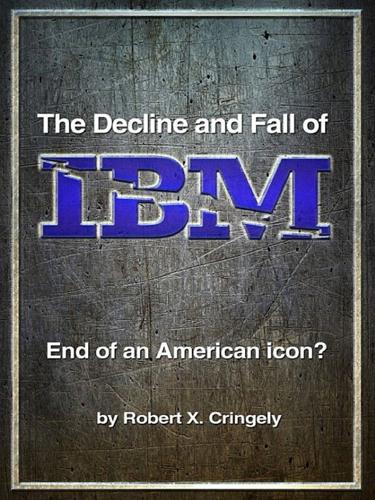
The Decline and Fall of IBM: End of an American Icon?
by
Robert X. Cringely
Published 1 Jun 2014
Anonymous Coward II August 27, 2009 at 1:38 pm Apple creates better products “I have no idea how IBM can remain ahead of Apple still at #2 with no product or service not replaceable by any decent open source/freeware company, except perhaps by pure brand name and salesmanship.” Yes, it’s salesmanship, basically. IBM sells ‘enterprise’ software. Read what Paul Graham says on IBM and ‘enterprise’ software. The problem is that the people who are in charge of choosing and buying ‘enterprise’ software, that is, CTOs or CIOs of large companies, aren’t the same people using the software, that is, the low-level workers. If the workers have trouble using the software, the CIO/CTO doesn’t care.
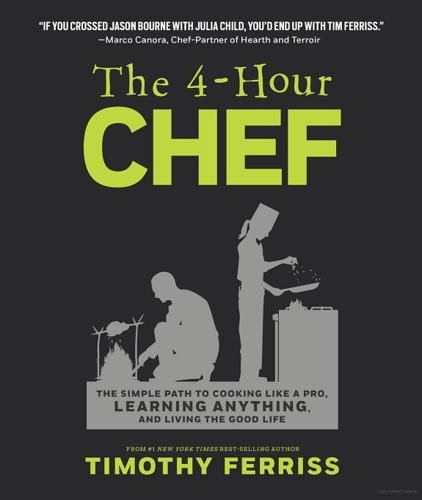
The 4-Hour Chef: The Simple Path to Cooking Like a Pro, Learning Anything, and Living the Good Life
by
Timothy Ferriss
Published 1 Jan 2012
CULINARY CRAM SCHOOL—LESSON PLAN TECHNIQUE: BUTCHERY TECHNIQUE: COOKING TECHNIQUE: CUTTING TECHNIQUE: EGG COOKERY TECHNIQUE: GARDE MANGER TECHNIQUE: SAUCE MAKING LONGER-TERM LEARNING SUGGESTIONS Y Combinator, quietly tucked away off highway 101 just miles from Google headquarters, is named after one of the coolest ideas in computer science: a program that runs programs. Cofounded in 2005 by Paul Graham, Robert Morris, Trevor Blackwell, and Jessica Livingston, YC offers small amounts of capital ($14,000–$20,000) to founders in exchange for, on average, 6% of each company. Thousands of applications flow in for dozens of spots in each “class,” leading to an acceptance rate of 2.5–3.5%. The chosen few move to Silicon Valley, refine their companies 24/7 for three months, and then pitch investors at Demo Day.
…
In reality, it has built something more like a SEAL Team 6 meets Harvard34 of start-up cram schools. The system works: YC-backed start-ups have an average valuation of $22.4 million. Some get to the billions within a few years of graduation: DropBox and Airbnb, for instance. Others sell for hundreds of millions, like Heroku ($212 million in cash). Brian Chesky, cofounder of Airbnb, says of Paul Graham, the godfather of YC: “Just as [legendary music producer John] Hammond found Bob Dylan when he was a bad singer no one knew, Graham can spot potential.” If Graham can spot potential, the question I had was: how does he do it? The answer: YC has funded more than 450 start-ups since 2005. They have a far better sample size than most venture capitalists.
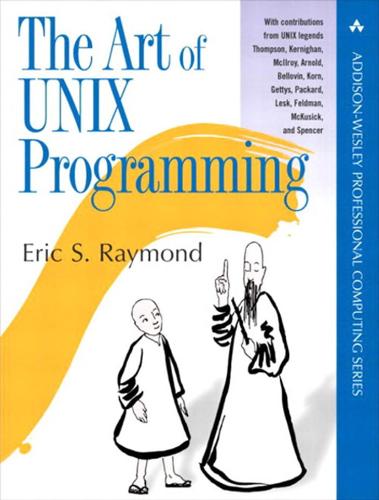
The Art of UNIX Programming
by
Eric S. Raymond
Published 22 Sep 2003
A whole class of mail filter programs (those easily findable by Web search include popfile, spambayes, and bogofilter) use a database of word correlations to replace the elaborate pattern-matching conditional logic of pattern-matching spam filters. Programs like these became common on the Internet very rapidly following Paul Graham's landmark paper A Plan for Spam [Graham] in 2002. While the explosion was triggered by the increasing cost of the pattern-matching arms race, the statistical-filtering idea was adopted first and fastest by Unix shops. In part, this was certainly because almost all the Internet service providers (who are most burdened by spam, and thus had most incentive to adopt effective new techniques) are Unix shops — but undoubtedly the harmony with some traditional themes in Unix software design helped as well.
…
Association for Computing Machinery. Don Gentner and Jacob Nielsen. “The Anti-Mac Interface”. August 1996. Available on the Web. [Gettys] Jim Gettys. The Two-Edged Sword. 1998. Available on the Web. [Glickstein] Bob Glickstein. Writing GNU Emacs Extensions. O'Reilly & Associates. 1997. ISBN 1-56592-261-1. [Graham] Paul Graham. A Plan for Spam. Available on the Web. [Harold-Means] Elliotte Rusty Harold and W. Scott Means. XML in a Nutshell. 2nd Edition. O'Reilly & Associates. 2002. ISBN 0-596-00292-0. [Hatton97] IEEE Software. Les Hatton. “Re-examining the Defect-Density versus Component Size Distribution”. March/April 1997.
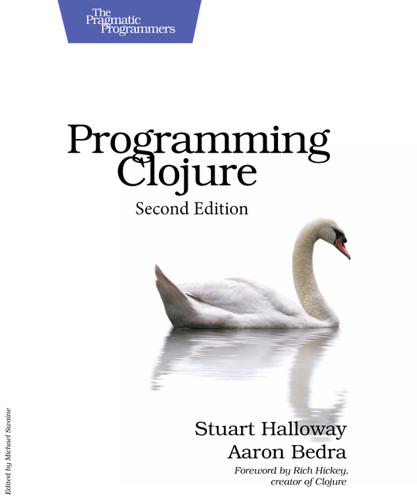
Programming Clojure
by
Stuart Halloway
and
Aaron Bedra
Published 17 Apr 2012
If you want a variant of records with strong typing and configurable null-checking for all fields, you can create your own defrecord macro, to be used like this: (defrecord name [Type :arg1 Type :arg2 Type :arg3] :allow-nulls false) This ability to reprogram the language from within the language is the unique advantage of Lisp. You will see facets of this idea described in various ways: Lisp is homoiconic.[9] That is, Lisp code is just Lisp data. This makes it easy for programs to write other programs. The whole language is there, all the time. Paul Graham’s essay “Revenge of the Nerds”[10] explains why this is so powerful. Lisp syntax also eliminates rules for operator precedence and associativity. You will not find a table documenting operator precedence or associativity anywhere in this book. With fully parenthesized expressions, there is no possible ambiguity.
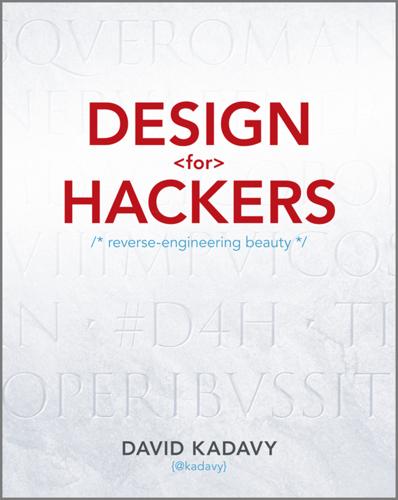
Design for Hackers: Reverse Engineering Beauty
by
David Kadavy
Published 5 Sep 2011
They do whatever it takes to achieve their visions. They’re entrepreneurial. They value skills and knowledge over titles and experience. At the forefront of the hacker movement is the Hacker News community (http://news.ycombinator.com), a news aggregation site contributed to by followers of Paul Graham’s Y Combinator entrepreneurial incubator program. The program tends to fund small teams of hackers who have used their skills and hacker attitude to build cool products that solve problems: UserVoice (www.uservoice.com) democratizes customer support; Reddit (www.reddit.com) democratizes news; Dropbox (www.dropbox.com) provides an easy, automatic backup solution; and AirBNB (www.airbnb.com) turns extra bedrooms into places for travelers to stay.
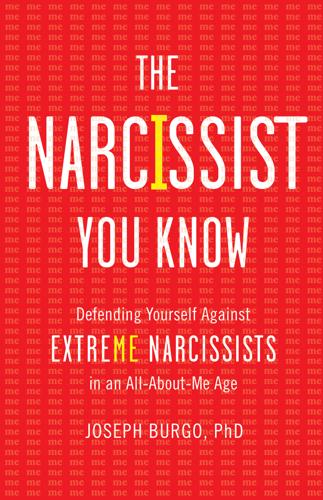
The Narcissist You Know
by
Joseph Burgo
He knew he wanted to found his own Internet company, but he had no clear vision about which type it would be. He played with different possibilities in the areas of social media and mobile apps but couldn’t settle on any one of them. In the meantime, he spent many hours reading about Internet entrepreneurs who had made a fortune. He particularly admired Paul Graham and devoted hours to the study of his essays, as if they were gospel. Like many young men of his age and educational background, he idolized Steve Jobs. Ian also began playing a popular MMORPG in his free time. This type of game allows millions of players across the globe to enter an artificial world and inhabit an alternate identity or avatar.
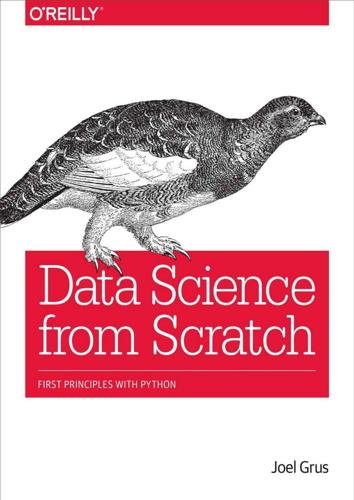
Data Science from Scratch: First Principles with Python
by
Joel Grus
Published 13 Apr 2015
Although our features are all of the form “message contains word ,” there’s no reason why this has to be the case. In our implementation, we could add extra features like “message contains a number” by creating phony tokens like contains:number and modifying the tokenizer to emit them when appropriate. For Further Exploration Paul Graham’s articles “A Plan for Spam” and “Better Bayesian Filtering” (are interesting and) give more insight into the ideas behind building spam filters. scikit-learn contains a BernoulliNB model that implements the same Naive Bayes algorithm we implemented here, as well as other variations on the model.

Company of One: Why Staying Small Is the Next Big Thing for Business
by
Paul Jarvis
Published 1 Jan 2019
Because a company’s interests may not always align with the interests of its backers. Worse, investor interests may not always align with what’s best for a business’s end customers. Capital infusion can also leave a business with less control, resilience, speed, and simplicity—the main traits required for companies of one. Paul Graham, the cofounder of Y Combinator (one of the largest and most notable VC firms for startups) explains that VCs don’t invest millions in companies because that’s what those companies might need; rather, they invest the amount that their own VC business requires to see growth in their own portfolios, coming from the few companies that actually give them a positive return.
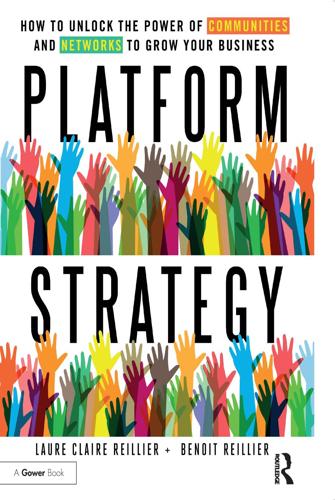
Open for Business Harnessing the Power of Platform Ecosystems
by
Lauren Turner Claire
,
Laure Claire Reillier
and
Benoit Reillier
Published 14 Oct 2017
As the presidential campaign was in full swing and both sides were keen to show support for their favourite candidates, the Airbnb team decided to sell special edition Cheerios cereal boxes for both presidential candidates called ‘Obama O’s’ and ‘Cap’n McCains’ for $40 each. They made $30,000 in a few weeks. By early 2009, they were invited to join the Y Combinator, one of the leading incubator programmes in San Francisco, and got $20,000 of funding from well-known angel investor Paul Graham. A seed round of $600,000 led 2 Introduction to platform businesses by Sequoia Capital followed shortly afterwards.1 Even so, the business did not take off. The Airbnb team realized that the photos of places advertised on their website were not appealing. According to Brian Chesky, ‘A web startup would say, “Let’s send emails, teach [users] professional photography, and test them.”
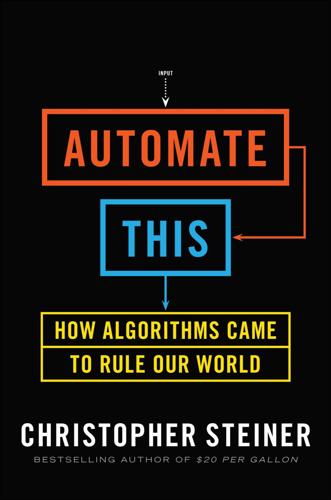
Automate This: How Algorithms Came to Rule Our World
by
Christopher Steiner
Published 29 Aug 2012
By the time I finished, however, I had left Forbes to form a startup, Aisle50, which offers grocery discounts to consumers. It was quite a change for me but also one that I embraced. There have been many helping hands along the way, some of the most formidable ones coming from our investors and advisers at Y Combinator, Paul Graham and Jessica Livingston. They have built something special in Silicon Valley, and, for the curious, there happens to be a book being released at exactly the same time as this one, by the same publisher, that is the best chronicle ever put together on Y Combinator: Randy Stross’s The Launch Pad. Read it.

Exponential Organizations: Why New Organizations Are Ten Times Better, Faster, and Cheaper Than Yours (And What to Do About It)
by
Salim Ismail
and
Yuri van Geest
Published 17 Oct 2014
After that extraordinary initial success, the open source movement settled into a stable, stratified environment over much the last decade, with the community producing little in the way of new innovation. Everything changed in 2008, however, when Chris Wanstrath, P.J. Hyett and Tom Preston-Werner (all out of Paul Graham’s Y Combinator entrepreneurial incubator program) founded a company called GitHub. An open source coding and collaboration tool and platform, GitHub has utterly transformed the open source environment. It is a social network for programmers in which people and their collaborations are central, rather than just the code itself.

Lab Rats: How Silicon Valley Made Work Miserable for the Rest of Us
by
Dan Lyons
Published 22 Oct 2018
Women represent only 15 percent of decision-making roles. VCs claim that they make decisions based entirely on the strength of the company’s ideas, and without any regard for race or gender. But can you guess where the members of the White Man Club tend to put their money? “I can be tricked by anyone who looks like Mark Zuckerberg” is how Paul Graham, the founder of Y Combinator, a top Silicon Valley start-up incubator, once famously put it. Graham later claimed he was joking, but a glance through the roster of Y Combinator portfolio companies turns up an awful lot of nerdy young Zuckerberg clones. As for why there are so few women in venture capital, Michael Moritz, a partner at Sequoia Ventures, once said that it’s not because of gender bias but that “What we’re not prepared to do is to lower our standards.”

Live Work Work Work Die: A Journey Into the Savage Heart of Silicon Valley
by
Corey Pein
Published 23 Apr 2018
The pet-sharing space was crowded with competitors like MySocialPetwork.com, Petwink—“for passionate pet owners”—and Petbu, which promised to help “make your pet famous.” I needed to come up with something entirely different, yet samey. I browsed the tech press for inspiration, returning, as ever, to Hacker News, the internet home page for people who were convinced they were the world’s smartest people, and I found an essay by the website’s founder, Paul Graham, called “Before the Startup.” That seemed to describe where I was. The essay was adapted from a guest lecture Graham delivered to his business partner Sam Altman’s startup class at Stanford. “The way to succeed in a startup is not to be an expert on startups, but to be an expert on your users and the problem you’re solving for them,” Graham wrote.

Conflicted: How Productive Disagreements Lead to Better Outcomes
by
Ian Leslie
Published 23 Feb 2021
As we enter the third decade of this century, that vision seems painfully naive. Howling mobs clash day and night. The internet is connecting people, but it doesn’t always create fellow-feeling. At its worst, it can resemble a machine for the production of discord and division. Silicon Valley entrepreneur Paul Graham has observed that the internet is a medium that engenders disagreement by design. Digital media platforms are inherently interactive and, well, people are disputatious. As Graham puts it, ‘Agreeing tends to motivate people less than disagreeing.’ Readers are more likely to comment on an article or post when they disagree with it, and in disagreement they have more to say (there are only so many ways you can say, ‘I agree’).
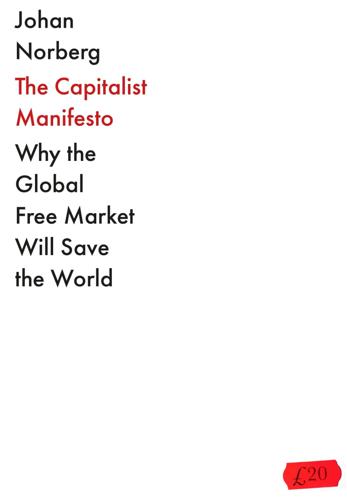
The Capitalist Manifesto
by
Johan Norberg
Published 14 Jun 2023
William McBride, ‘Thomas Piketty’s false depiction of wealth in America’, Tax Foundation Special Report no.223, July 2014. Chris Edwards & Ryan Bourne, ‘Exploring Wealth Inequality’, Policy Analysis, no.881, Cato Institute, 5 November 2019. 14. Amy Castoro, ‘Wealth transition and entitlement: Shedding light on the dark side of a charmed life’, The Journal of Wealth Management, vol.18, no.2, 2015. 15. Paul Graham, ‘How people get rich now’, paulgraham.com, April 2021. 16. Milanović 2019, p.63. 17. Matthew Rognlie, ‘Deciphering the fall and rise in the net capital share: accumulation or scarcity?’, Brookings Papers on Economic Activity, spring 2015. 18. Milanović 2019, pp.26–9. 19. Betsey Stevenson & Justin Wolfers.
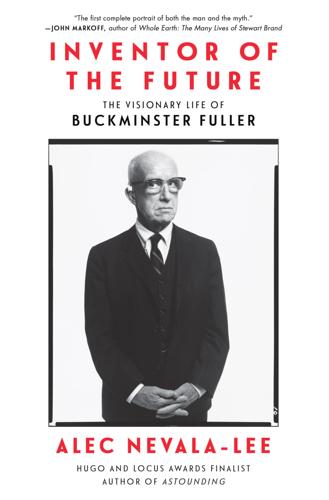
Inventor of the Future: The Visionary Life of Buckminster Fuller
by
Alec Nevala-Lee
Published 1 Aug 2022
When asked what would come after the dome, Fuller replied, “Nothing—an electromagnetic field.” This sequence paralleled the stages in his career, which started with concrete and ended with geometry, and its final phase sounded like a paradox: “Ephemeralization trends toward an ultimate doing of everything with nothing at all.” More recently, the venture capitalist Paul Graham defined it as “the increasing tendency of physical machinery to be replaced by what we would now call software,” noting that phones and tablets “have effectively drilled a hole that will allow ephemeralization to flow into a lot of new areas.” The same trend can be seen in cloud computing, the invention of the blockchain, and the inexorable integration of technology into everyday life.
…
“Nothing—an electromagnetic field”: RBF, “Domes,” in Synergetics Dictionary: The Mind of Buckminster Fuller, comp. and ed. E. J. Applewhite, 4 vols. (New York: Garland, 1986), 4186. Referred to hereafter as SD. “Ephemeralization trends toward”: RBF, Critical Path, Kiyoshi Kuromiya, adjuvant (New York: St. Martin’s Press, 1981), 234. Referred to hereafter as CP. “the increasing tendency”: Paul Graham, “Tablets,” December 2010, http://www.paulgraham.com/tablets.html (accessed January 2021). page in his wallet: Rich Heinemeyer, interviewed by author, February 17, 2020. “We owe the notion”: Yves Béhar interview, “Buckminster Fuller: Utopia Rising,” https://www.nowness.com/story/buckminster-fuller-utopia-rising (accessed February 2021).
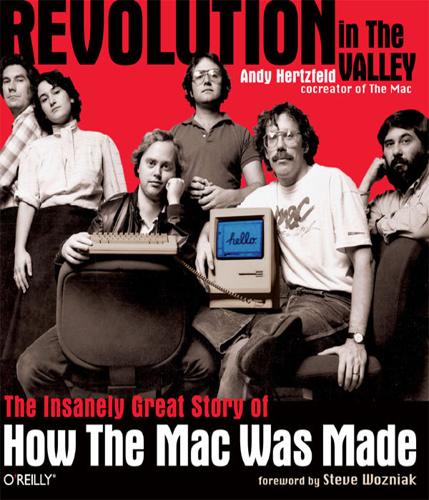
Revolution in the Valley: The Insanely Great Story of How the Mac Was Made
by
Andy Hertzfeld
Published 19 Nov 2011
Without showing it to other publishers, I signed a contract with O’Reilly in December 2003, promising a finished draft by June 2004. Tim introduced me to the talented team at his company, including my editor, Allen Noren, who specializes in O’Reilly’s more humanistic efforts (his previous two books were Dan Gillmor’s We the People and Paul Graham’s Hackers and Painters). Allen guided me through the laborious process to transform the raw material of the Folklore site into a beautiful book. After completing the writing phase in June 2004, we embarked on the editing and layout process. The first step was copyediting. All 90 or so of the stories had to be thoroughly edited, in batches of 10 at a time.
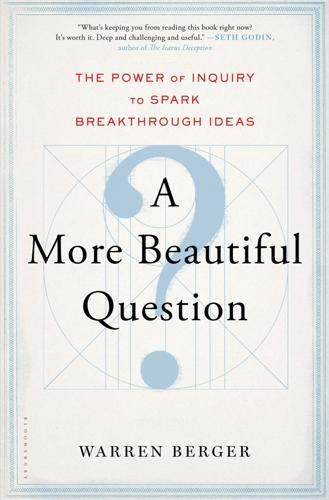
A More Beautiful Question: The Power of Inquiry to Spark Breakthrough Ideas
by
Warren Berger
Published 4 Mar 2014
What if we could create this same experience in every major city? Here is where the two dreamers ran headfirst into conventional wisdom. Initially, no one, outside of Chesky, Gebbia, and a third partner they brought on, thought this was an idea that made business sense or was worth supporting. Paul Graham, a renowned angel investor in Silicon Valley who runs the start-up incubator firm Y Combinator, believed quite simply, “No one would want to stay in23 someone else’s bed.” The idea that would eventually become Airbnb was challenging a basic assumption: that you needed established, reputable hotels to provide accommodation for out-of-town visitors.
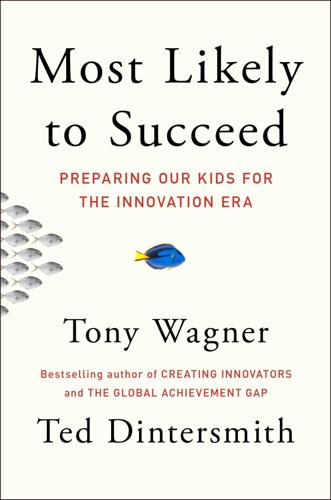
Most Likely to Succeed: Preparing Our Kids for the Innovation Era
by
Tony Wagner
and
Ted Dintersmith
Published 17 Aug 2015
For some teams, close to 15 percent of new hires have no college education.20 This Moneyball strategy will give Google a competitive advantage over more narrow-minded competitors, prompting others to rethink hiring criteria. Hands-On “Advanced Degrees”: A preview of coming attractions in advanced degrees can be found in Silicon Valley. For decades, a Stanford or Harvard MBA was pure gold in Valley hiring circles. But today innovative programs, such as Paul Graham’s Y Combinator, are giving young entrepreneurs powerful learning experiences and a “brand” as powerful as an elite MBA. Y Combinator is every bit as selective as a top business school, but with admissions criteria focused more on a person’s ideas than his or her undergraduate GPA. A young entrepreneur going to business school will study topics, start a business (now mandatory at many programs, including Harvard Business School), develop a network of contacts, and . . . pay substantially more than $100,000 in tuition.
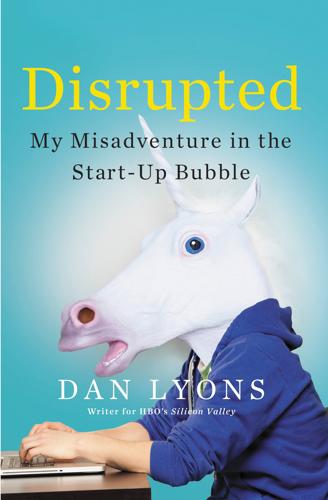
Disrupted: My Misadventure in the Start-Up Bubble
by
Dan Lyons
Published 4 Apr 2016
Almost by definition these companies are founded and run by young people. Young people are the ones who change the world. They’re filled with passion. They have new ideas. Venture capitalists openly admit they prefer to invest in twenty-something founders. “The cut-off in investors’ heads is thirty-two,” Paul Graham, who runs an incubator called Y Combinator, once said, adding that, “I can be tricked by anyone who looks like Mark Zuckerberg.” John Doerr, a legendary venture capitalist and partner at Kleiner Perkins, once said he liked to invest in “white male nerds who have dropped out of Harvard or Stanford and they have absolutely no social life.

Life After Google: The Fall of Big Data and the Rise of the Blockchain Economy
by
George Gilder
Published 16 Jul 2018
“I was impressed with Peter Thiel’s perspective,” says Shea. “Why would you want to compete with some existing company, be incrementally more efficient, and make the world only a slightly better place?” In 2014, they took a $250,000 investment and moved out to Y-Combinator in Mountain View, California, for a stint and demo. Started by the entrepreneur Paul Graham, YC was a kind of reverse Hotel California for nerds—hard to get into and easy to leave. Thiel told the Y-Combinator in 2015 to seek “apparently bad ideas” that “were actually good,” like Dropbox (cloud-based storage) and Airbnb (cloud-based lodgings). Both began nebulously at YC and now have a total market cap of many billions of dollars.
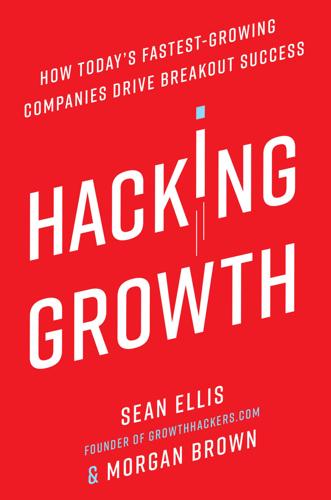
Hacking Growth: How Today's Fastest-Growing Companies Drive Breakout Success
by
Sean Ellis
and
Morgan Brown
Published 24 Apr 2017
As Facebook’s original growth team lead, Chamath Palihapitiya, wisely cautioned in one talk, “If you can’t be extremely clinical and extremely unemotionally detached from the thing that you’re building, you will make these massive mistakes and things won’t grow because you don’t understand what’s happened.”9 To clarify how dedication to improving a North Star metric helps make difficult decisions about how to spend time and resources, let’s look at how the Airbnb founders decided to conduct an experiment they thought might generate more nights booked—their North Star. To begin, they looked at their data to identify markets where bookings were lagging and, to their surprise, discovered that New York City was underachieving. Clearly, New York is a major tourist destination, so they dug in, with early investor Paul Graham of Y Combinator, to analyze why bookings weren’t stronger. Reviewing the apartment listings for the city, cofounder Joe Gebbia recalls that “the photos were really bad. People were using camera phones and taking Craigslist-quality pictures. Surprise! No one was booking because you couldn’t see what you were paying for.”
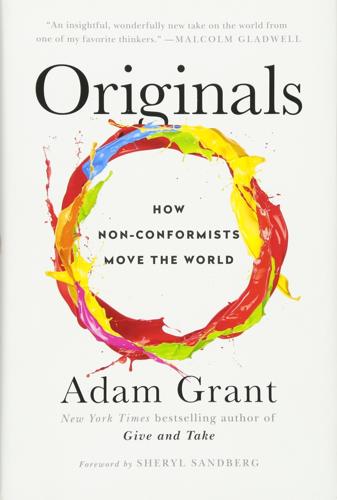
Originals: How Non-Conformists Move the World
by
Adam Grant
Published 2 Feb 2016
Why did such savvy: Personal interviews with Aileen Lee, February 6, 2015, Randy Komisar, February 13, 2015, and Bill Sahlman, March 11, 2015; Steve Kemper, Reinventing the Wheel: A Story of Genius, Innovation, and Grand Ambition (New York: HarperCollins, 2005); Hayagreeva Rao, Market Rebels: How Activists Make or Break Radical Innovations (Princeton, NJ: Princeton University Press, 2008); Mathew Hayward, Ego Check: Why Executive Hubris Is Wrecking Companies and Careers and How to Avoid the Trap (New York: Kaplan Business, 2007); Jordan Golson, “Well, That Didn’t Work: The Segway Is a Technological Marvel. Too Bad It Doesn’t Make Any Sense,” Wired, January 16, 2015, www.wired.com/2015/01/well-didnt-work-segway-technological-marvel-bad-doesnt-make-sense; Paul Graham, “The Trouble with the Segway,” July 2009, www.paulgraham.com/segway.html; Mike Masnick, “Why Segway Failed to Reshape the World: Focused on Invention, Rather Than Innovation,” Techdirt, July 31, 2009, www.techdirt.com/articles/20090730/1958335722.shtml; Gary Rivlin, “Segway’s Breakdown,” Wired, March 2003, http://archive.wired.com/wired/archive/11.03/segway.html; Douglas A.
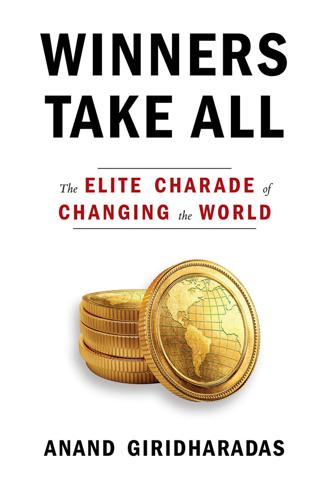
Winners Take All: The Elite Charade of Changing the World
by
Anand Giridharadas
Published 27 Aug 2018
But as we’ve seen, they actually made the situation worse by seeking to bust unions and whatever other worker protections still lingered and to remake more and more of the society as an always-on labor market in which workers were downbidding one another for millions of little fleeting gigs. “Any industry that still has unions has potential energy that could be released by start-ups,” the Silicon Valley venture capitalist Paul Graham once tweeted. As America’s level of inequality spread to ever more unmanageable levels, these MarketWorld winners might have helped out. Looking within their own communities would have told them what they needed to know. Doing everything to reduce their tax burdens, even when legal, stands in contradiction with their claims to do well by doing good.
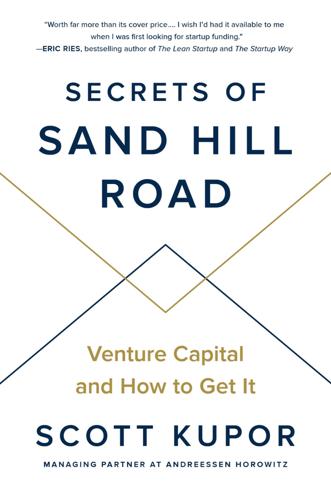
Secrets of Sand Hill Road: Venture Capital and How to Get It
by
Scott Kupor
Published 3 Jun 2019
As a startup, these changes are very significant, as they mean that the amount of money you need to raise from VCs to get started is much less than in the past. Y Combinator Cracks Open the “Black Box” The second material transformation in the startup ecosystem was the advent of an incubator known as Y Combinator (or YC for short). Started in 2005 by Paul Graham and Jessica Livingston, YC basically created startup school. Cohorts of entrepreneurs joined a “YC batch,” working in an open office space together and going through a series of tutorials and mentorship sessions over a three-month period to see what might come out the other end. Over the past thirteen years, YC has turned out nearly 1,600 promising startups, including some very well-known success stories such as Airbnb, Coinbase, Instacart, Dropbox, and Stripe.
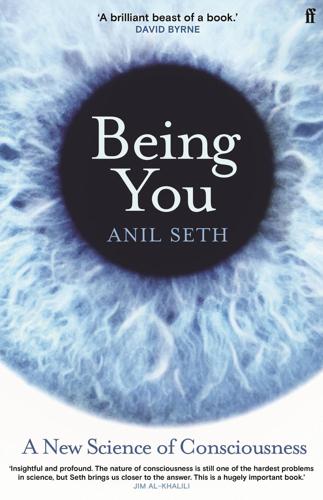
Being You: A New Science of Consciousness
by
Anil Seth
Published 29 Aug 2021
Thank you, Adam Barrett, Lionel Barnett, Peter Lush, Alberto Mariola, Yair Pinto, Warrick Roseboom, Michael Schartner, David Schwartzman, Maxine Sherman, Keisuke Suzuki, and Alexander Tschantz. Thank you also, Manuel Baltieri, Reny Baykova, Luc Berthouze, Daniel Bor, Chris Buckley, Acer Chang, Paul Chorley, Ron Chrisley, Andy Clark, Marianne Cole, Clémence Compain, Guillaume Corlouer, Hugo Critchley, Zoltán Dienes, Tom Froese, Paul Graham, Inman Harvey, Owen Holland, Ryota Kanai, Tomasz Korbak, Isabel Maranhão, Federico Micheli, Beren Millidge, Thomas Nowotny, Andy Philippides, Charlotte Rae, Colin Reveley, Ryan Scott, Lina Skora, Nadine Spychala, Marta Suarez-Pinilla, Chris Thornton, Hao-Ting Wang, and Jamie Ward – all colleagues and friends, Sussex past and present, whose work and ideas have contributed much to my own, and many of whom have been kind enough to read and comment on parts of this book.
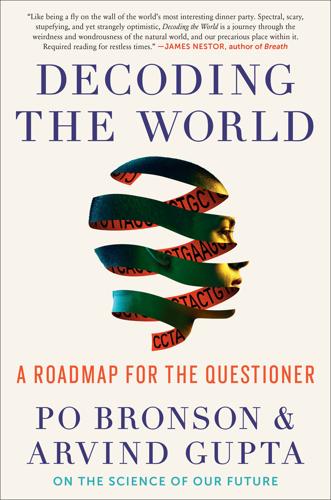
Decoding the World: A Roadmap for the Questioner
by
Po Bronson
Published 14 Jul 2020
Aaron VanDevender, Adam D’Augelli, Adam Draper, Adam Reineck, Alaa Saleh Halawa, Alan Boehme, Alan Chang, Alexander Kamb, Alex Lorestani, Amy Muhl, Andrew Hessel, Armen Vidian, Asish Xavier, Augustin Ku, Bill Gates, Bob Nelson, Brian Cork, Brian Schreier, Bruce Freidrich, Bruce Jenett, Bryan Chang, Calvin Nguyen, Celestine Johnson, Charly Chalawan, Clem Fortman, Cooper Rinzler, Costa Yiannoulis, Dan Phillips, Dan Widmaier, Dana White, David Friedberg, David Helgason, Dariush Mozaffarian, Darrin Crisitello, David Aycan, David Eagleman, Drew Endy, Dror Berman, Dylan Morris, Ela Madej, Elad Gil, Elliot Waldron, Eric Scott, Erik Moga, Francisco Gimenez, George Church, Gopi Punukollu, Harsh Patel, Hemant Taneja, Howard Shultz, Ian Rountree, Isabella Maria Jonsdottir, Jim Collins, Jake Moritz, Jason Camm, Jason Okutake, Jenny Rooke, Jeff Bezos, Jeff Harbach, Jennifer Cochran, Jennifer Doudna, Jeremy Kranz, Jerry Zeldis, Joe Luttwak, John Cumbers, John Yu, Josko Bobanovic, Jude Gomila, Kevin Hartz, Khaled Alwaleed, Kinkead Reiling, Laura Smoliar, Leonardo Teixeira, Lior Susan, Lisa Rich, Maria Gotsch, Maria Mitchell, Maria Soloveychik, Mary Wheeler, Mark Goldstein, Matias Mosse, Matias Muchnik, Matías Peire, Matias Viel, Matt Ocko, Melinda Gates, Michael Moritz, Michael Aberman, Mira Chaurushiya, Nabeel Hyatt, Nick Rosa, Nico Berman, Oleg Nodelman, Paolo Riauto, Paul Graham, Peter Kim, Reid Hoffman, Ricardo Gomes, Richard Branson, Roger Wyse, Rohan and Taj, Rohit Sharma, Ron Shigeta, Rosie Wardle, Ryan Bethencourt, Scott Banister, Scott Nolan, Seth Bannon, Shahin Farshchi, Shirl Buss, Solina Chau, Steve Jurvetson, Steve Kim, Steinnun Hjartar, Steve Sanger, Taylor Sittler, Tim Brown, Tim Draper, Timothy Lu, Tom Aiello, Tom Baruch, Tom Chi, Tony Envin, Uma Valeti, Victoria Slivkoff, Vijay Pande, Vinod Khosla and Whitney Mortimer.

Coding Freedom: The Ethics and Aesthetics of Hacking
by
E. Gabriella Coleman
Published 25 Nov 2012
While much of this stems from noble traditions of SmallTalk and ML [they are computer languages], much of it also fails to realize the point of these ancestral languages: categorization (such as through strict typing and object models) is itself a form of computation. When this fact is not respected, you wind up with a bastardized language that is [ … ] Anal. Perl was designed by a linguist, and realizes that people have different things to say in different contexts, and your language is defined by the environment and not vice versa. As Paul Graham said, both the world and programming is a “Big Ball of Mud,” which perl has evolved around. The implicit variables, the open object model, the terse expressions all contribute to hacking on the Big Ball of Mud. Finally, there is a very pragmatic reason to like perl: It will save your ass. Those who are fluent enough in the culture to realize that “this problem has been solved before,” will be able to invoke forces through perl.

Genius Makers: The Mavericks Who Brought A. I. To Google, Facebook, and the World
by
Cade Metz
Published 15 Mar 2021
Though Musk soon left OpenAI, the lab’s ambitions only grew under Altman. Sam Altman was a Silicon Valley archetype: In 2005, he founded a social networking company as a twenty-year-old college sophomore. The company was called Loopt, and it eventually raised $30 million in venture capital, including one of the first investments made by Y Combinator and its founder Paul Graham. Seven years later, Loopt’s social networking service was shut down after being sold at a loss for its investors. But this was a successful exit for Altman, a trim, compact man with sharp green eyes and a particular talent for raising money. Graham soon announced that he was stepping down as president of Y Combinator, and he named Altman as his replacement, an appointment that surprised many across the family of Y Combinator companies.
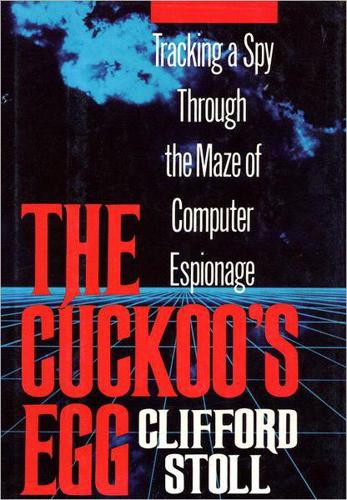
Cuckoo's Egg
by
Clifford Stoll
Published 2 Jan 1989
So Bob Morris’ son froze two thousand computers. Why? To impress his dad? As a halloween prank? To show off to a couple thousand computer programmers? Whatever his purposes were, I don’t believe he was in cahoots with his father. Rumors have it that he worked with a friend or two at Harvard’s computing department (Harvard student Paul Graham sent him mail asking for “Any news on the brilliant project”), but I doubt his father would encourage anyone to create a virus. As Bob Morris, Sr., said, “This isn’t exactly a good mark for a career at NSA.” After dissecting the code, MIT’s Jon Rochlis characterized the virus as “not very well written.”

Whole Earth Discipline: An Ecopragmatist Manifesto
by
Stewart Brand
Published 15 Mar 2009
Then ask, What do we know? Put together the knowledge about the situation and what facts may be missing both about the actual topic and the players and power relationships involved. Finally, What will we accept? You don’t have to go public with your acceptance strategy, but it should be thought through.” Programmer Paul Graham: “Find (a) simple solutions (b) to overlooked problems (c) that actually need to be solved, and (d) deliver them as informally as possible, (e) starting with a very crude version 1.0, then (f) iterating rapidly.” (Iterating rapidly is how squatters build cities and the Bradley sisters eliminate alien-invasive plants.)
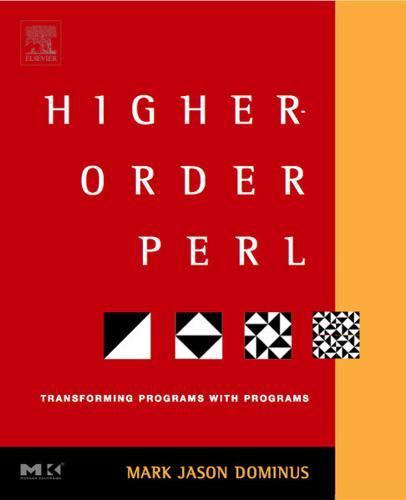
Higher-Order Perl: A Guide to Program Transformation
by
Mark Jason Dominus
Published 14 Mar 2005
He also sent me periodic mail to remind me how wonderful my book was, which often arrived at times when I wasn’t so sure. Several specific ideas in Chapter 4 were suggested by other people. Meng Wong suggested the clever and apt “odometer” metaphor. Randal Schwartz helped me with the “append” function. Eric Roode suggested the multiple list iterator. When I needed to read out-of-print books by Paul Graham, A. E. Sundstrom lent them to me. When I needed a copy of volume 2 of The Art of Computer Programming, Hildo Biersma and Morgan Stanley bought it for me. When I needed money, B. B. King lent me some. Thanks to all of you. The constraint system drawing program of Chapter 9 was a big project, and I was stuck on it for a long time.
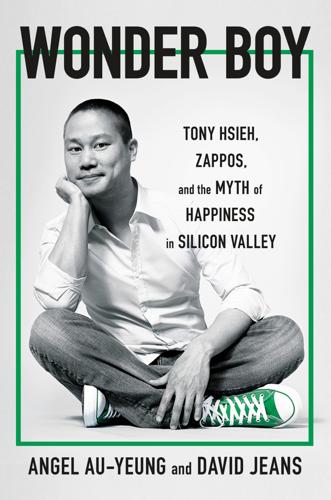
Wonder Boy: Tony Hsieh, Zappos, and the Myth of Happiness in Silicon Valley
by
Angel Au-Yeung
and
David Jeans
Published 25 Apr 2023
It was the fairy tale that Tony had envisioned for himself and his friends all along. But even fairy tales have an ending. Tony’s time at LinkExchange was soon marred by internal politics and drama that led to lessons learned. In 1997, as the dot-com era was in full swing, Ali had started discussions with Viaweb, a newer startup led by Paul Graham (who would later launch the storied startup accelerator Y Combinator), about merging their businesses. Just as the discussions were starting to finalize, Jerry Yang came knocking again. He offered $125 million for Yahoo to buy LinkExchange. It was a lot of money, and enough to do away with any previous hesitations Tony, Ali, and Sanjay might have had.
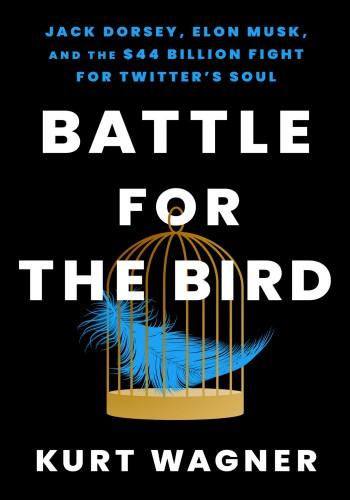
Battle for the Bird: Jack Dorsey, Elon Musk, and the $44 Billion Fight for Twitter's Soul
by
Kurt Wagner
Published 20 Feb 2024
“We recognize that many of our users are active on other social media platforms,” read one of the tweets that was later deleted. “However, we will no longer allow free promotion of certain social media platforms on Twitter.” The uproar from Twitter users was both instantaneous and incredulous. “This is just sad,” wrote Aaron Levie, the CEO of the enterprise software company Box, and an avid Tweeter. Paul Graham, a well-known Silicon Valley investor who tweeted often at Musk, called it the “last straw” and posted a link for people to follow him on Mastodon. (His Twitter account was then temporarily suspended.) Even Edward Snowden chimed in. “This is a bad policy and should be reversed,” he wrote. To Musk, the policy seemed obvious, and at first he tried to defend it by saying that “traditional” publishing companies would never let competing outlets advertise for free.
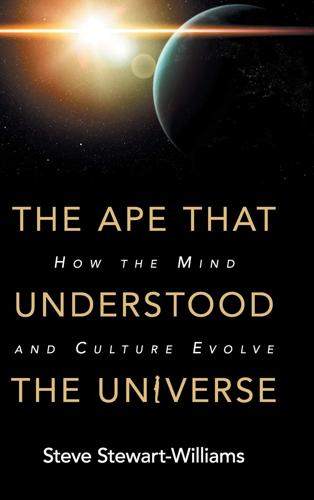
The Ape That Understood the Universe: How the Mind and Culture Evolve
by
Steve Stewart-Williams
Published 12 Sep 2018
Ultimately, memes are selected for one reason and one reason only: because they have properties that keep them in circulation in the meme pool. From this modest starting point, some rather profound consequences follow. First, through cultural competition, memes get better and better at surviving and spreading. Food gets more appetizing; music gets catchier; stories get more appealing. As Paul Graham put it, the world gets more addictive.68 Second, given enough time, memes start falling into mutually supportive clusters, known in the trade as memeplexes. Memeplexes include everything from calculus to political ideologies. Like genes in a genome, the memes of a memeplex may coevolve and coordinate with one another.
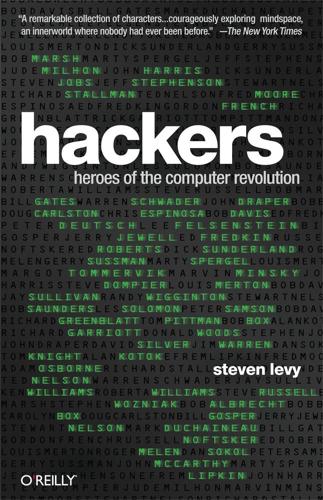
Hackers: Heroes of the Computer Revolution - 25th Anniversary Edition
by
Steven Levy
Published 18 May 2010
It’s one outpost in a growing number of "Hacker Spaces" across the country devoted to empowering formerly isolated and underequipped gearheads. “I am a sensei of the dojo, which as you may know is a grand revered master,” he says, a wide grin on his face. “Felsenstein sensei.” • • • • • • • • Greenblatt, Stallman, and Felsenstein see hacking as a set of ideals. But Paul Graham sees it as a humming economic engine. The forty-five-year-old Internet guru, himself a fanatic engineer in his day, is a cofounder of Y Combinator, an incubator for Internet startups. Twice a year, his company runs American Idol-style contests to select twenty to thirty budding companies to participate in a three-month boot camp, culminating in a demo day packed with Angel investors, VCs, and acquisition-hungry companies like Google and Yahoo.

Power and Progress: Our Thousand-Year Struggle Over Technology and Prosperity
by
Daron Acemoglu
and
Simon Johnson
Published 15 May 2023
One founder stated that “very few are contributing enormous amounts to the greater good, be it by starting important companies or leading important causes.” It was also generally accepted that those few seen as contributing to the public good by launching new businesses should be handsomely rewarded. As the Silicon Valley entrepreneur Paul Graham, one of Businessweek’s “twenty-five most influential people on the web,” put it, “I’ve become an expert on how to increase economic inequality, and I’ve spent the past decade working hard to do it.… You can’t prevent great variations in wealth without preventing people from getting rich, and you can’t do that without preventing them from starting startups.”

The Code: Silicon Valley and the Remaking of America
by
Margaret O'Mara
Published 8 Jul 2019
It was about that “pattern recognition” so fatefully identified by John Doerr, looking for the next Stanford or Harvard dropout with a wild but brilliant idea. Of all those assertions, Doerr’s slip-up came closest to the heart of the Valley’s secret. “West Coast investors aren’t bolder because they’re irresponsible cowboys, or because the good weather makes them optimistic,” wrote Paul Graham, founder of the Valley’s most influential tech incubator, Y Combinator, in 2007. “They’re bolder because they know what they’re doing.” The Valley power players knew the tech, knew the people, and knew the formula that worked. They looked for “grade-A men” (who very occasionally were women) from the nation’s best engineering and computer science programs, or from the most promising young companies, and who had validation from someone else they already knew.

Tools of Titans: The Tactics, Routines, and Habits of Billionaires, Icons, and World-Class Performers
by
Timothy Ferriss
Published 6 Dec 2016
That’s my cue to exit stage left completely, especially when I can do work I love (e.g., writing) with ¹⁄₁₀ the energy expenditure. I need to stop sowing the seeds of my own destruction. How Much of Your Life Is Making Versus Managing? How Do You Feel About the Split? One of my favorite time-management essays is “Maker’s Schedule, Manager’s Schedule” by Paul Graham of Y Combinator fame. Give it a read. As investor Brad Feld and many others have observed, great creative work isn’t possible if you’re trying to piece together 30 minutes here and 45 minutes there. Large, uninterrupted blocks of time—3 to 5 hours minimum—create the space needed to find and connect the dots.
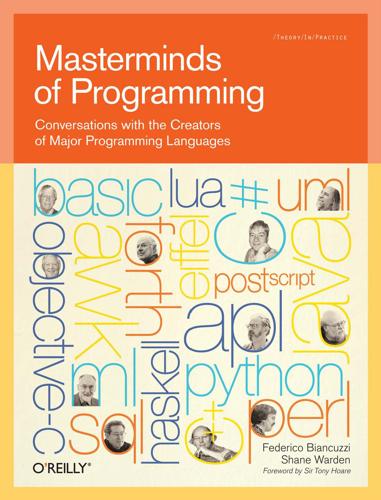
Masterminds of Programming: Conversations With the Creators of Major Programming Languages
by
Federico Biancuzzi
and
Shane Warden
Published 21 Mar 2009
What is so great about Haskell is that it provides a framework for creating these DSLs easily and effectively. It’s not a perfect methodology, but it’s pretty darn good. Philip: Functional languages make it easy to extend the language within the language. Lisp and Scheme are brilliant examples of this; read Paul Graham[16] on how Lisp was the secret weapon in building one of the earliest web applications (which later became a Yahoo! product), and in particular how Lisp macros were key to building this software. Haskell also provides a number of features that make it easy to extend the power of the language, including lambda expressions, laziness, monad notation, and (in GHC) template Haskell for metaprogramming.

Enlightenment Now: The Case for Reason, Science, Humanism, and Progress
by
Steven Pinker
Published 13 Feb 2018
Gottschall, J. 2012. The storytelling animal: How stories make us human. Boston: Houghton Mifflin Harcourt. Gottschall, J., & Wilson, D. S., eds. 2005. The literary animal: Evolution and the nature of narrative. Evanston, IL: Northwestern University Press. Graham, P. 2016. The refragmentation. Paul Graham Blog. http://www.paulgraham.com/re.html. Grayling, A. C. 2007. Toward the light of liberty: The struggles for freedom and rights that made the modern Western world. New York: Walker. Grayling, A. C. 2013. The God argument: The case against religion and for humanism. London: Bloomsbury. Greene, J. 2013.
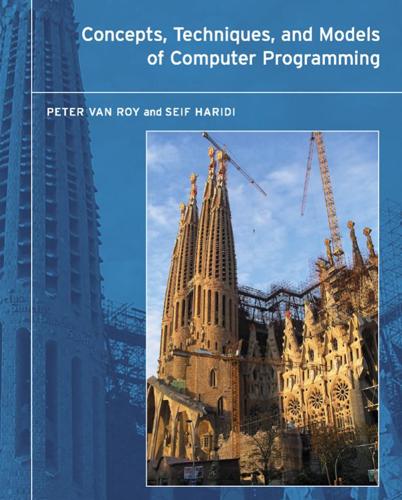
Concepts, Techniques, and Models of Computer Programming
by
Peter Van-Roy
and
Seif Haridi
Published 15 Feb 2004
O’Reilly & Associates, Sebastopol, CA, 2002. [69] [70] James Edward Gordon. The Science of Structures and Materials. Scientific American 856 References Library, 1988. [71] [72] James Gosling, Bill Joy, and Guy Steele. The Java Language Specification. Addison-Wesley, 1996. Available at http://www.javasoft.com. Paul Graham. On Lisp. Prentice Hall, Englewood Cliffs, NJ, 1993. Available for download from the author. [73] Jim Gray and Andreas Reuter. Transaction Processing: Concepts and Techniques. Morgan Kaufmann, San Mateo, CA, 1993. [74] Donatien Grolaux. QTk: Graphical user interface design for Oz, 2003. Available at http://www.mozart-oz.org/mozart-stdlib/index.html.
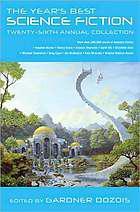
The Year's Best Science Fiction: Twenty-Sixth Annual Collection
by
Gardner Dozois
Published 23 Jun 2009
Cambias, Garth Nix, David Hartwell, Ginjer Buchanan, Susan Allison, Shawna McCarthy, Kelly Link, Gavin Grant, John Klima, John O’Neill, Rodger Turner, Tyree Campbell, Stuart Mayne, John Kenny, Edmund Schubert, Tehani Wessely, Tehani Croft, Karl Johanson, Sally Beasley, Connor Cochran, Tony Lee, Joe Vas, John Pickrell, Ian Redman, Anne Zanoni, Kaolin Fire, Ralph Benko, Paul Graham Raven, Nick Wood, David Moles, Mike Allen, Jason Sizemore, Karl Johanson, Sue Miller, David Lee Summers, Christopher M. Cevasco, Tyree Campbell, Andrew Hook, Vaughne Lee Hansen, Mark Watson, Sarah Lumnah, and special thanks to my own editor, Marc Resnick. Thanks are also due to Charles N. Brown, whose magazine Locus (Locus Publications, P.

Rationality: From AI to Zombies
by
Eliezer Yudkowsky
Published 11 Mar 2015
If you can think of ways to pull the rope sideways, you are justified in expending your limited resources on relatively less common issues where marginal discussion offers relatively higher marginal payoffs. But then the responsibilities that you deprioritize are a matter of your limited resources. Not a matter of floating high above, serene and Wise. My reply to Paul Graham’s comment on Hacker News seems like a summary worth repeating: There’s a difference between: Passing neutral judgment; Declining to invest marginal resources; Pretending that either of the above is a mark of deep wisdom, maturity, and a superior vantage point; with the corresponding implication that the original sides occupy lower vantage points that are not importantly different from up there